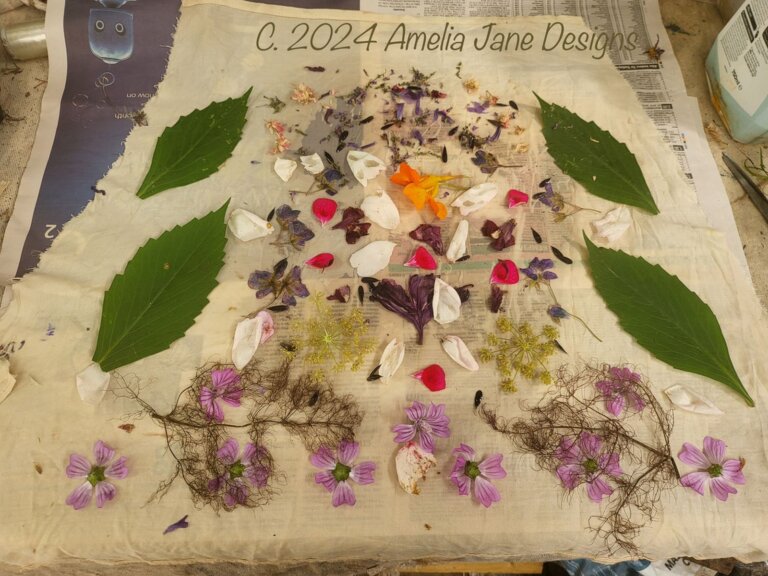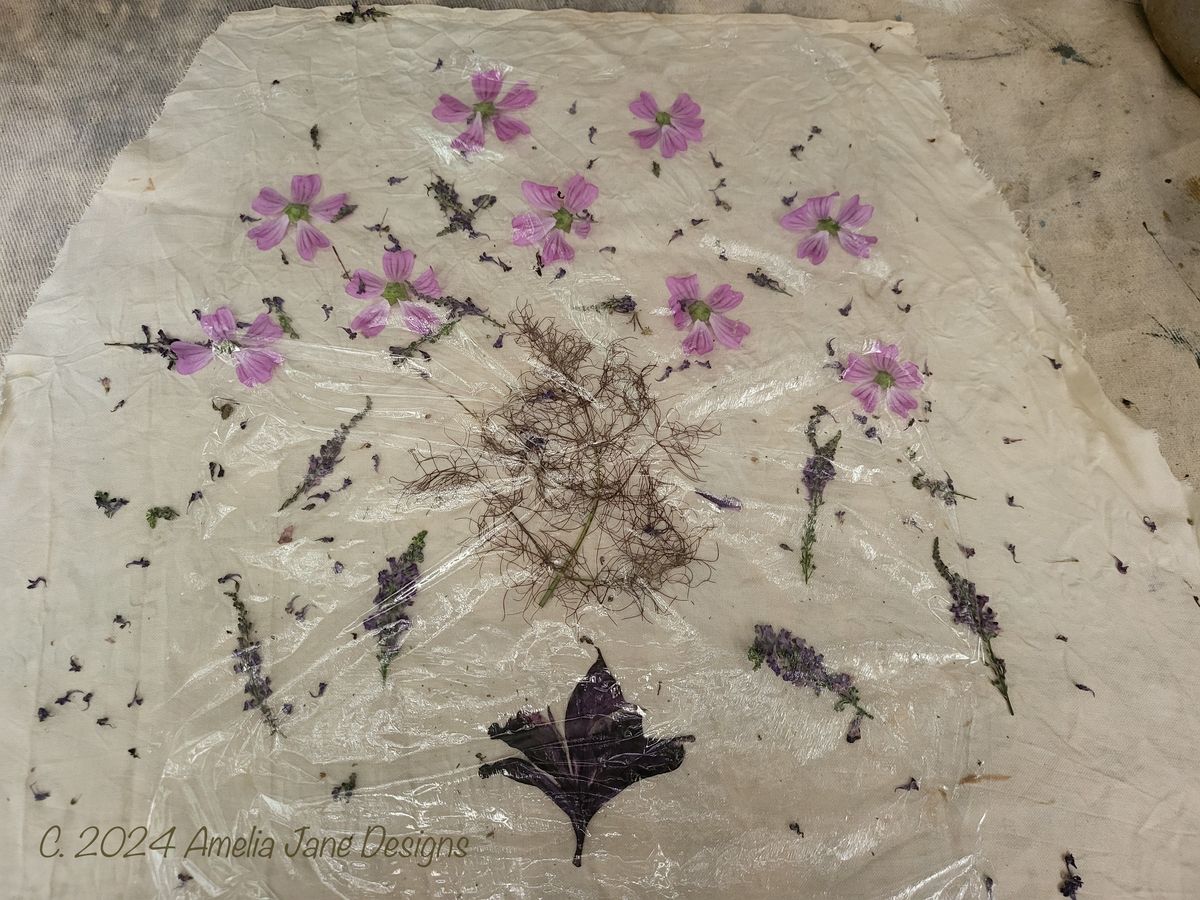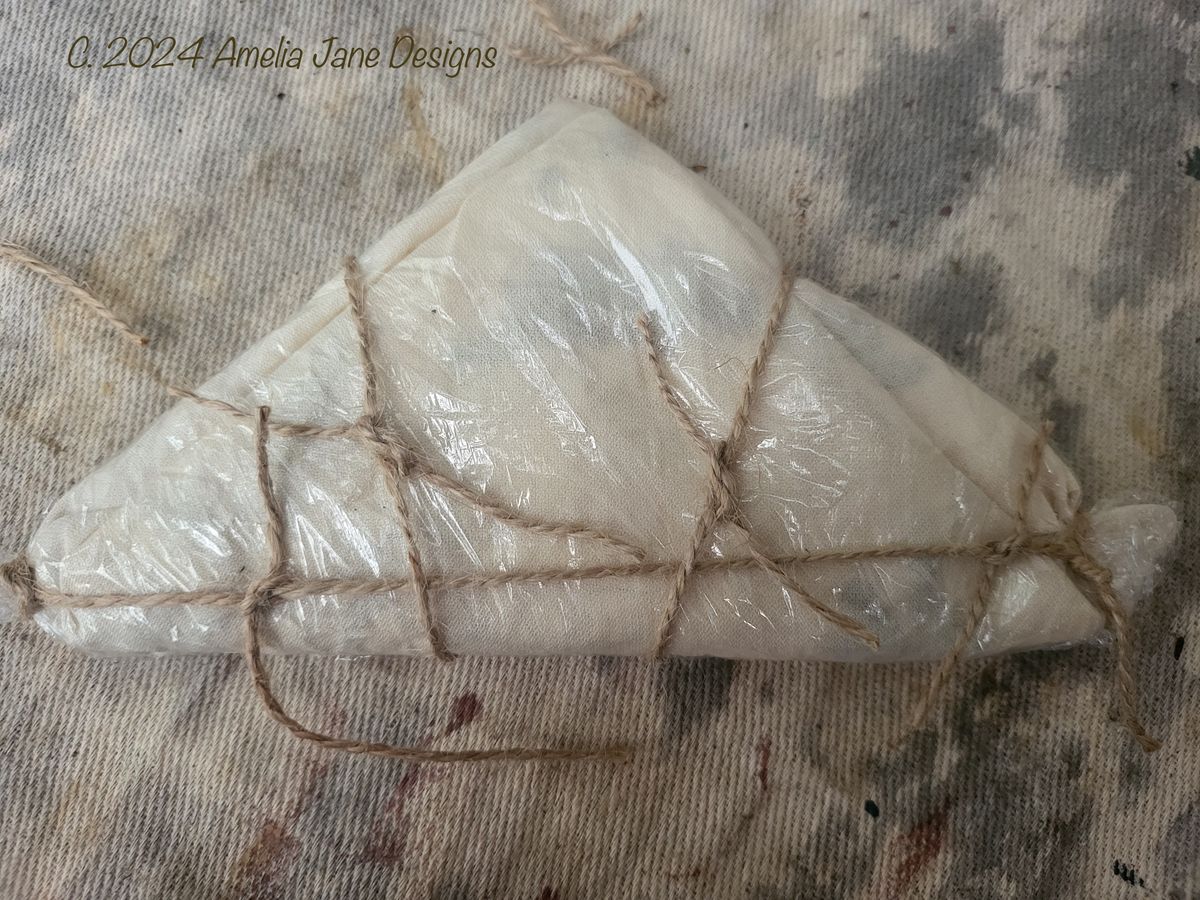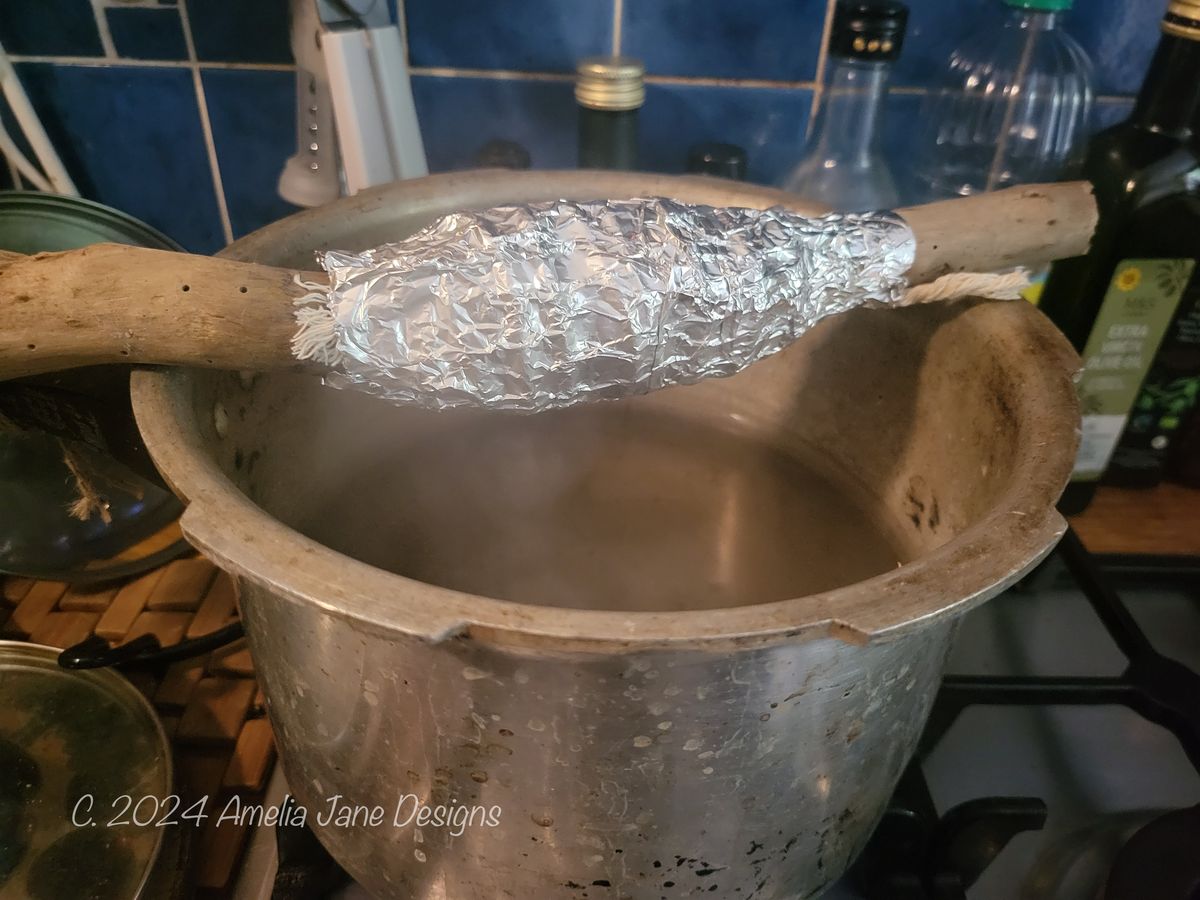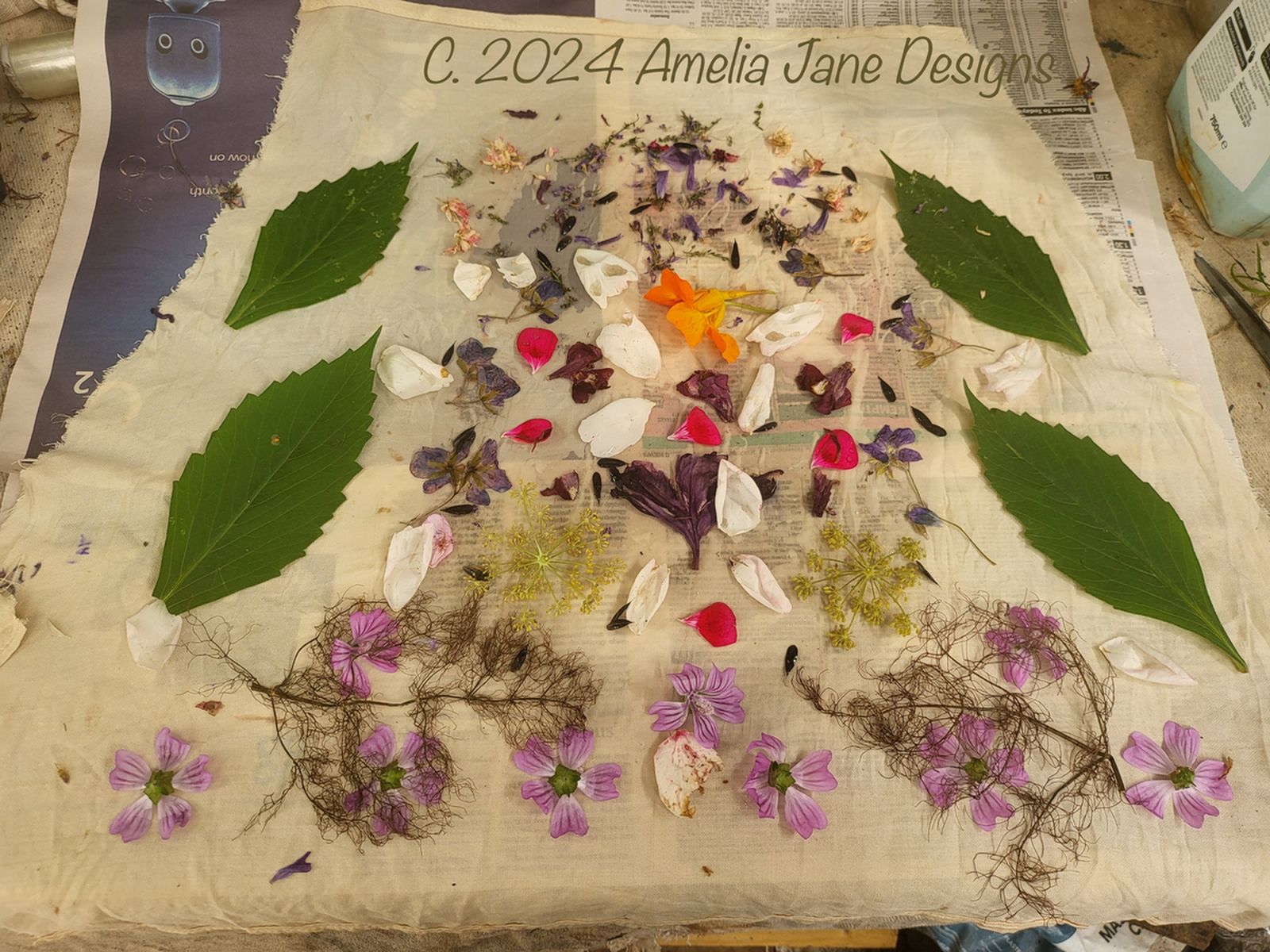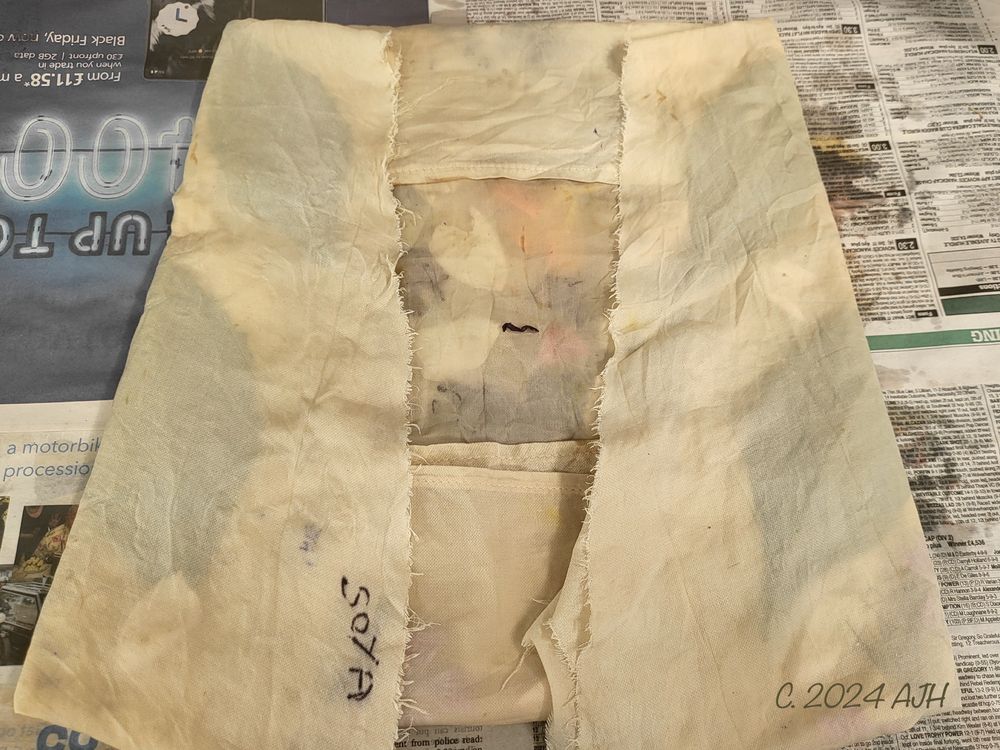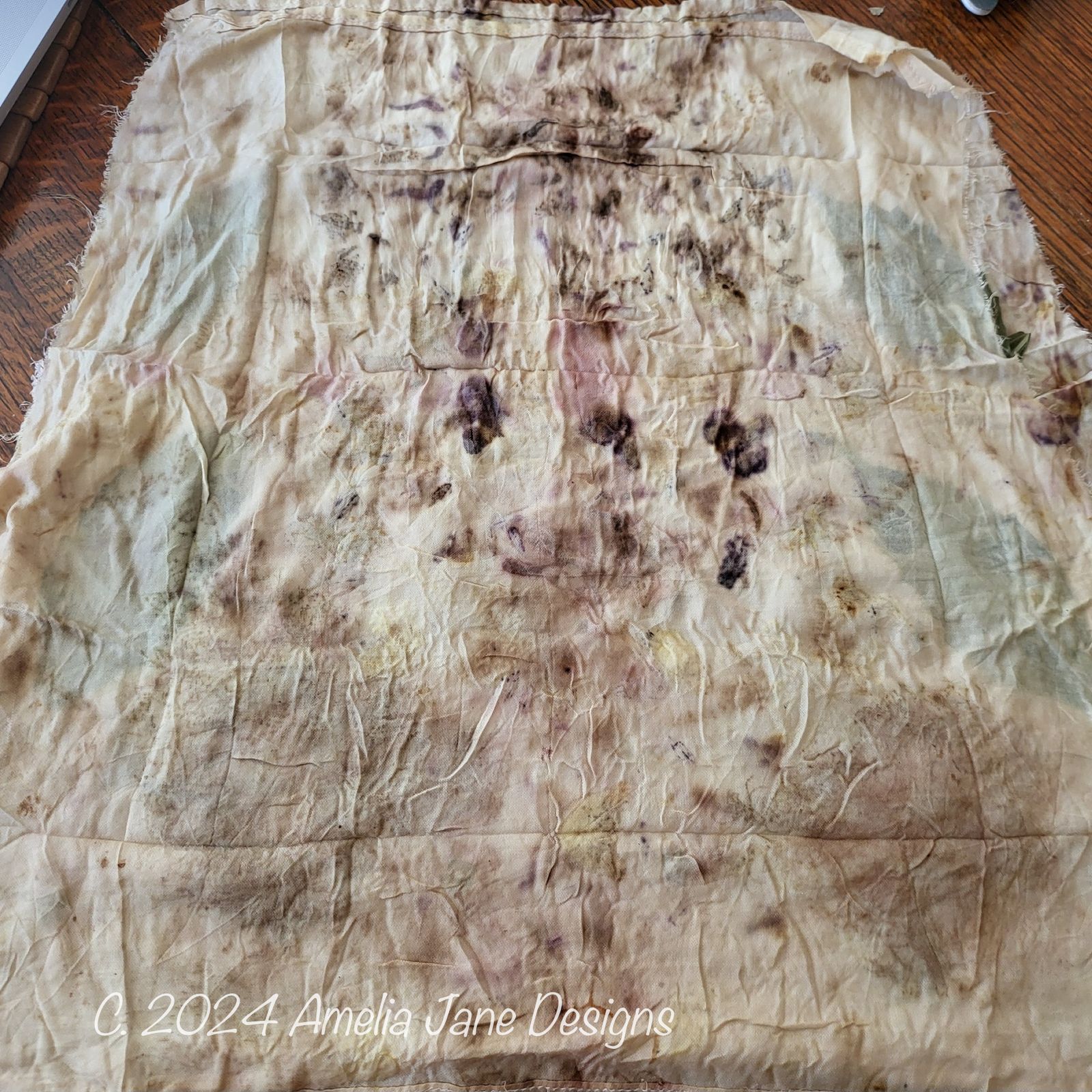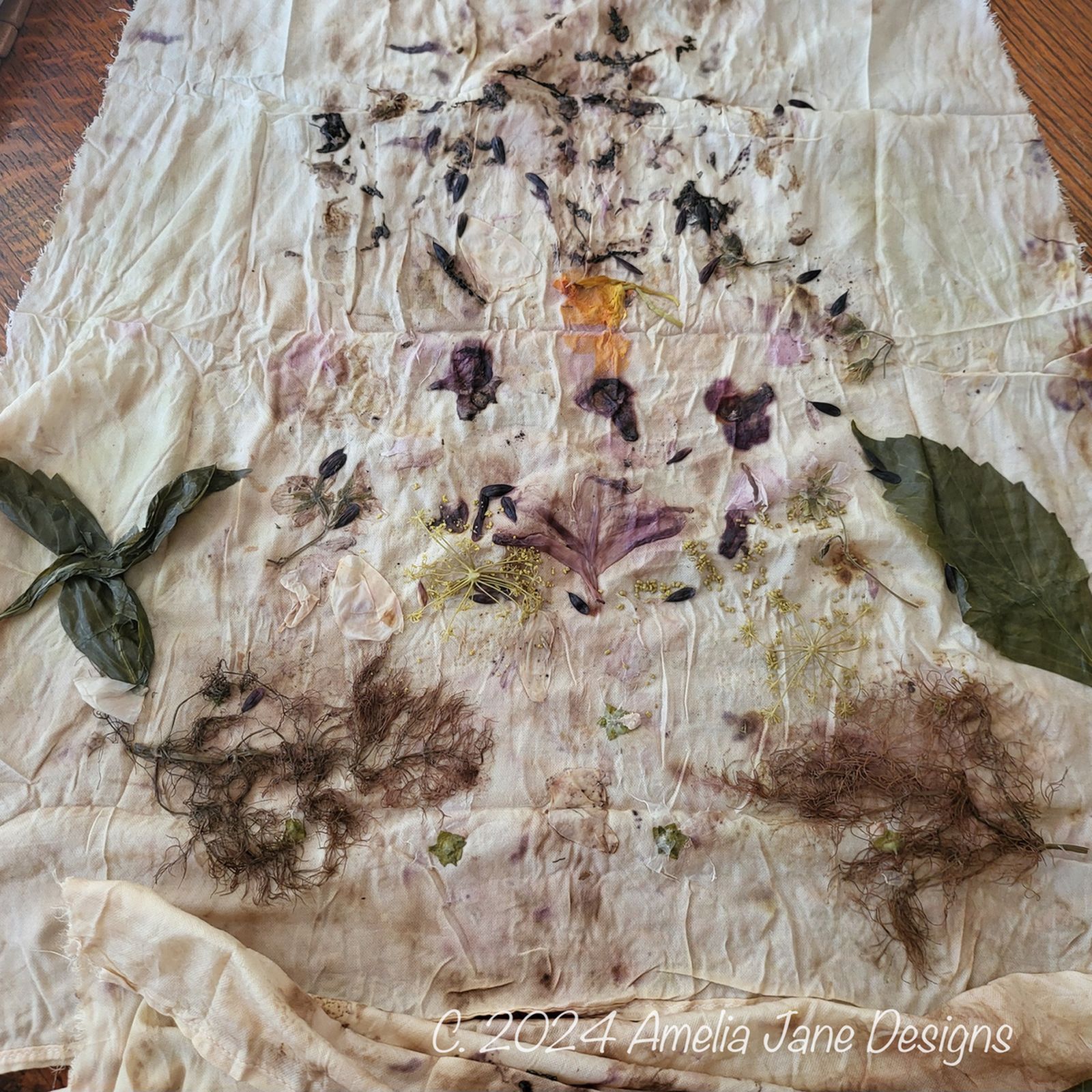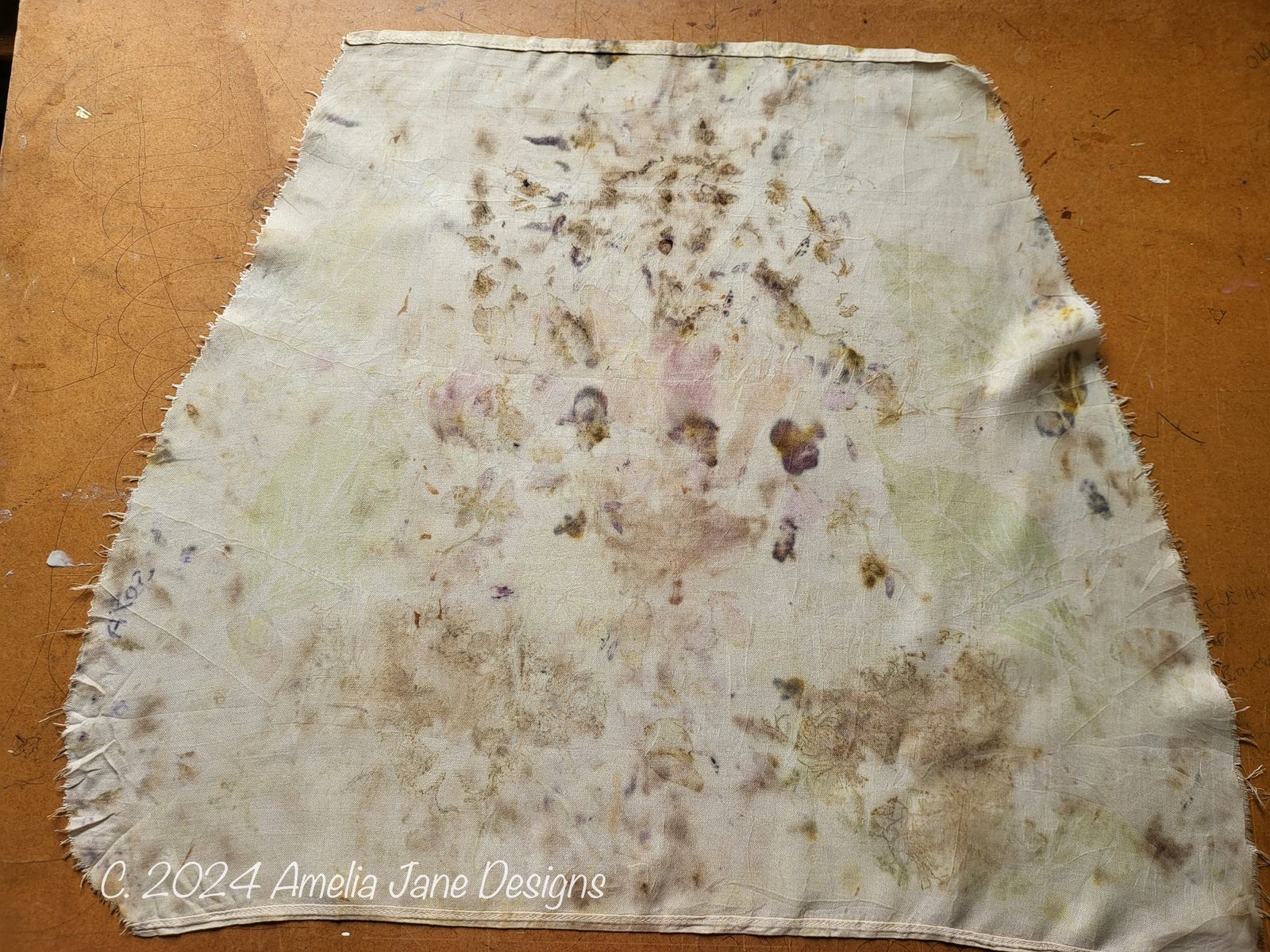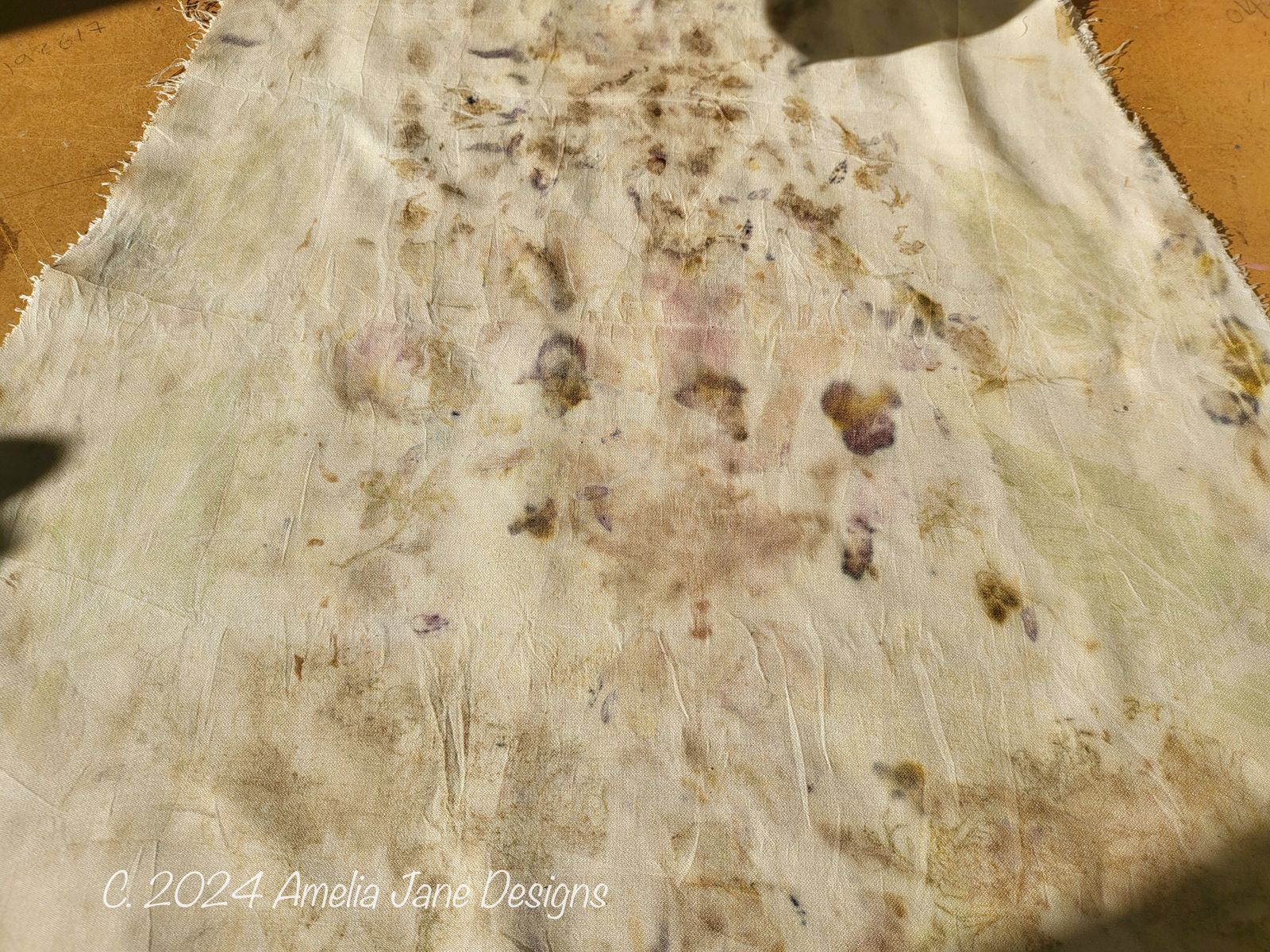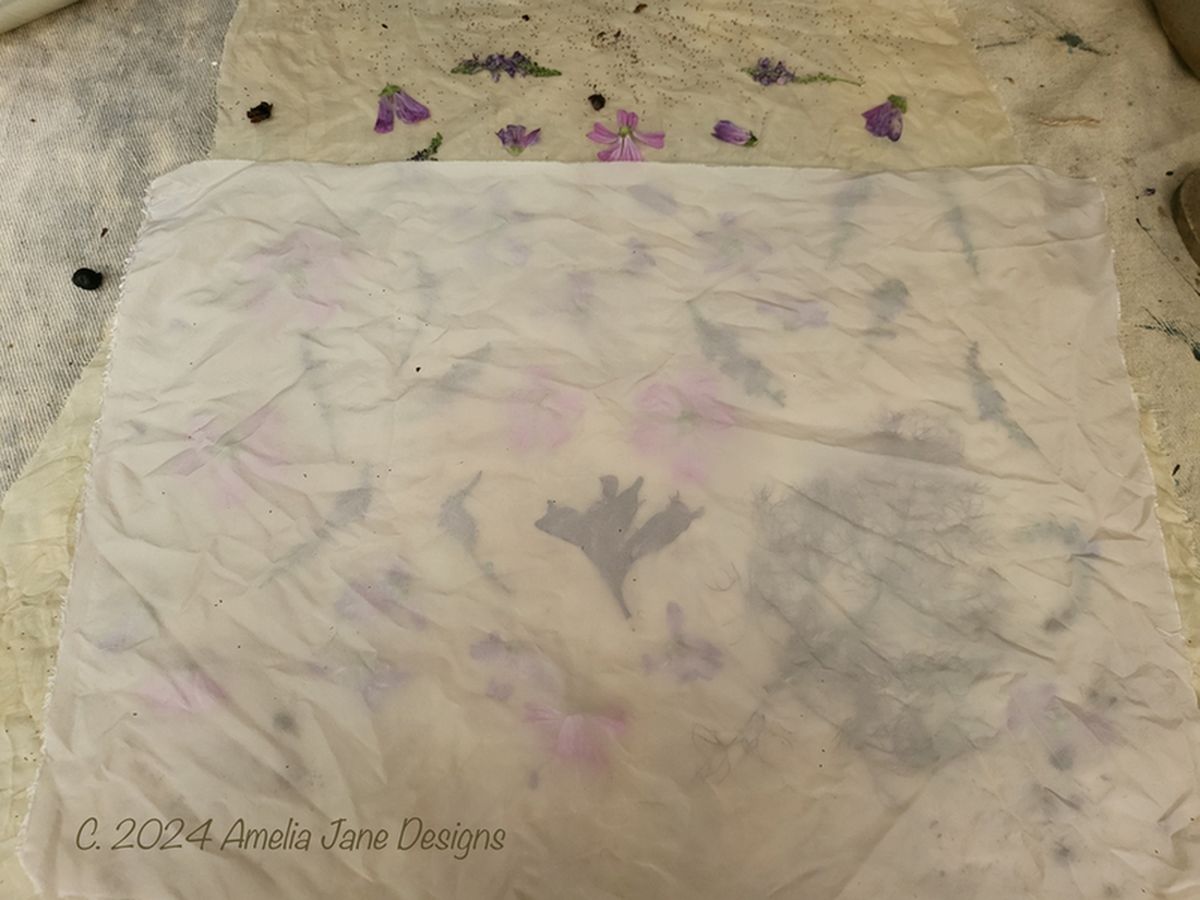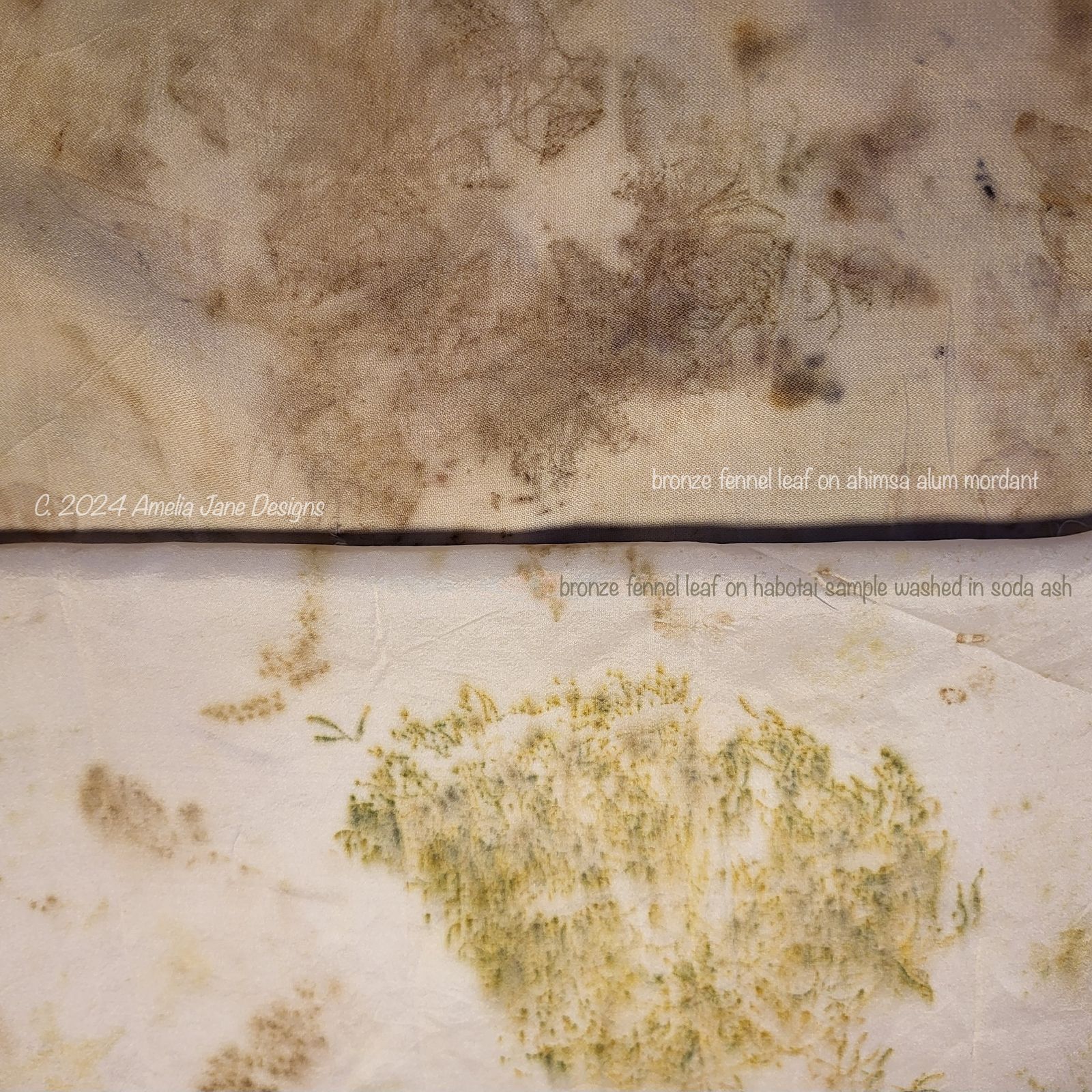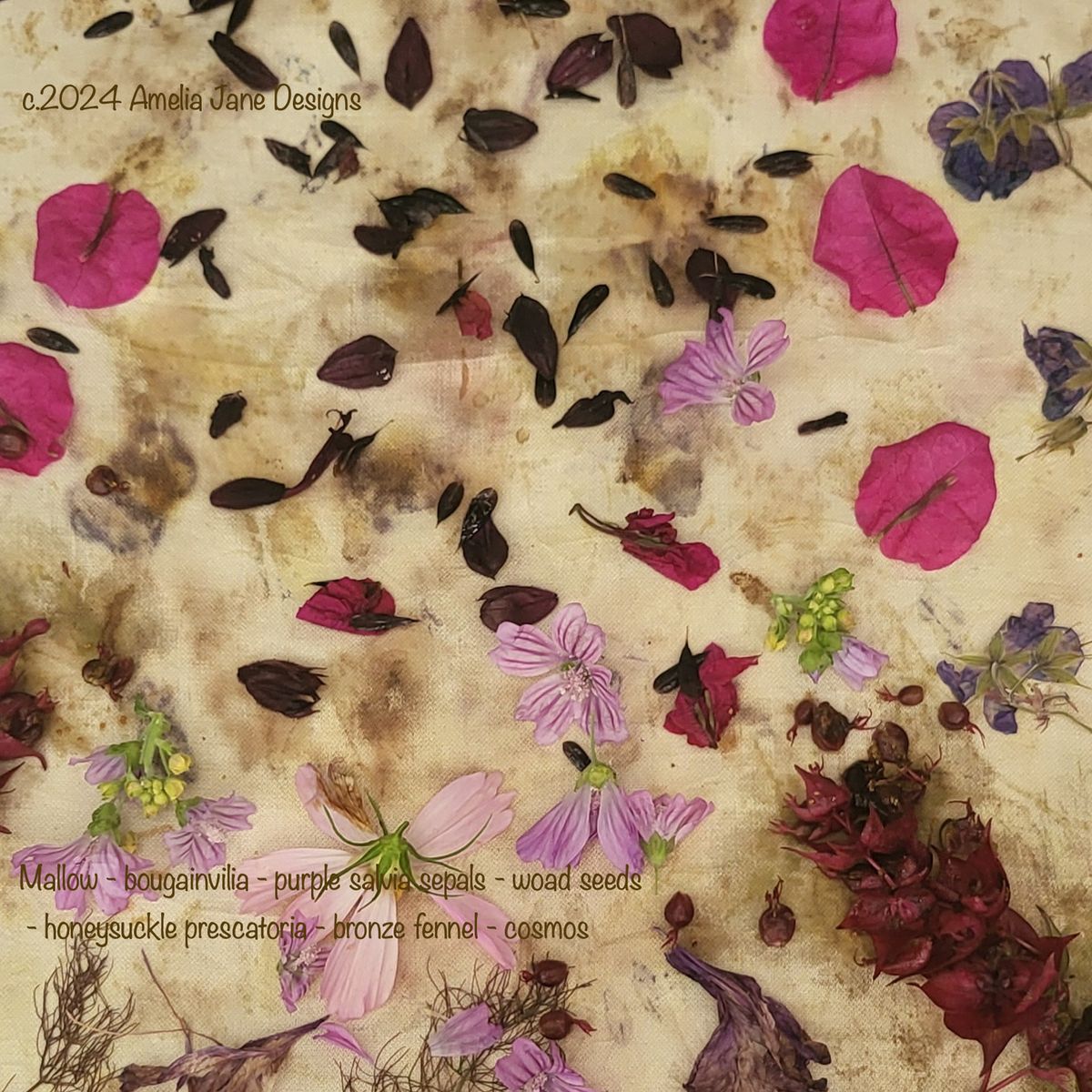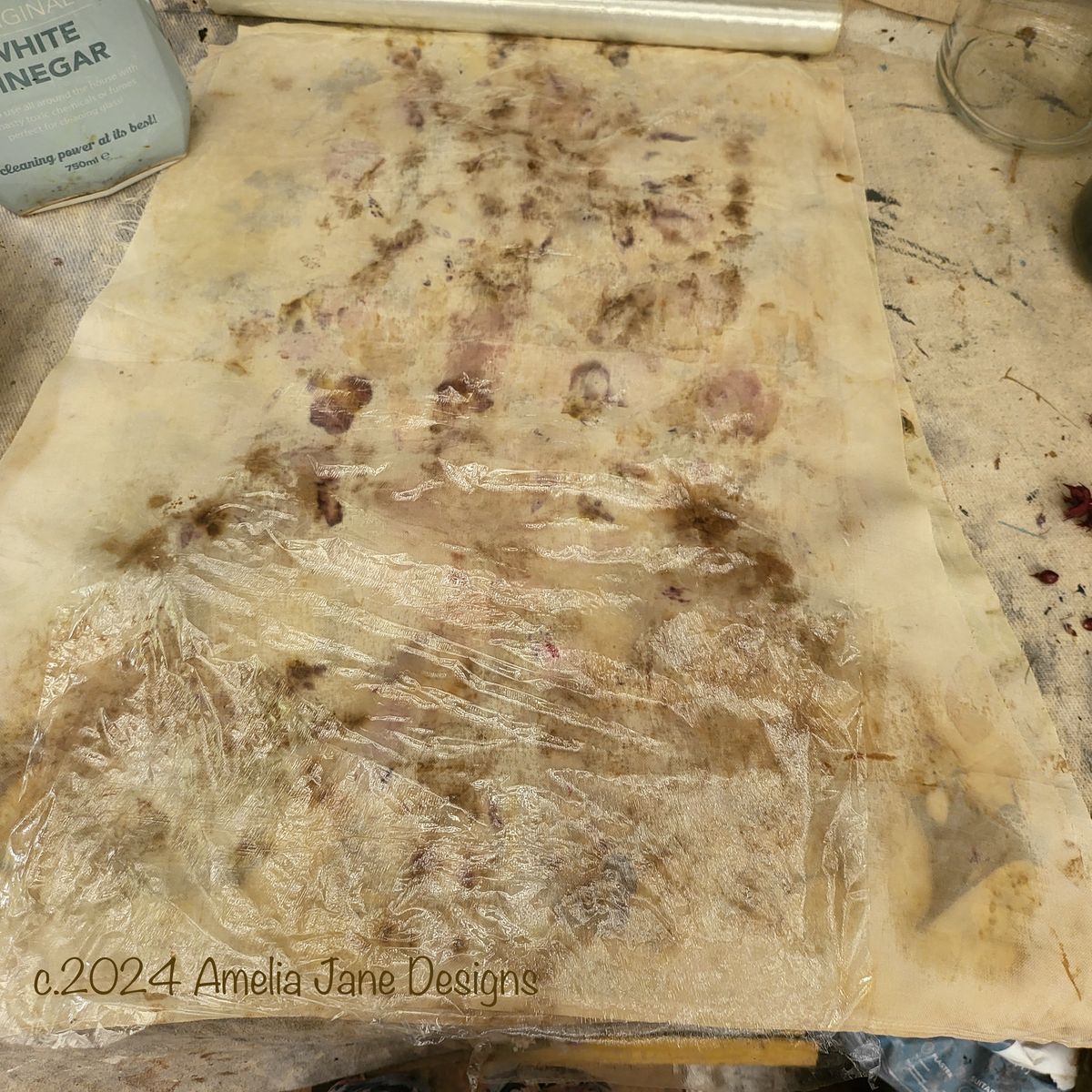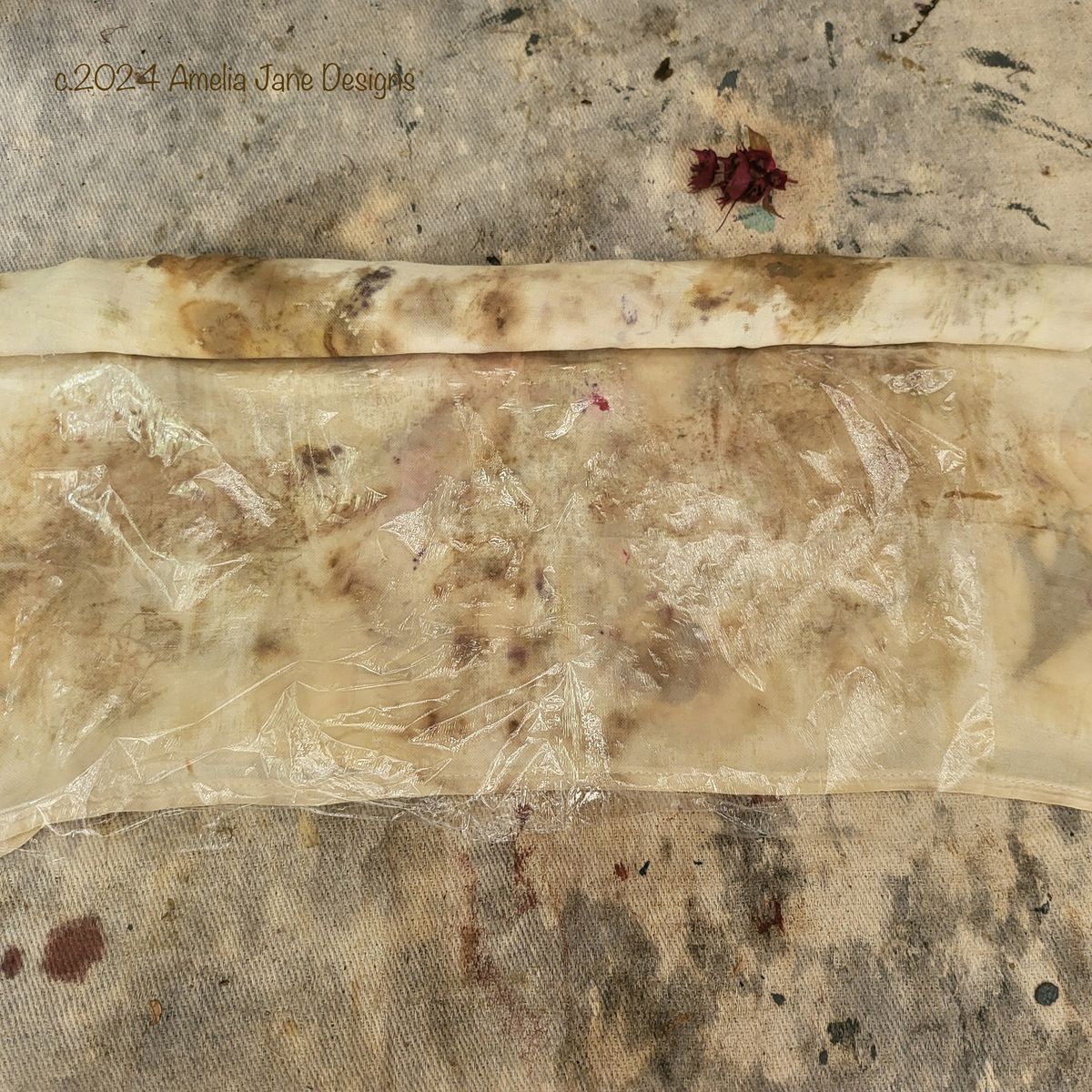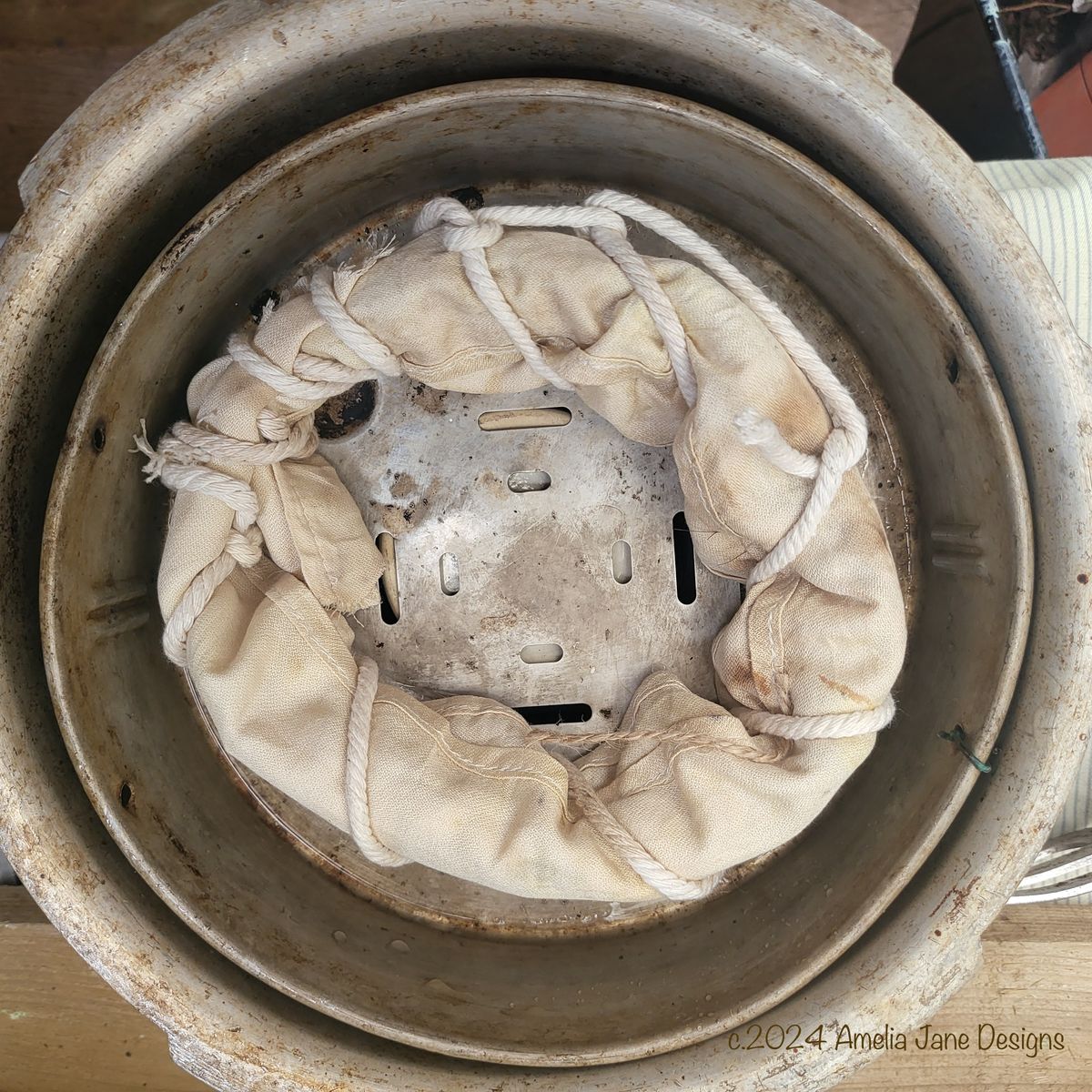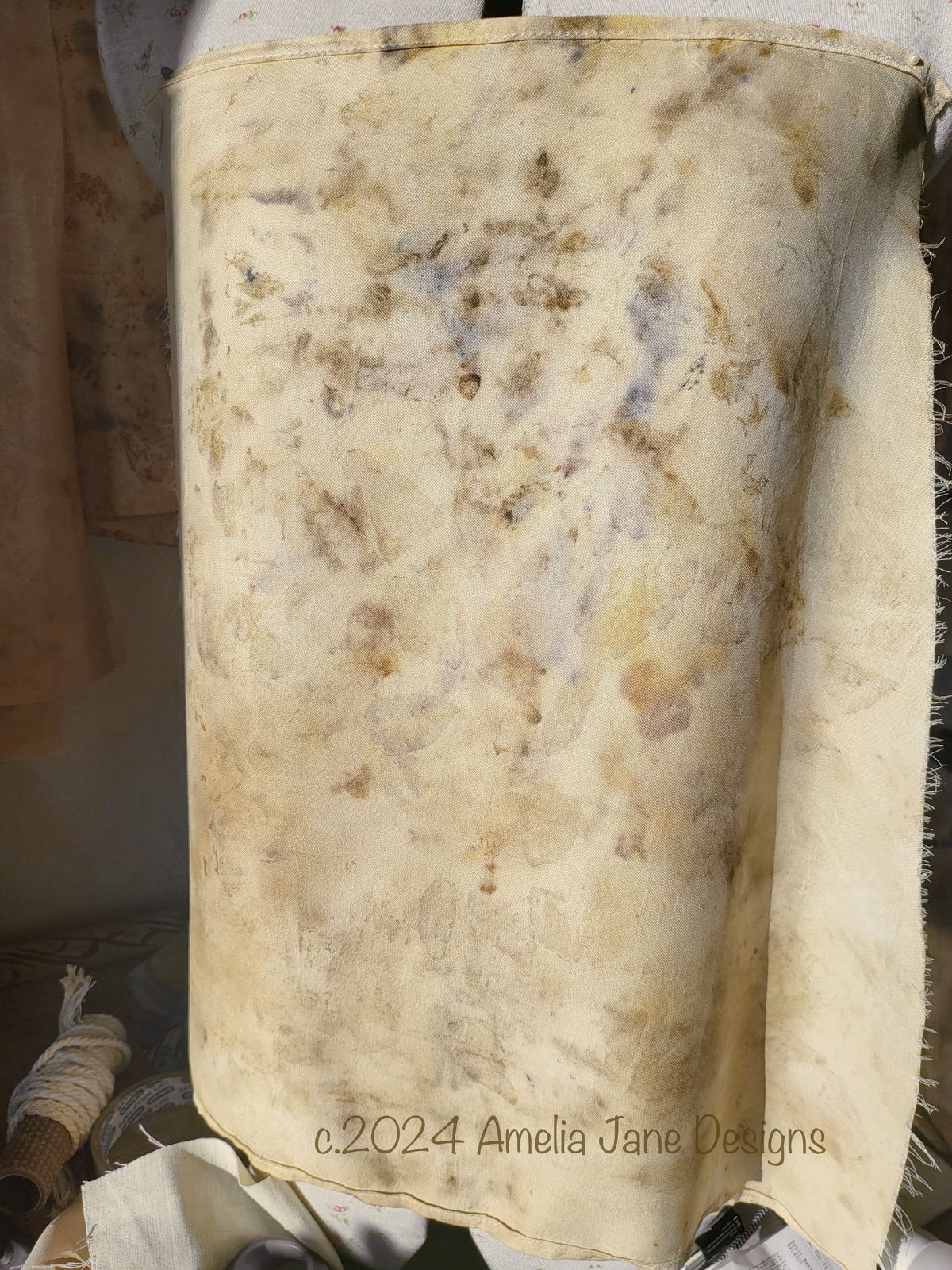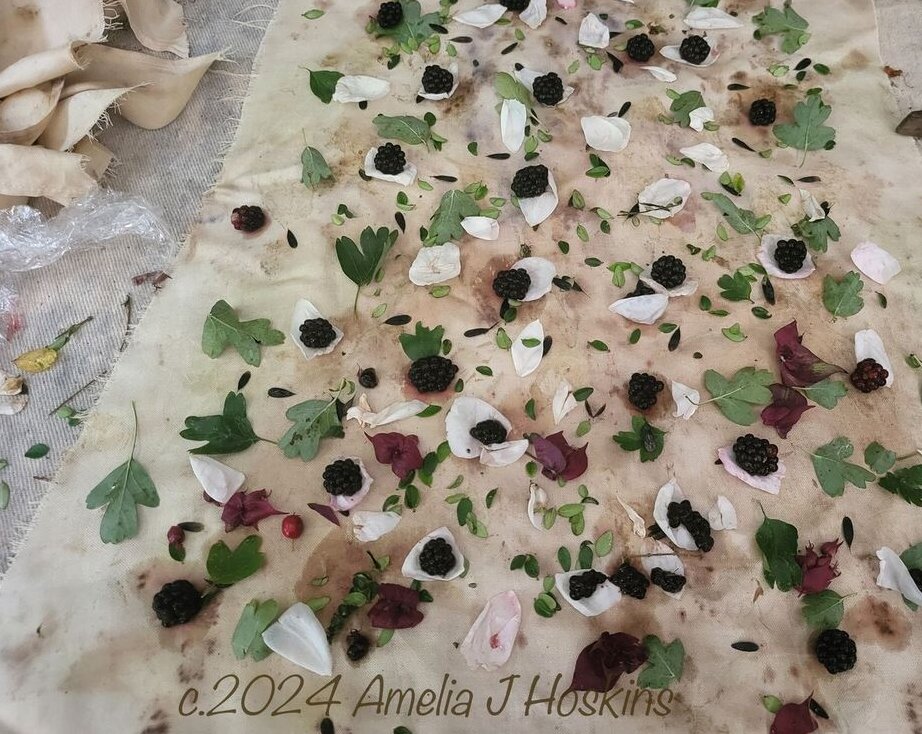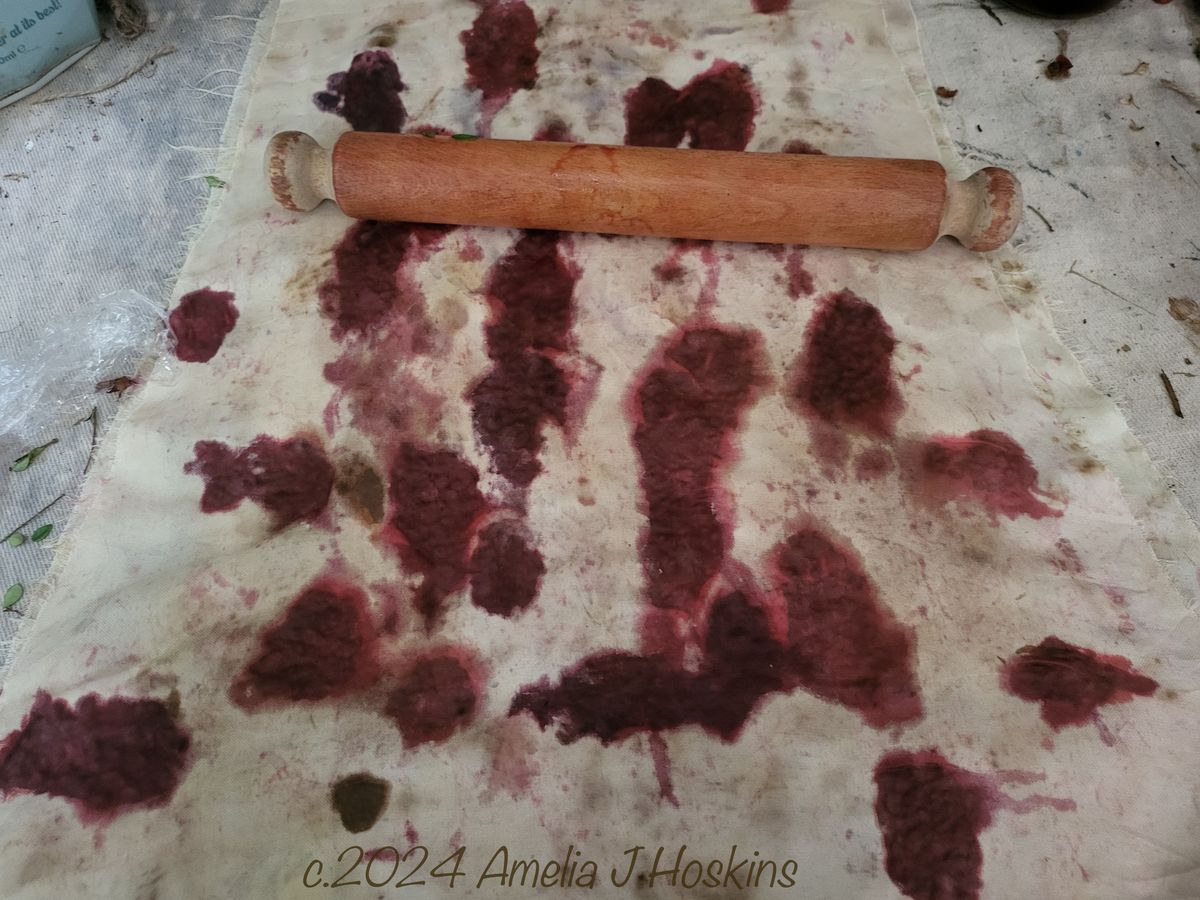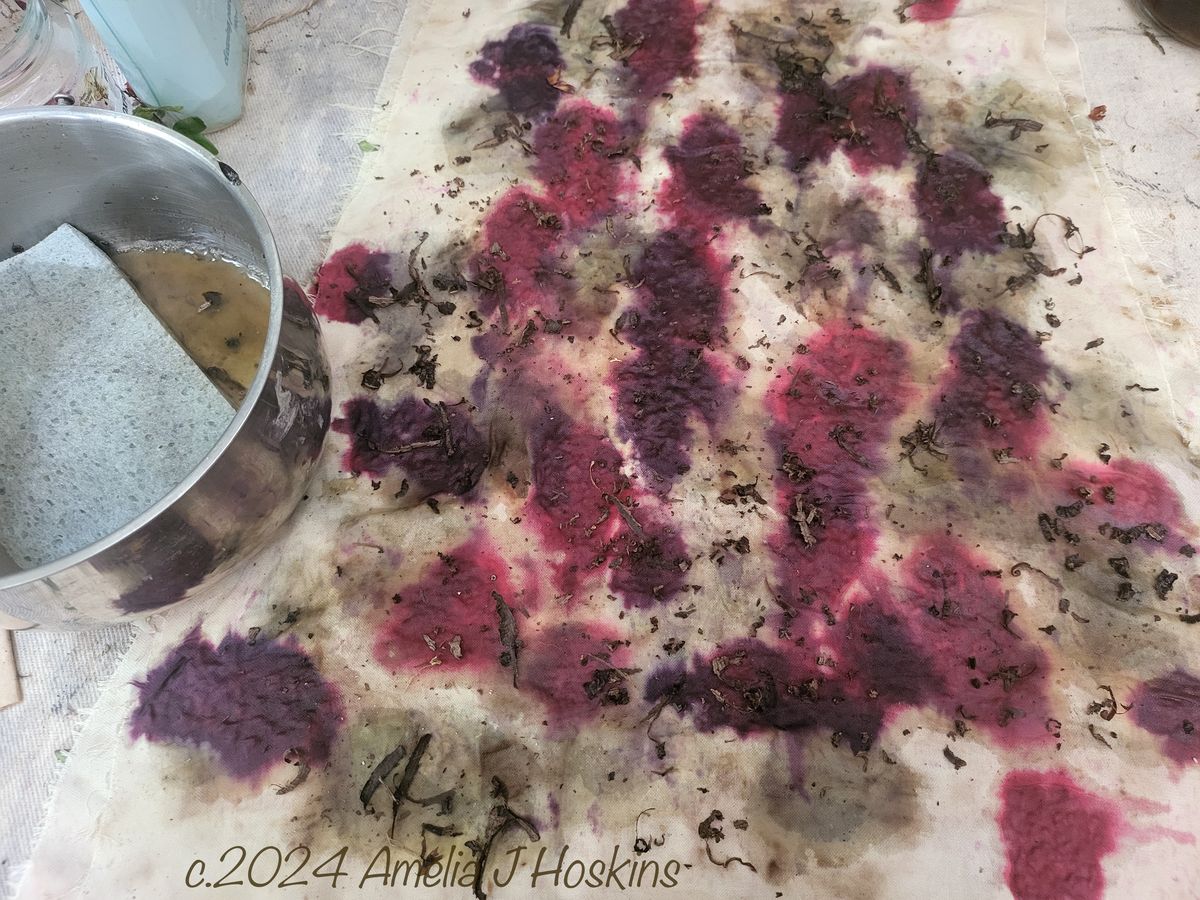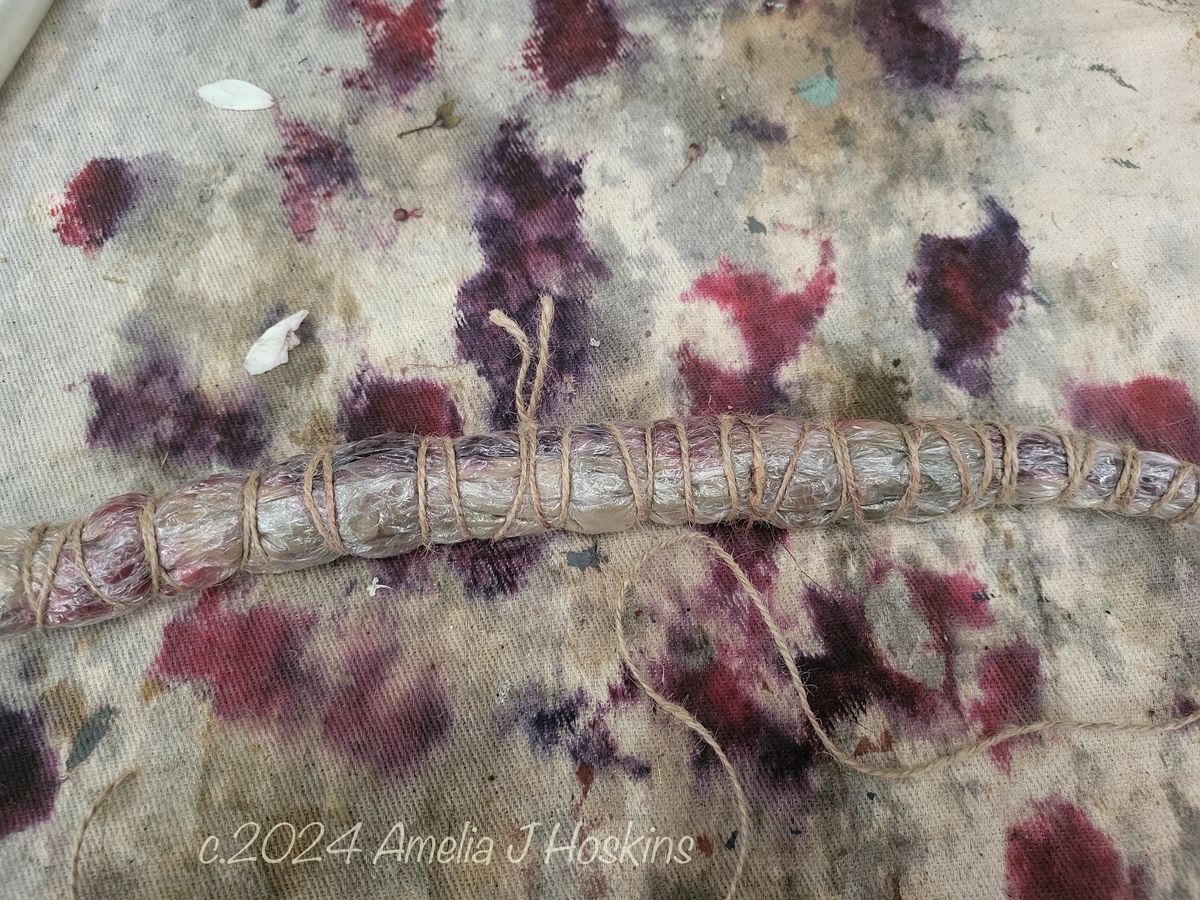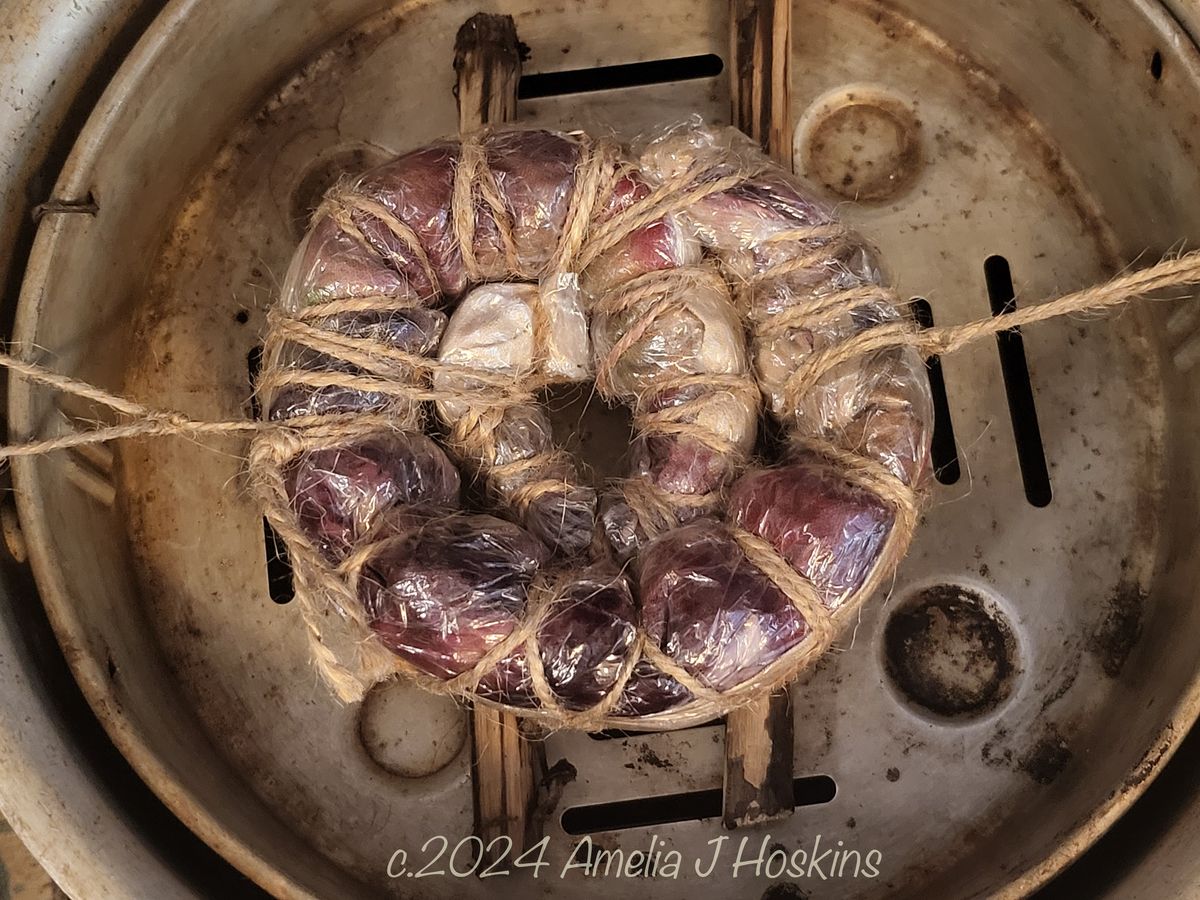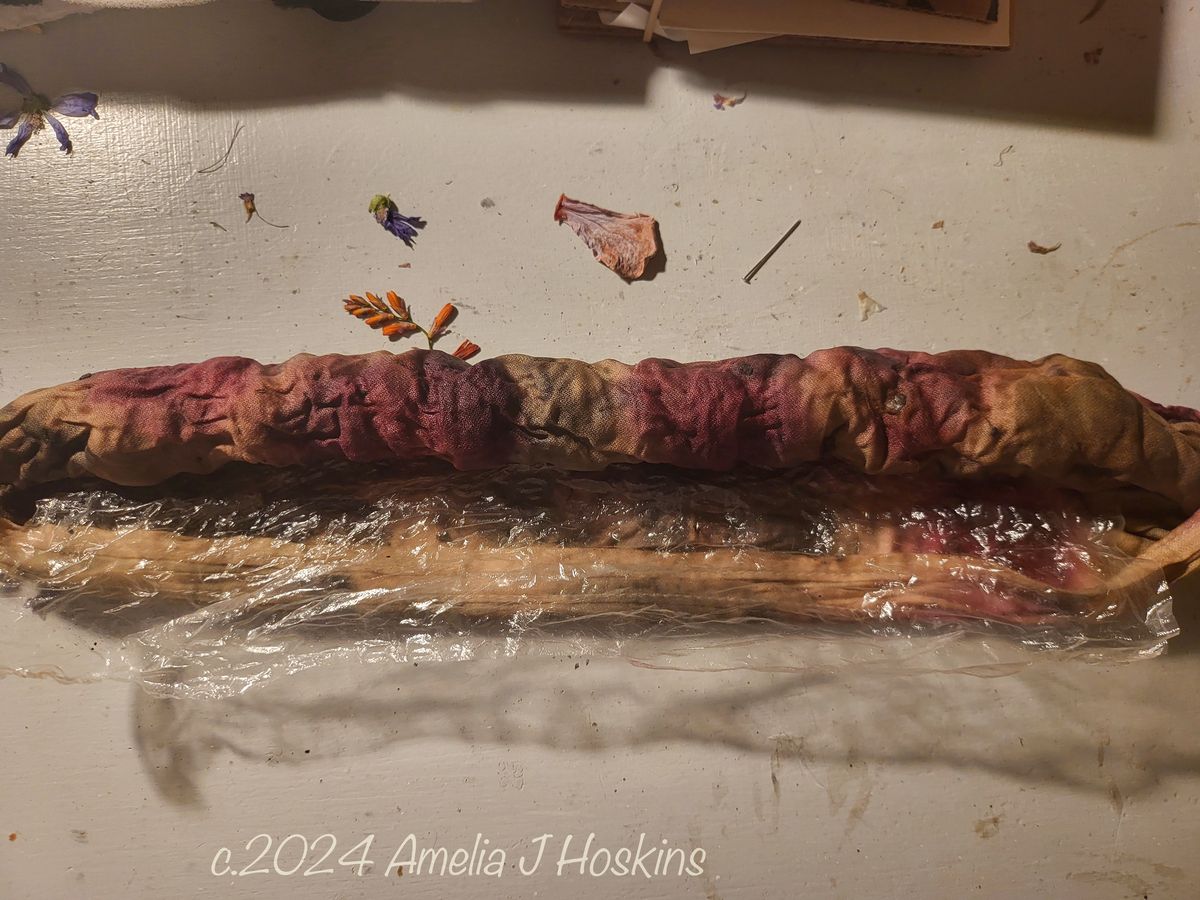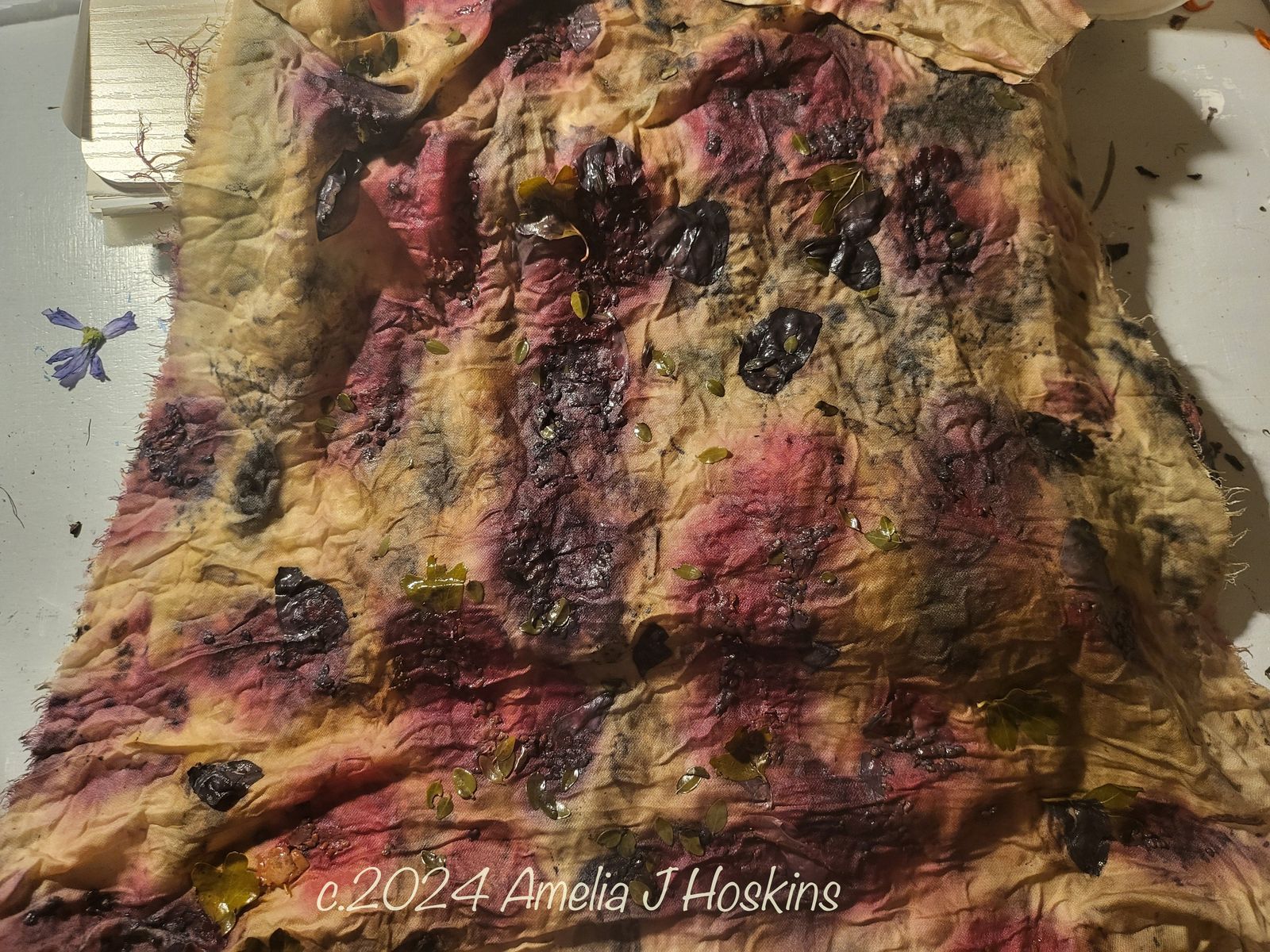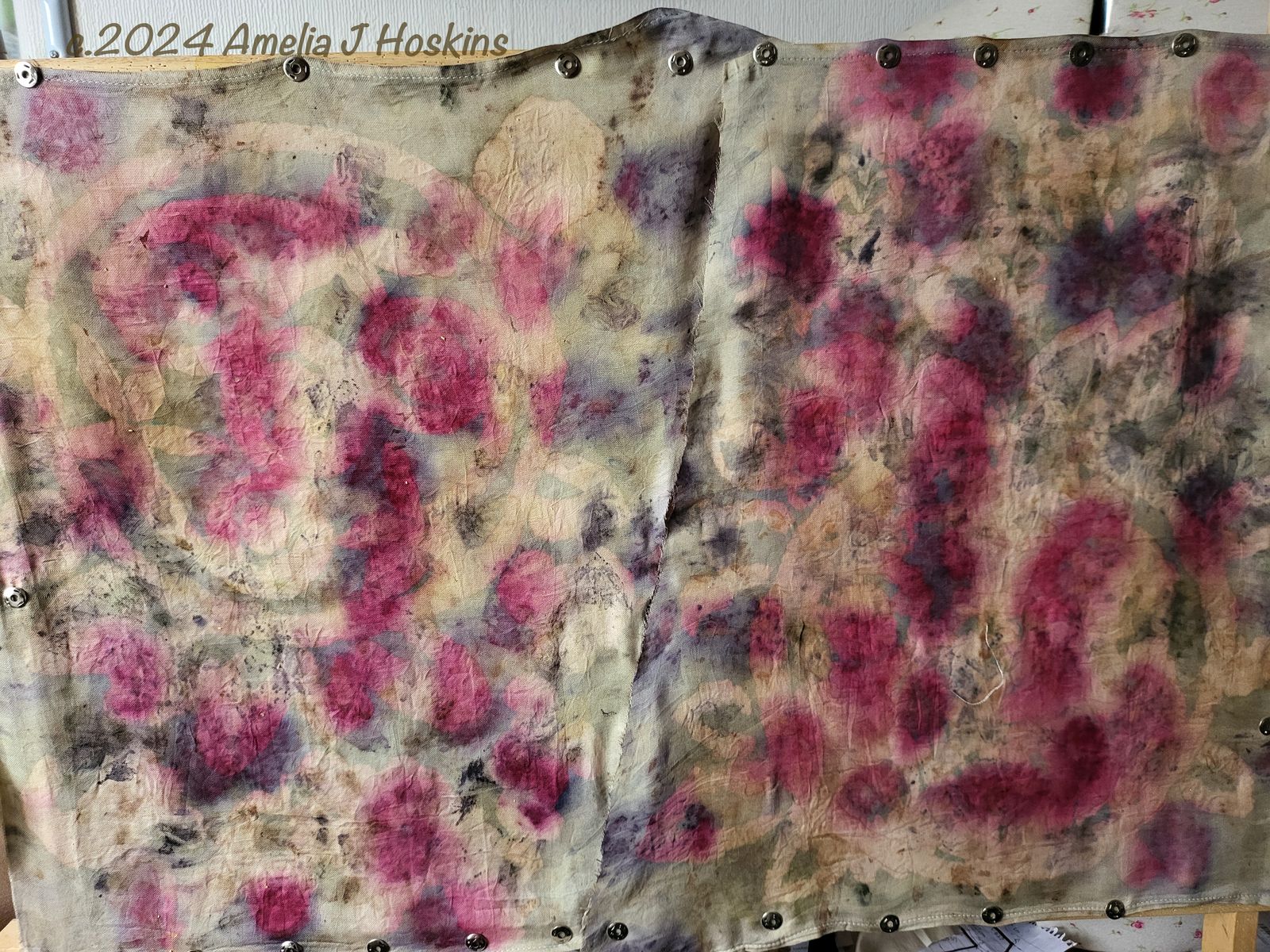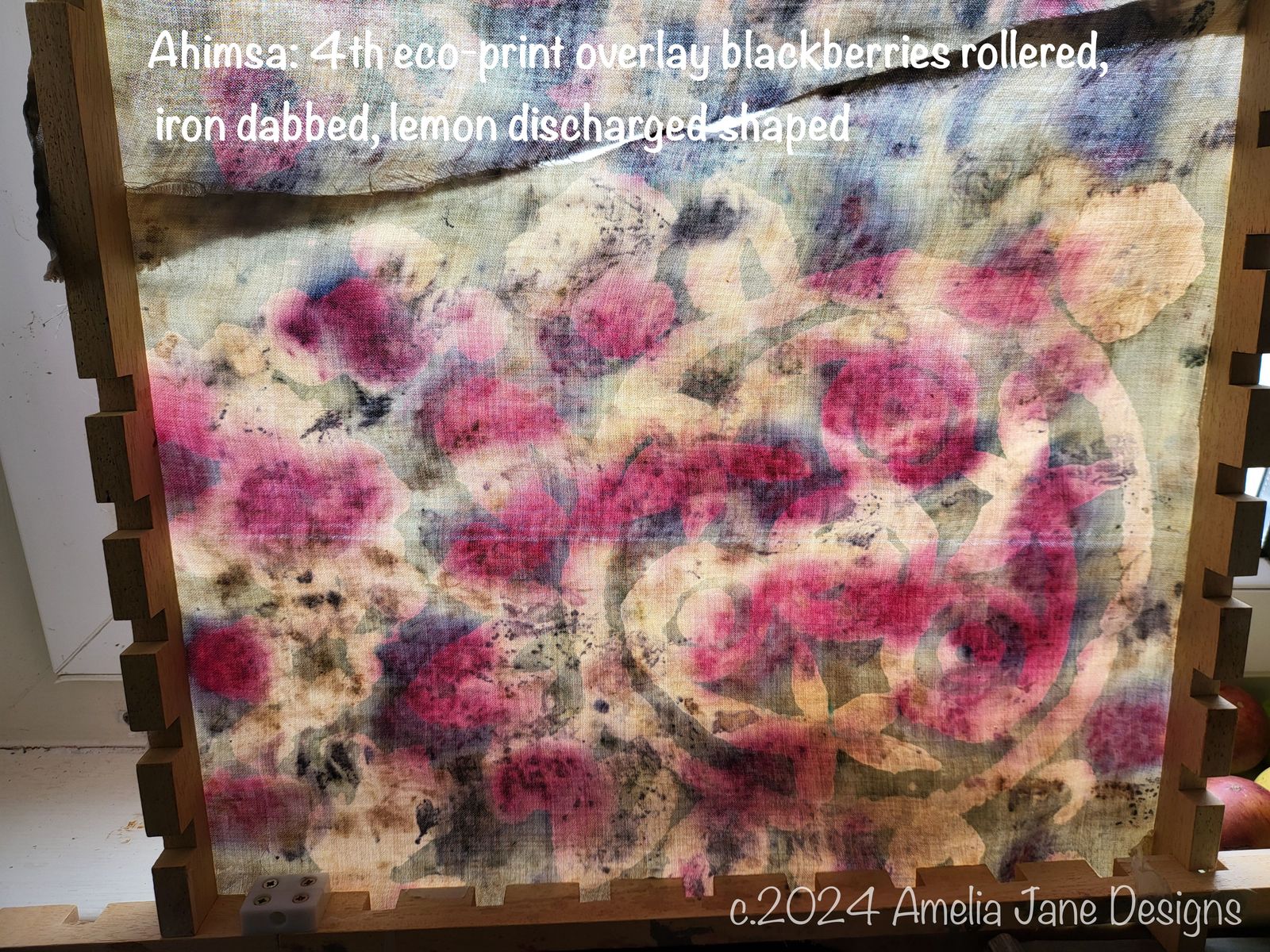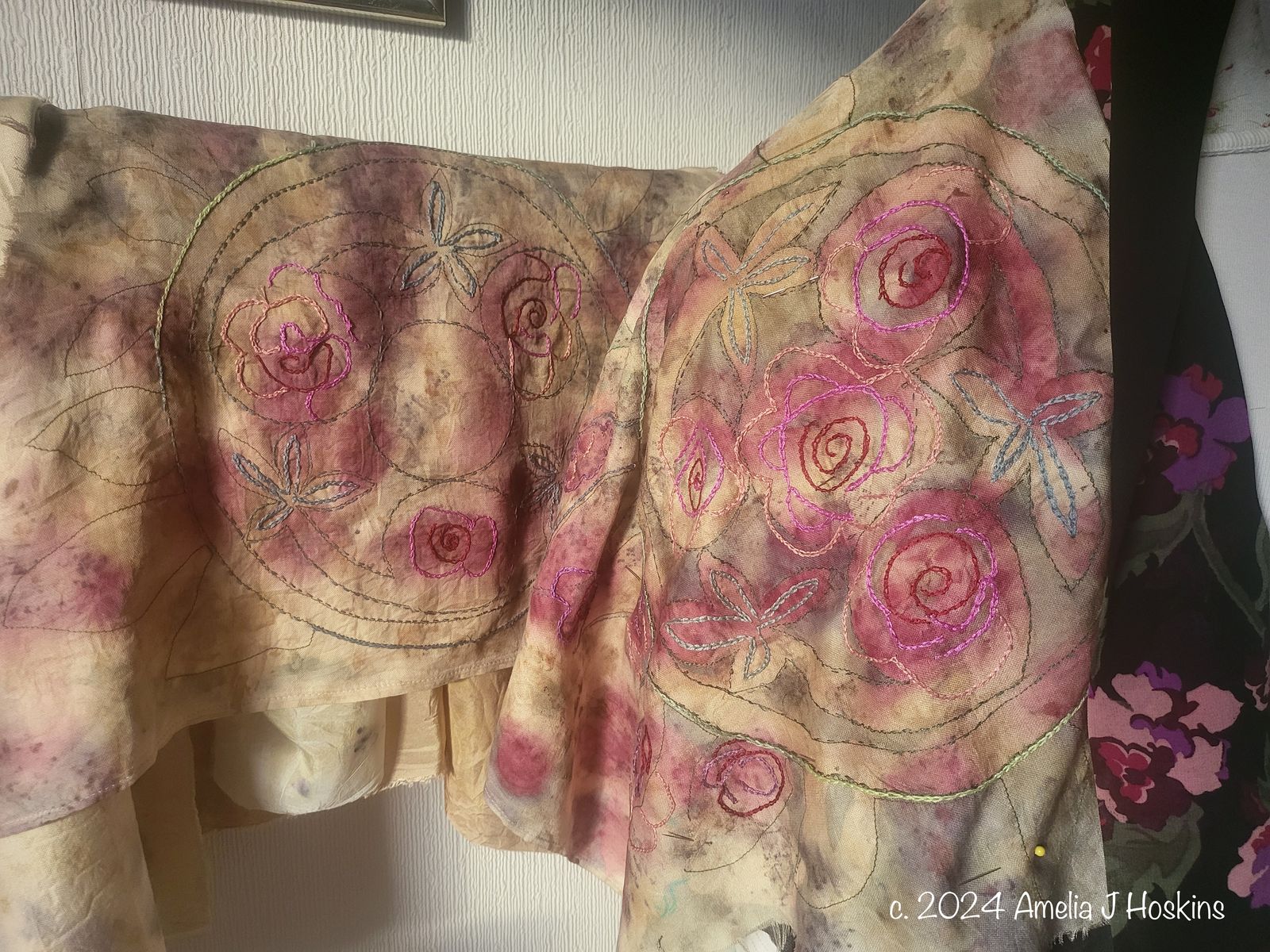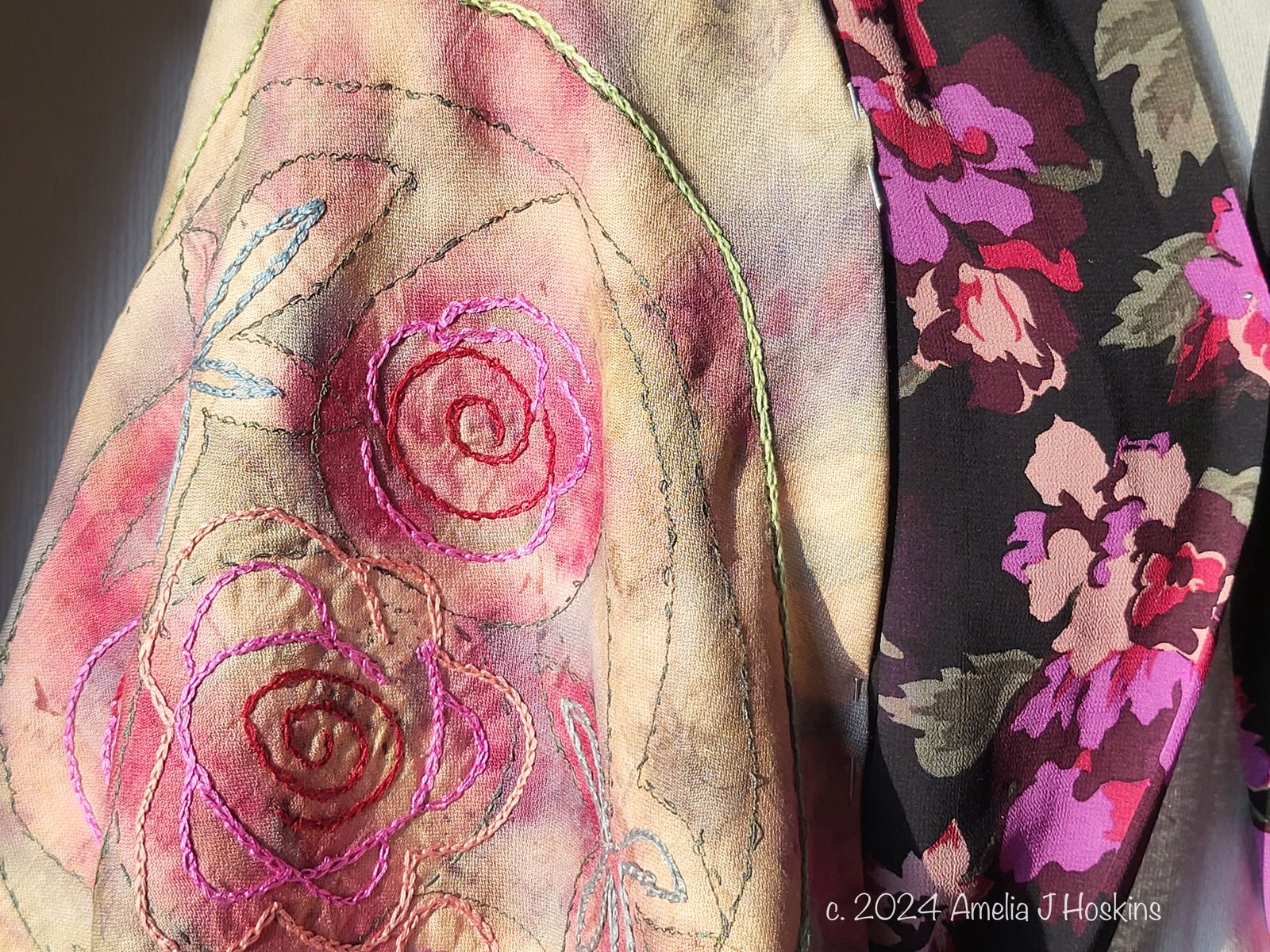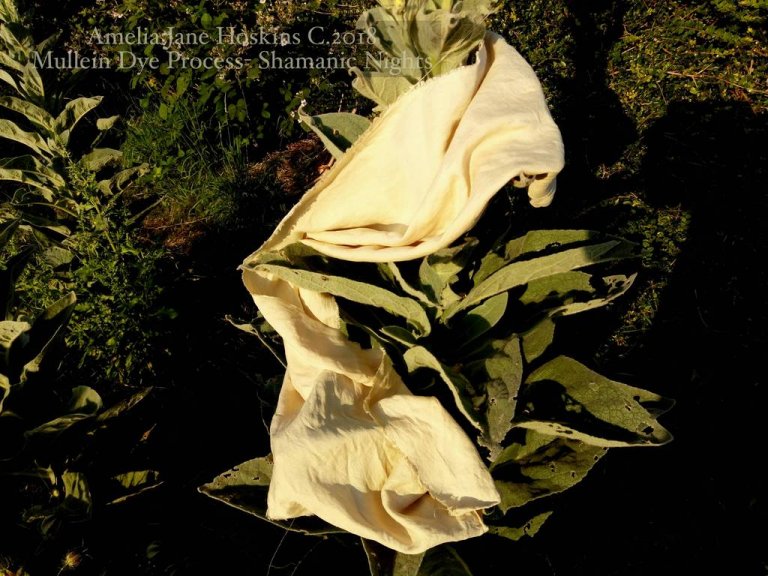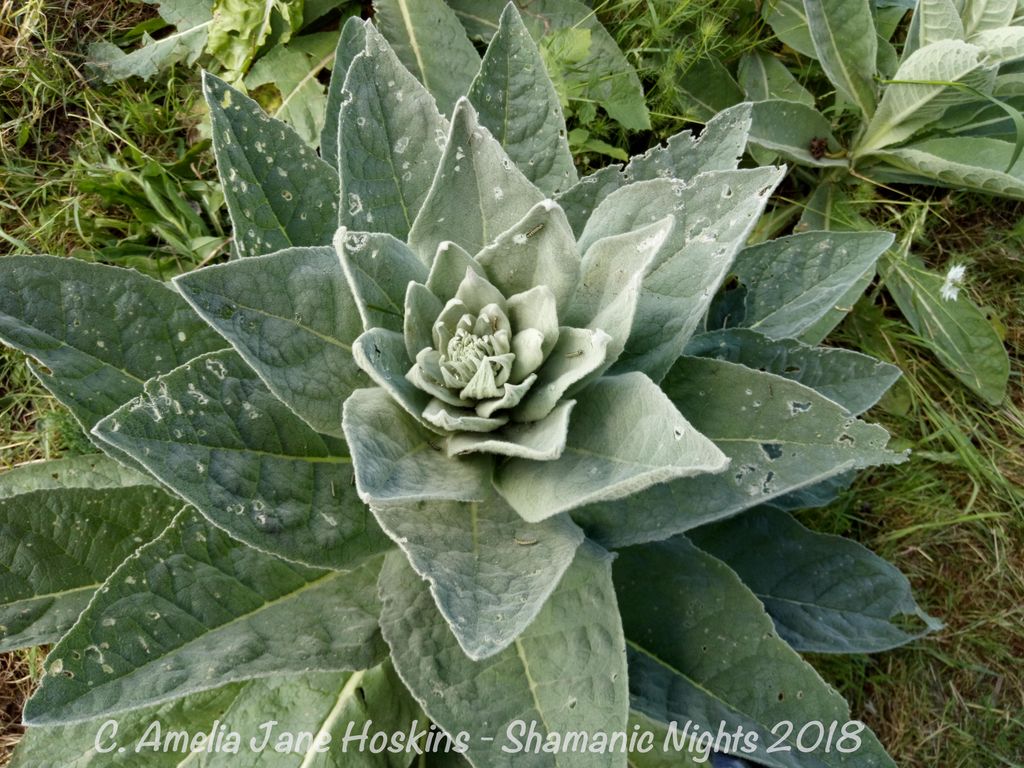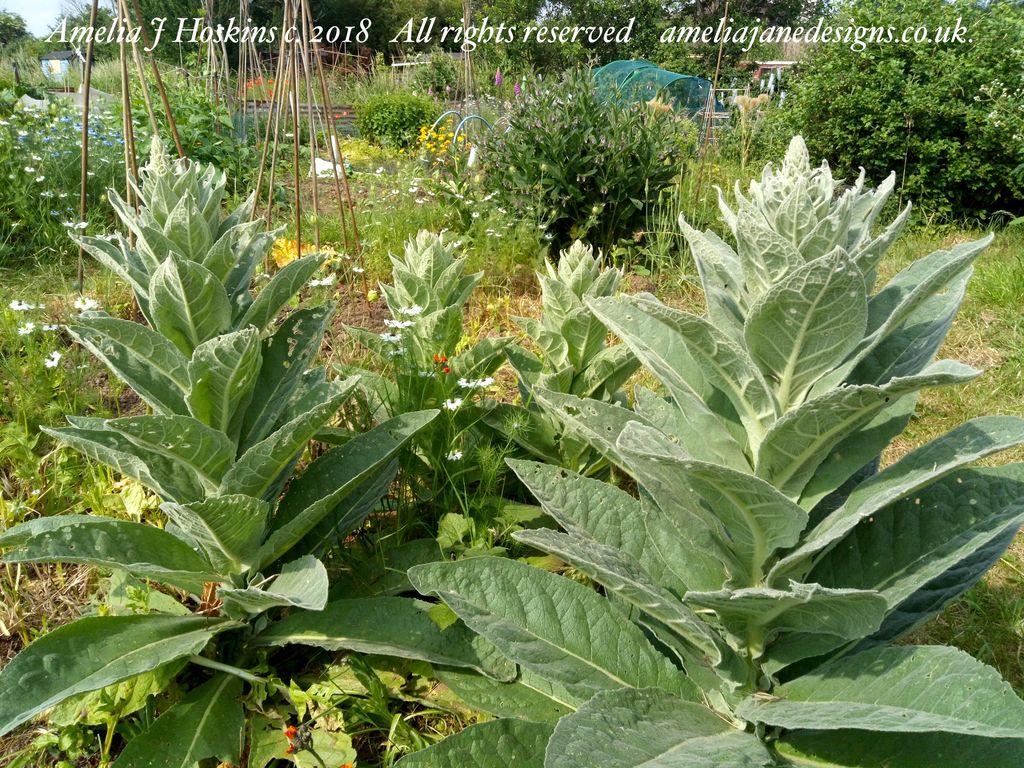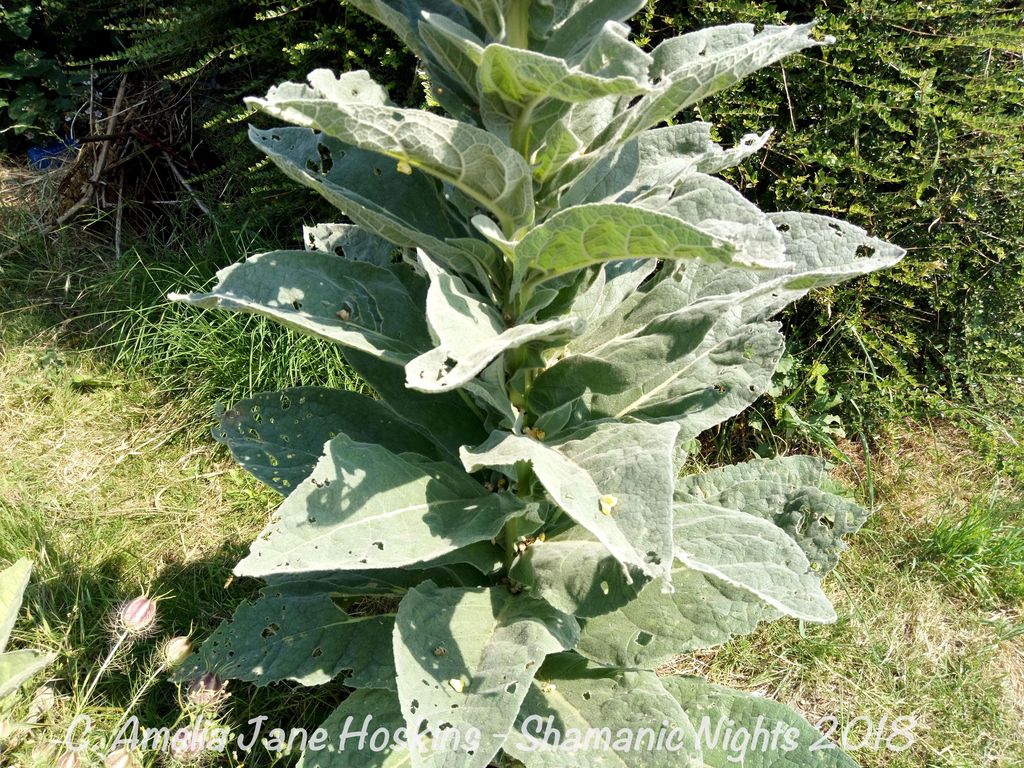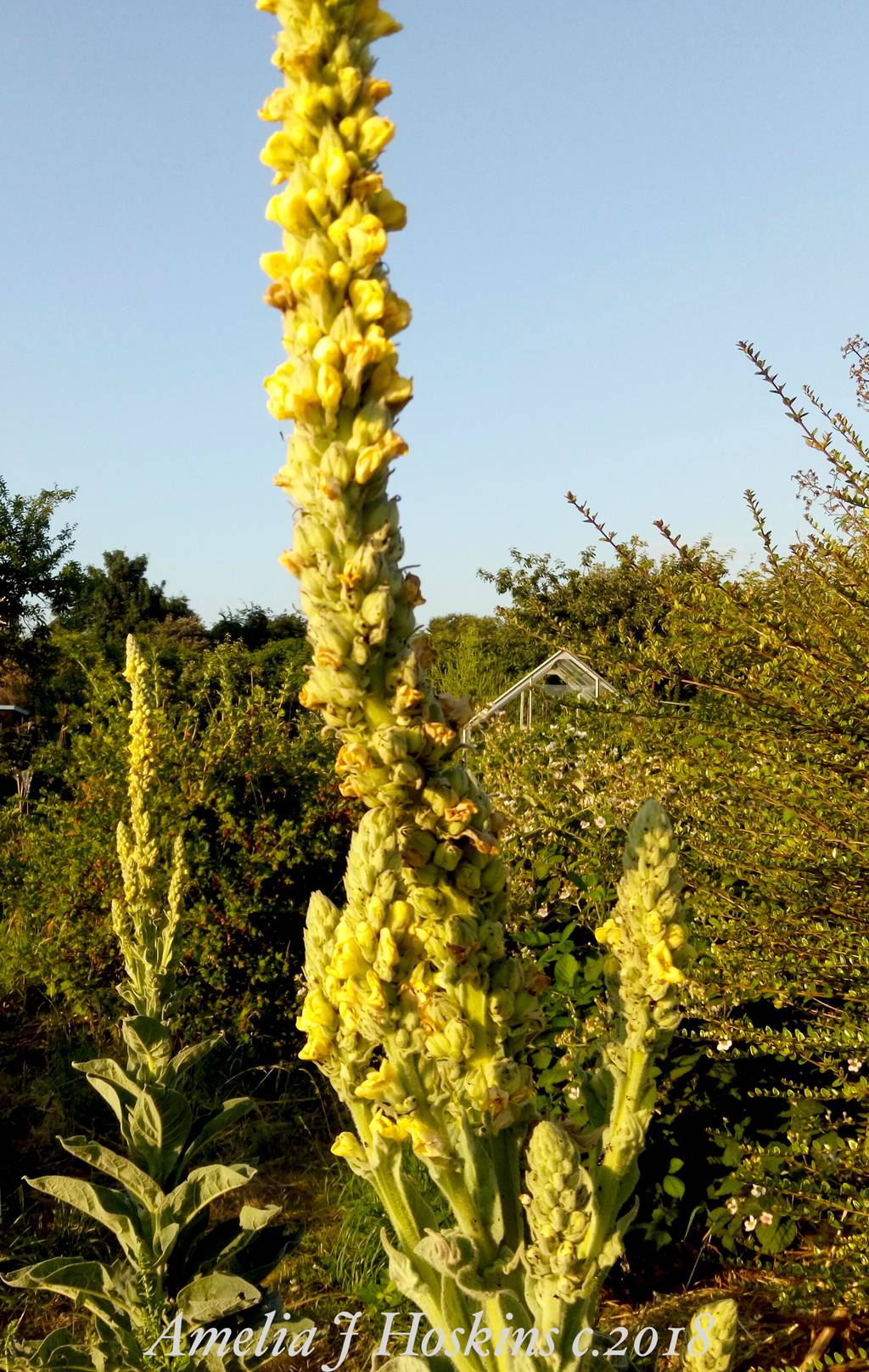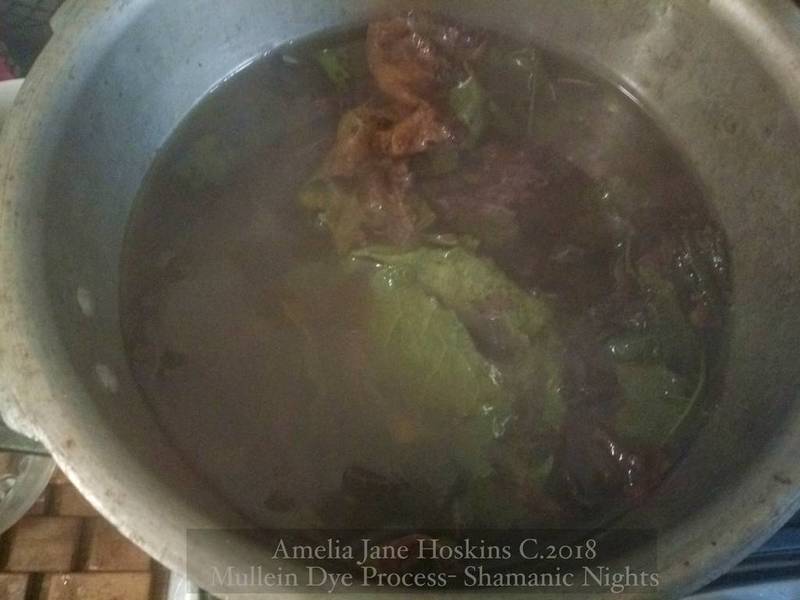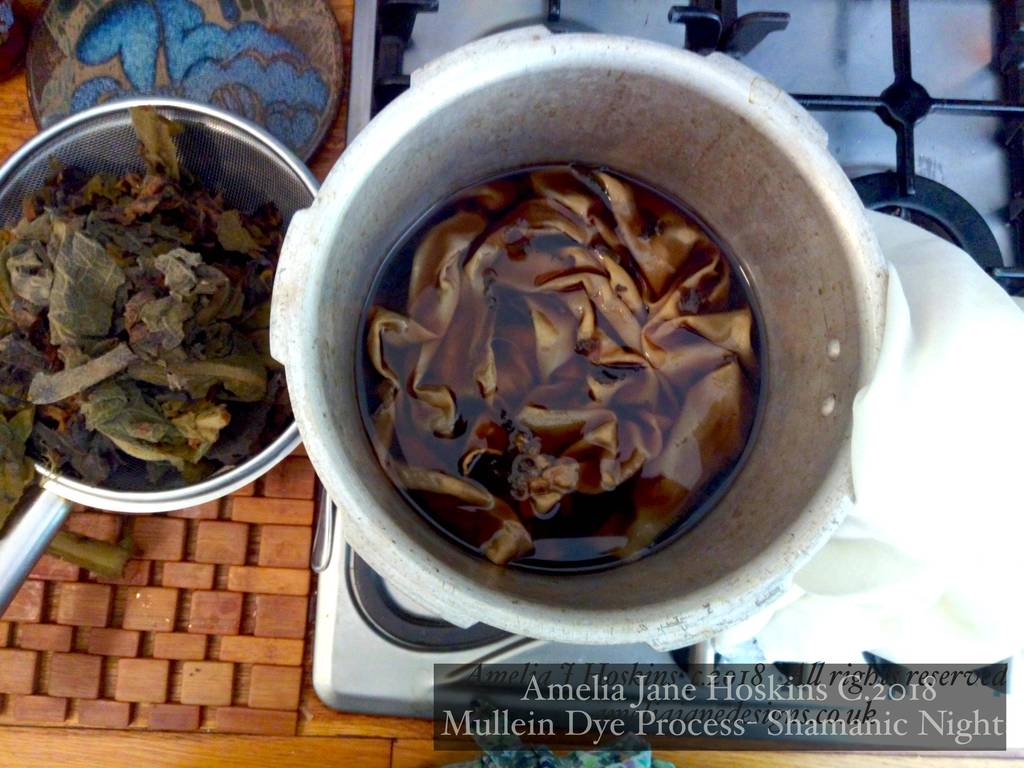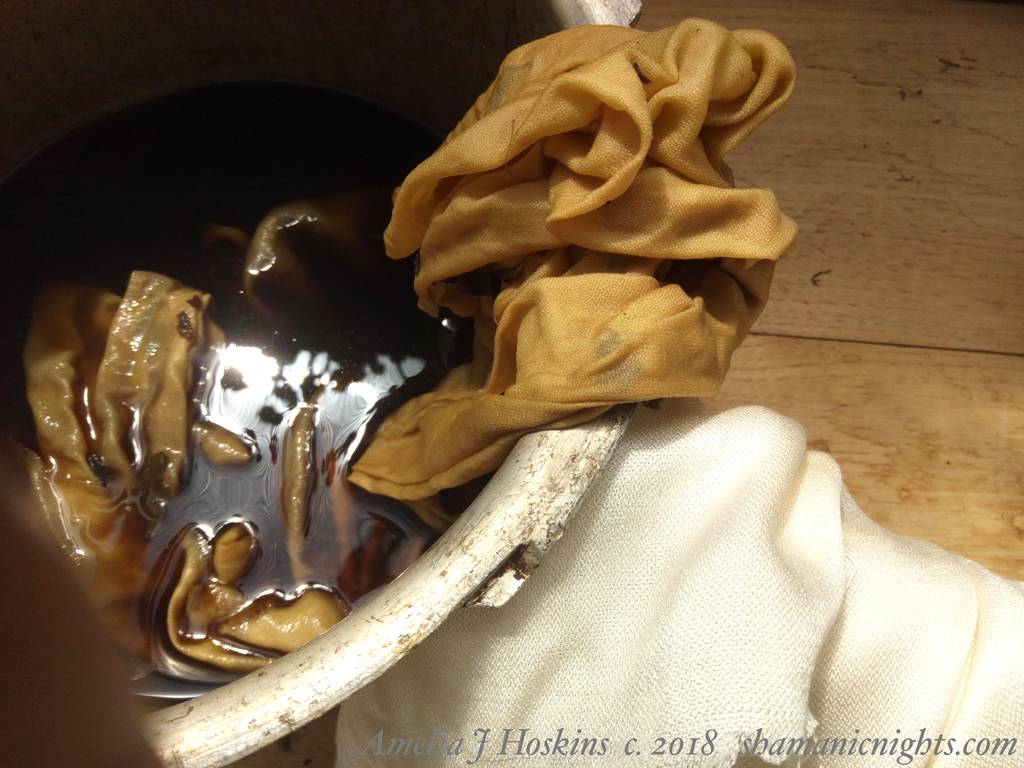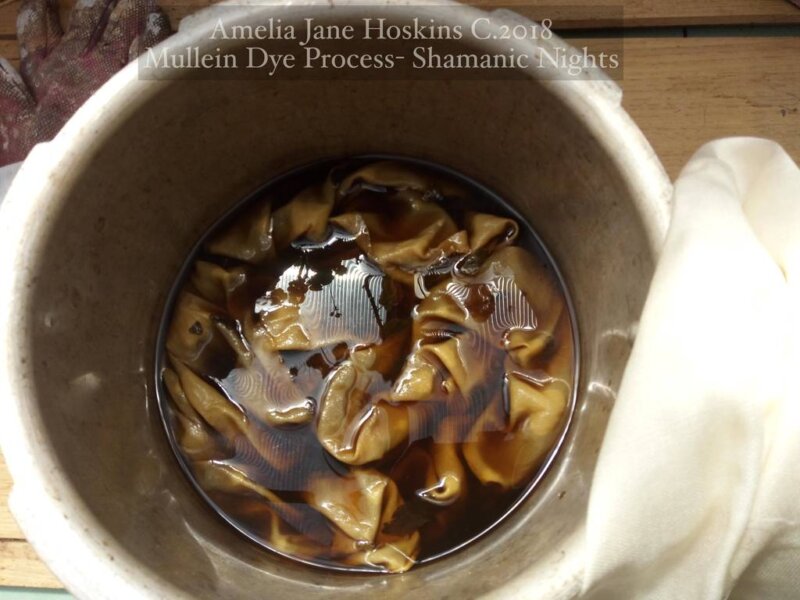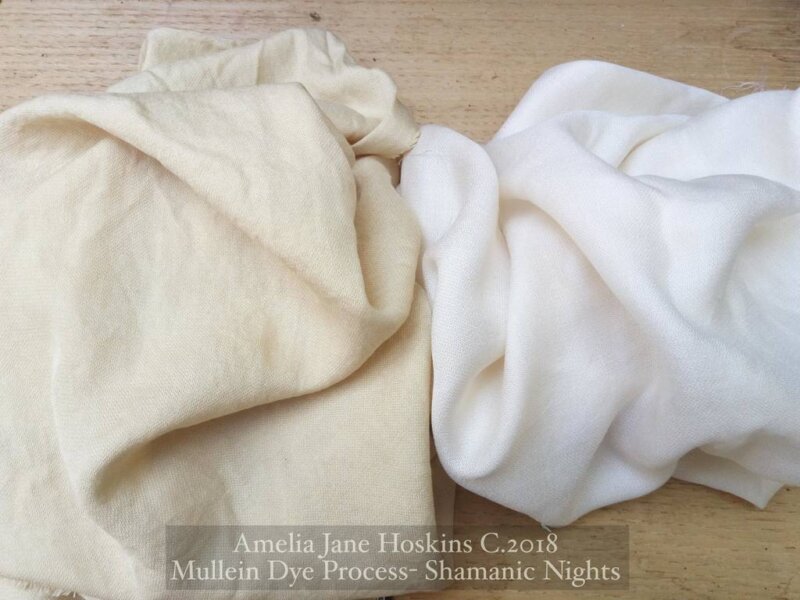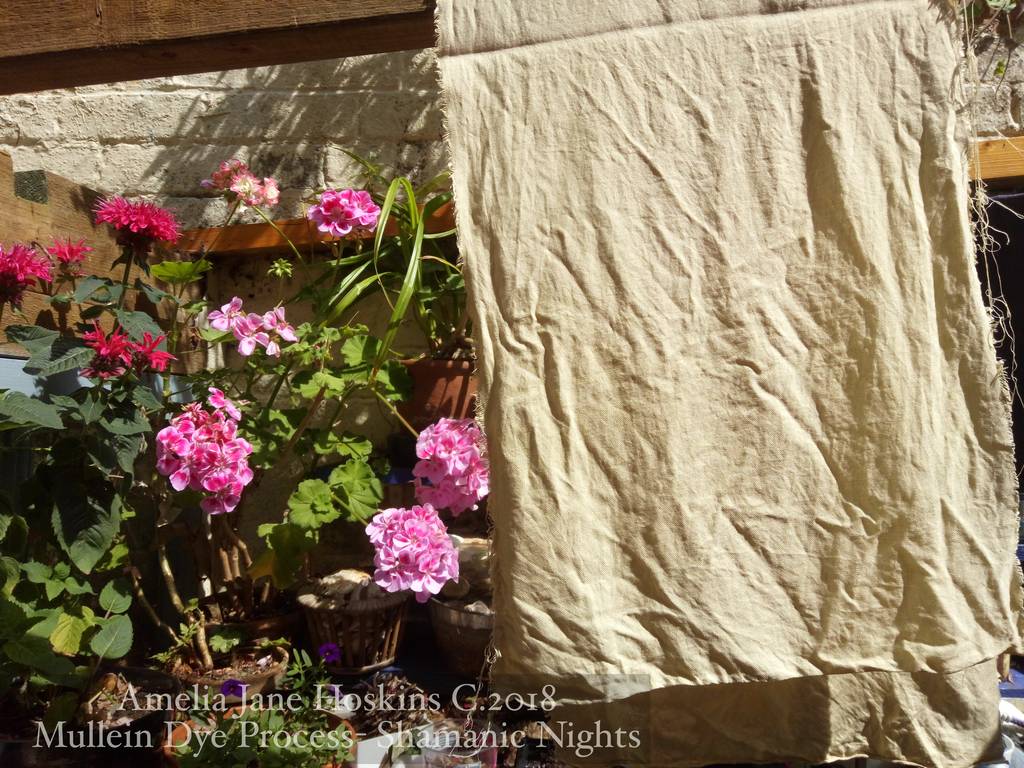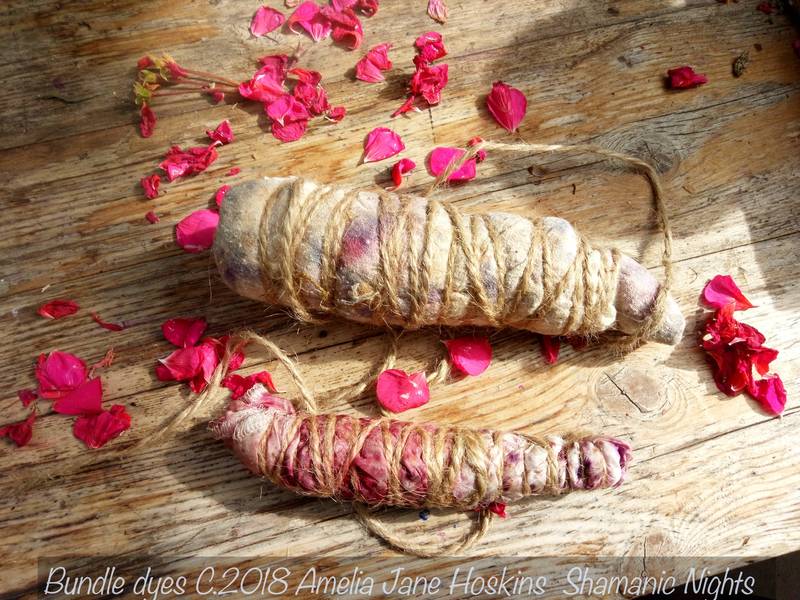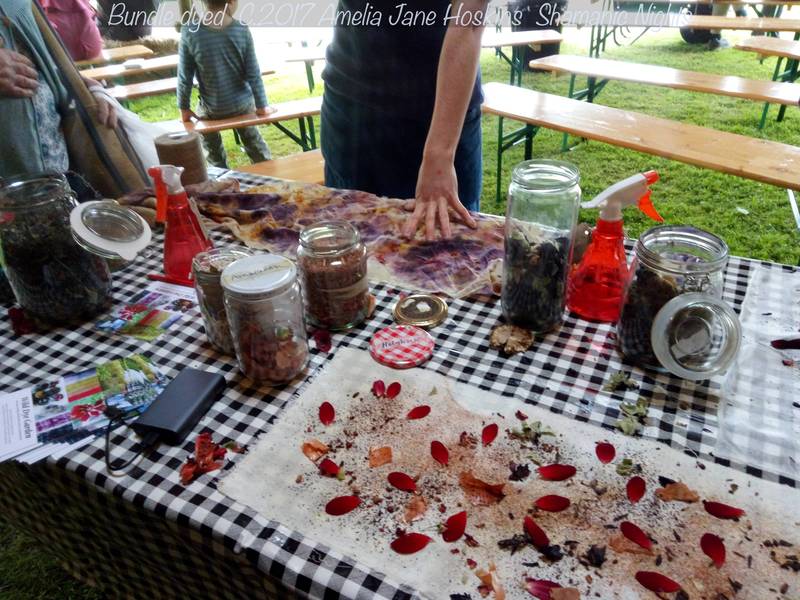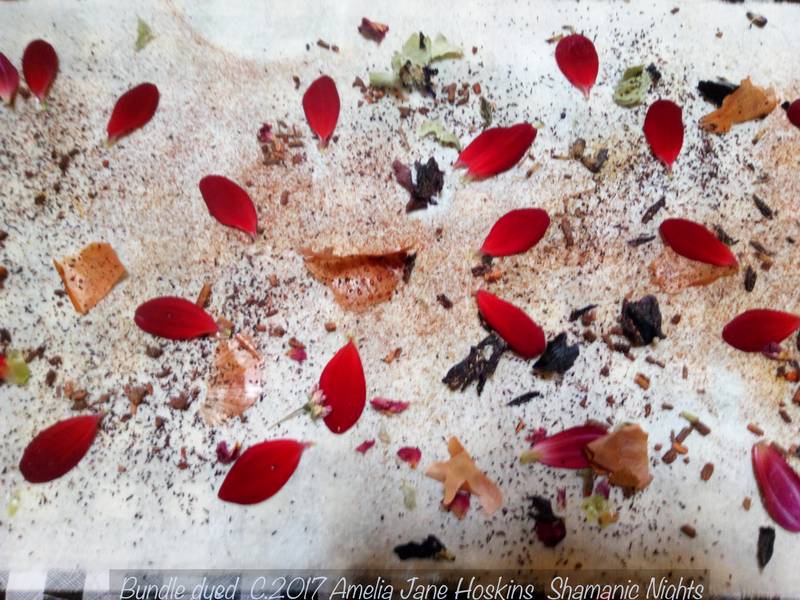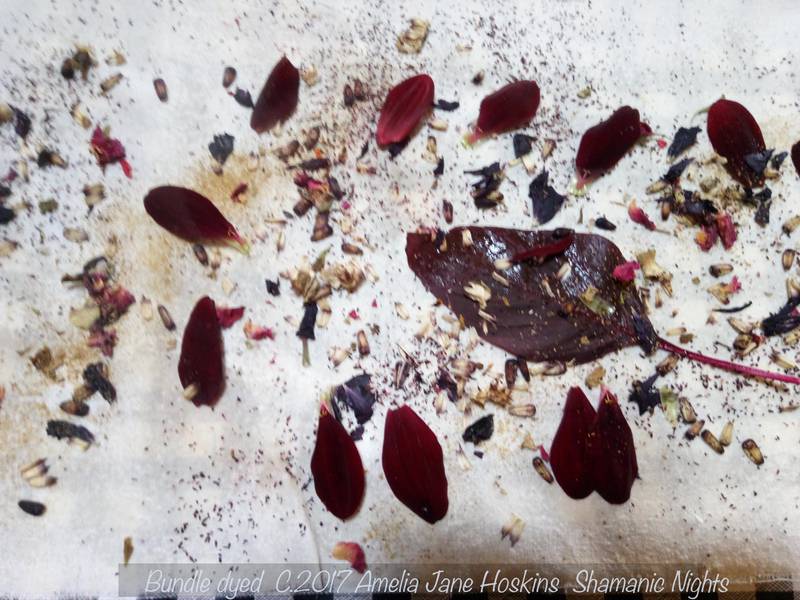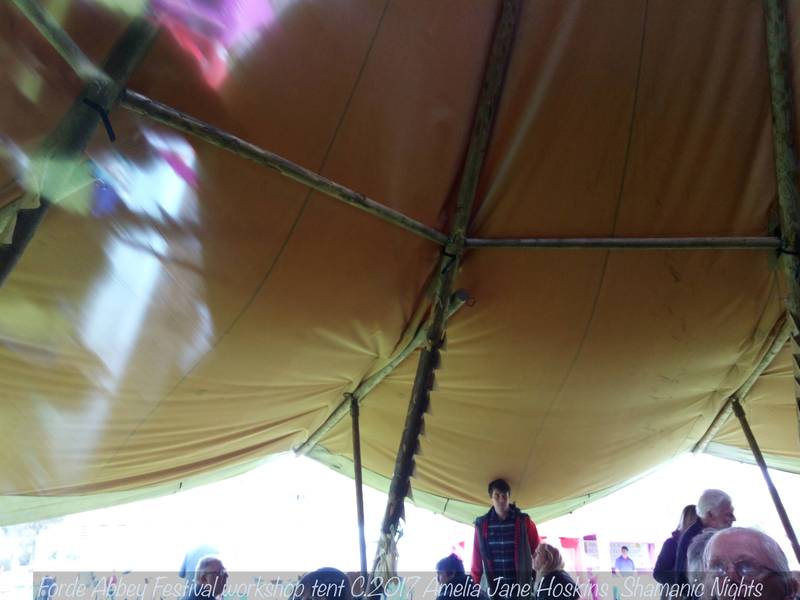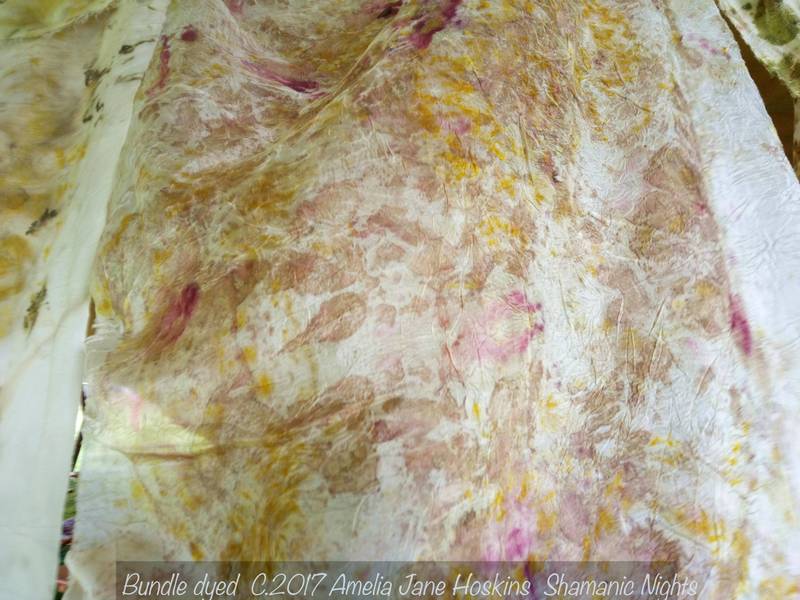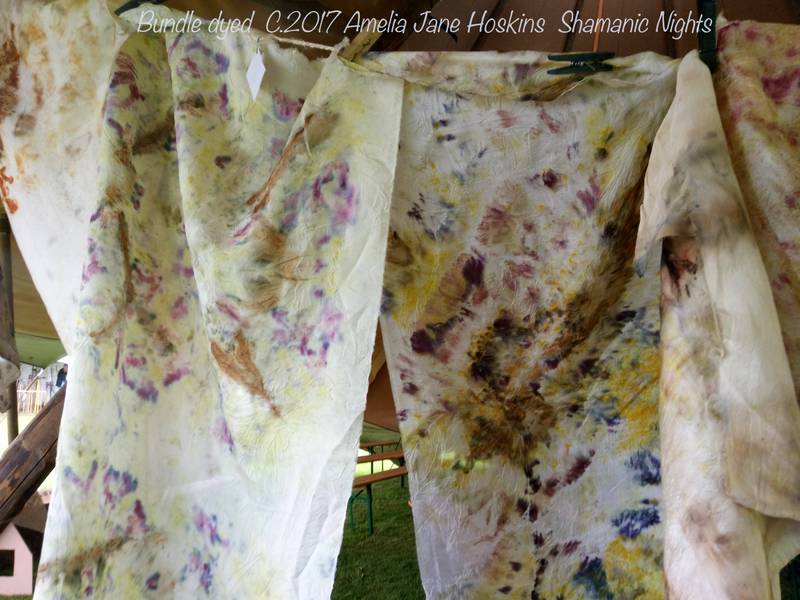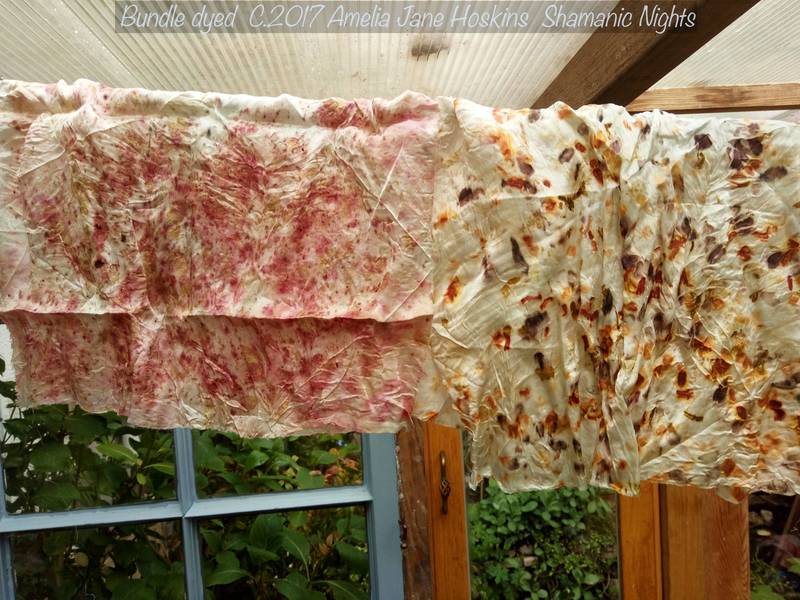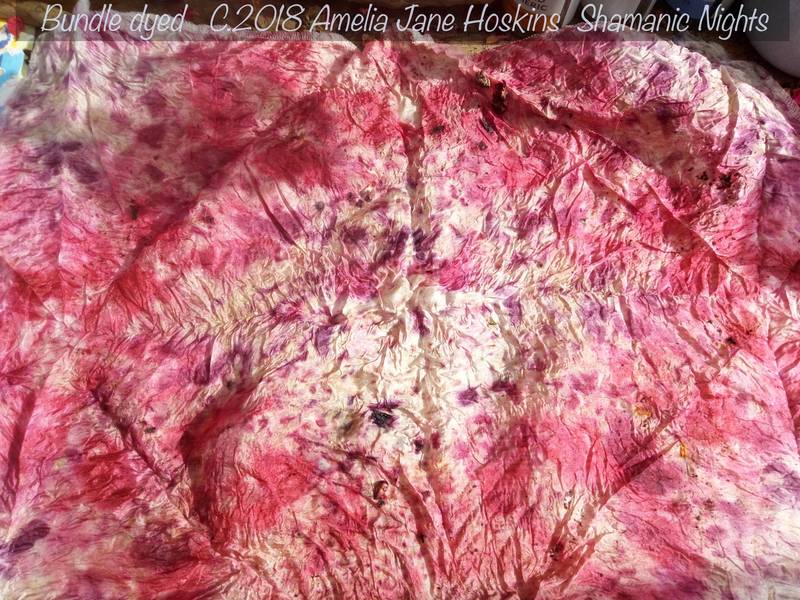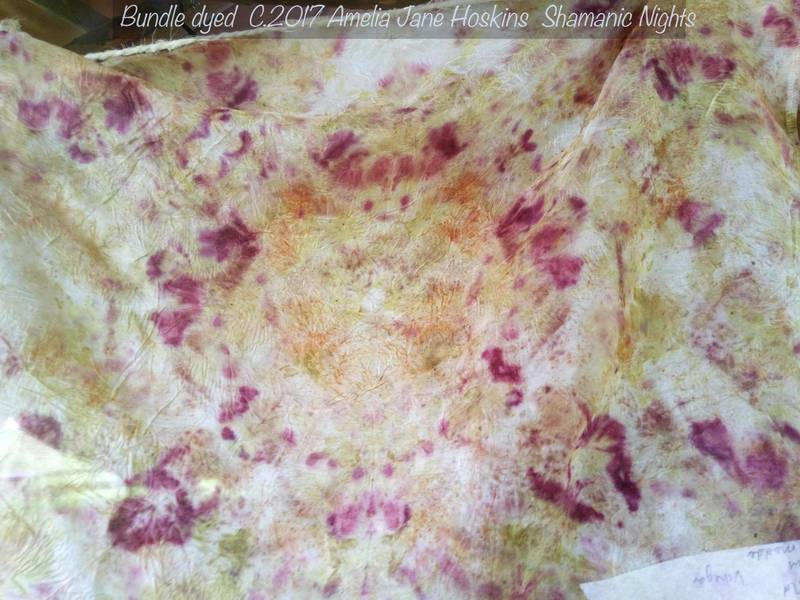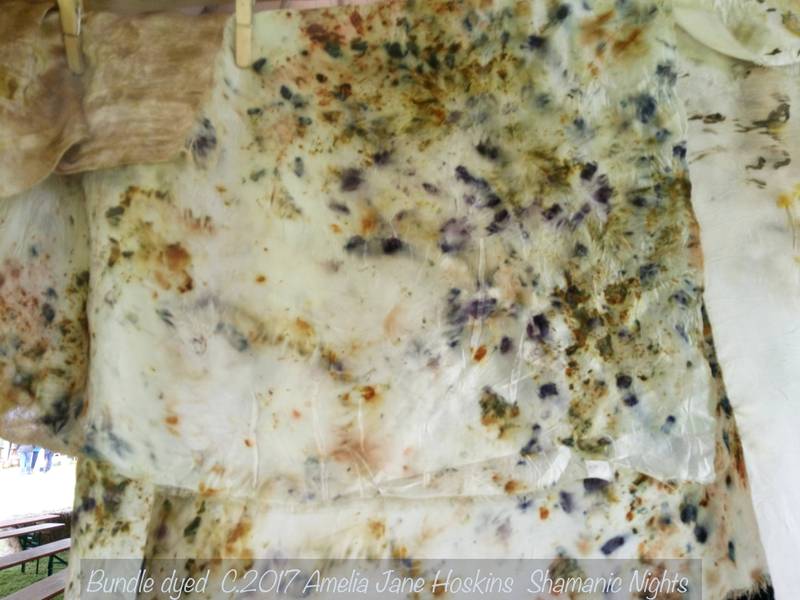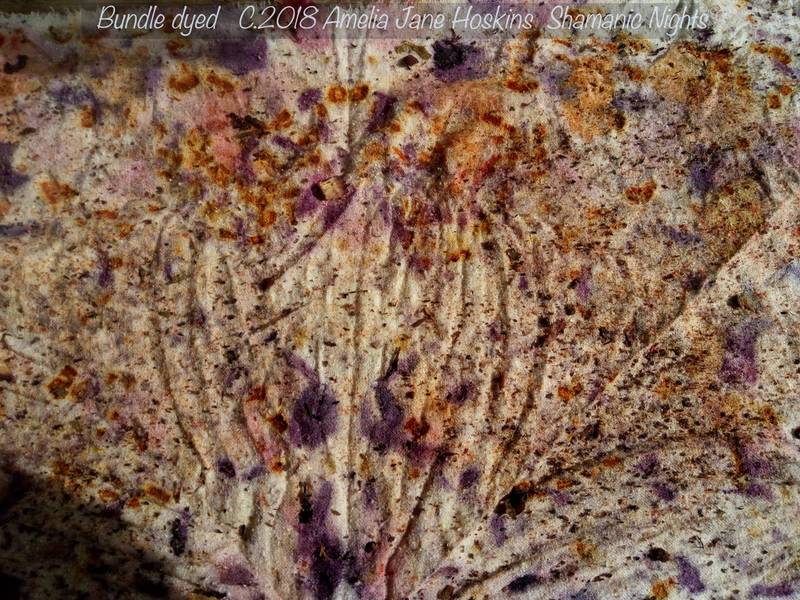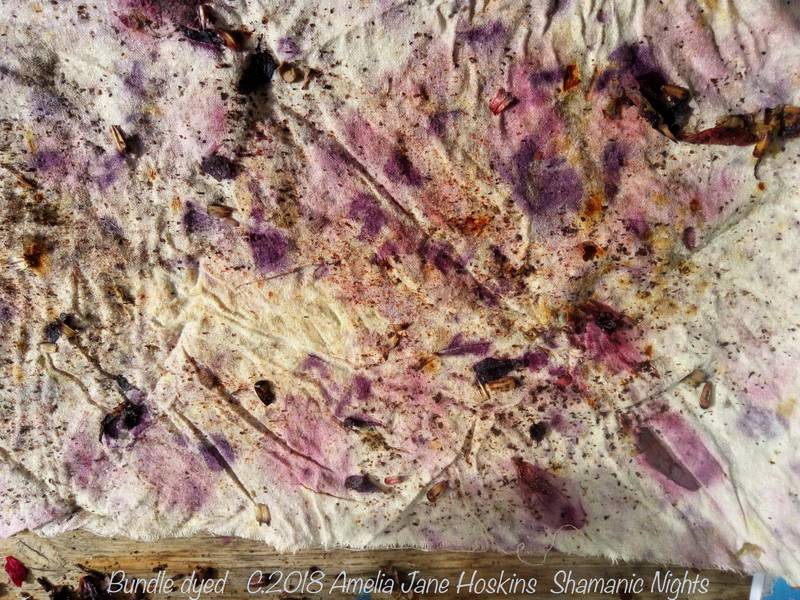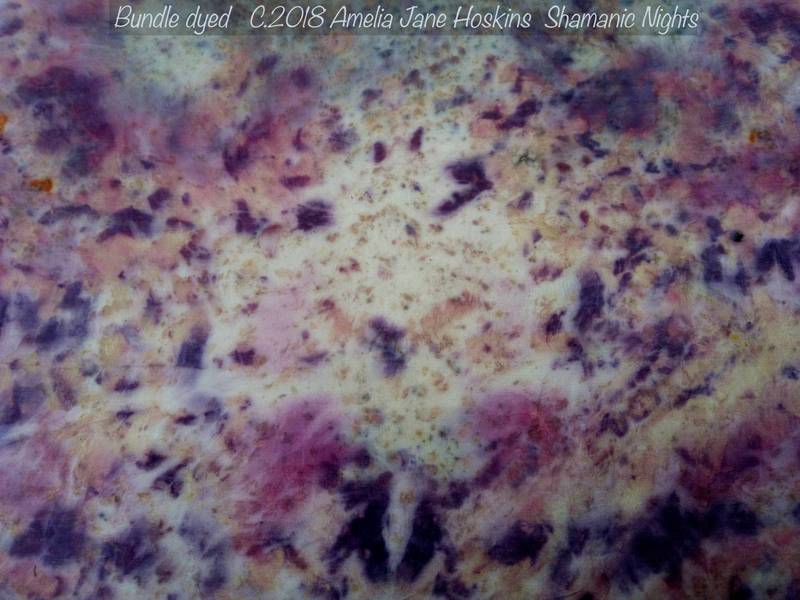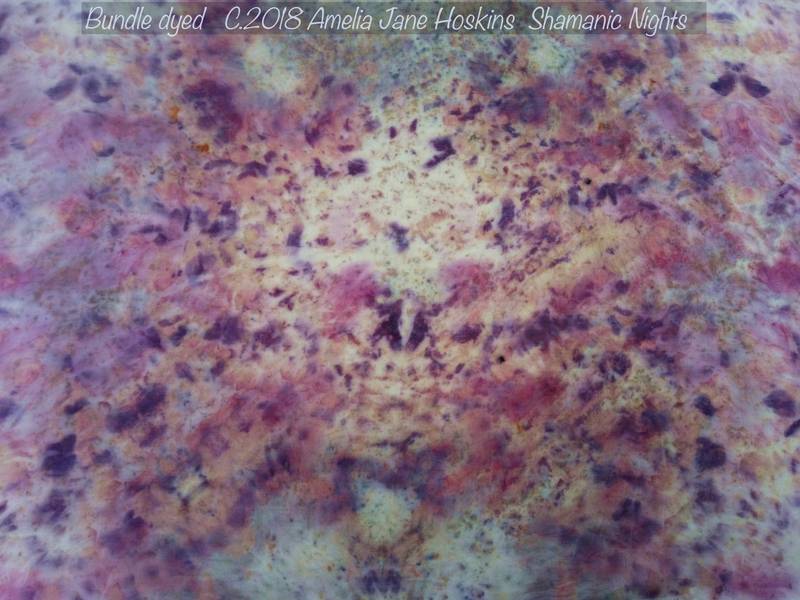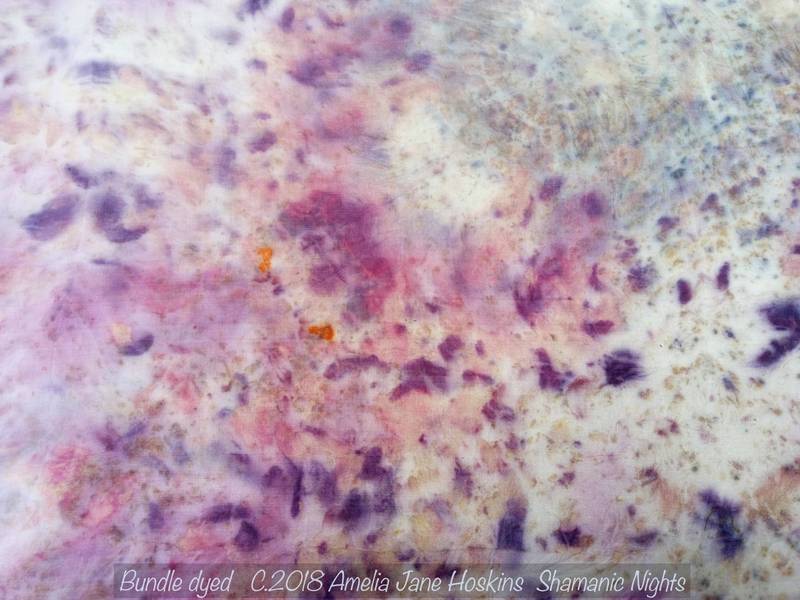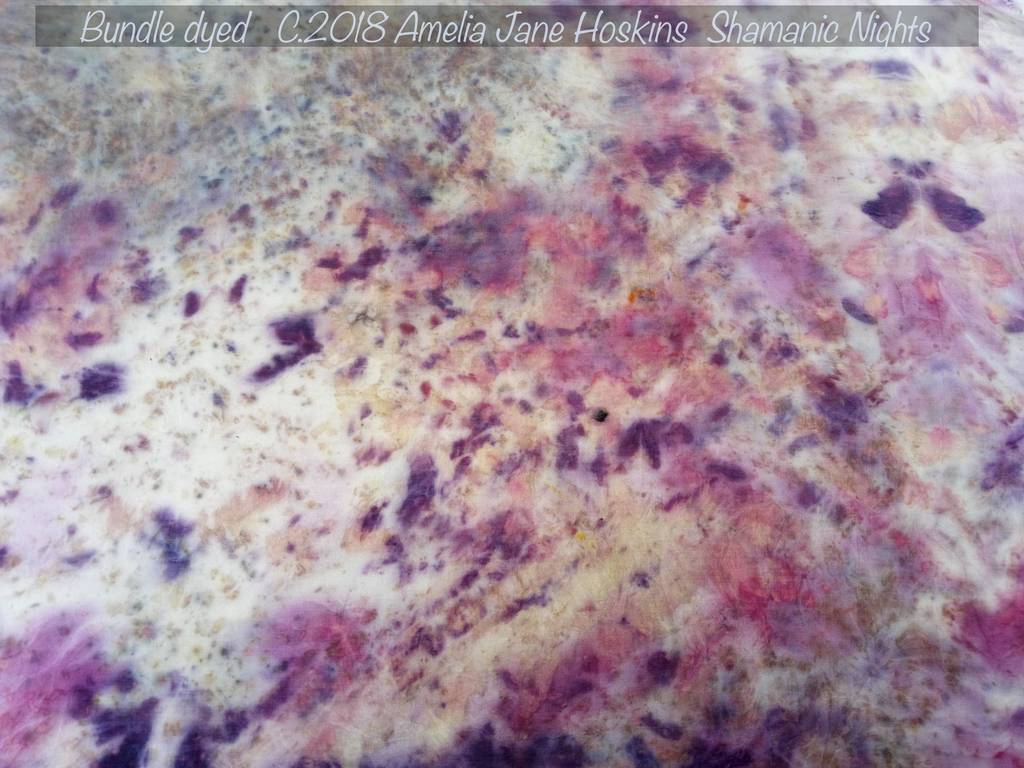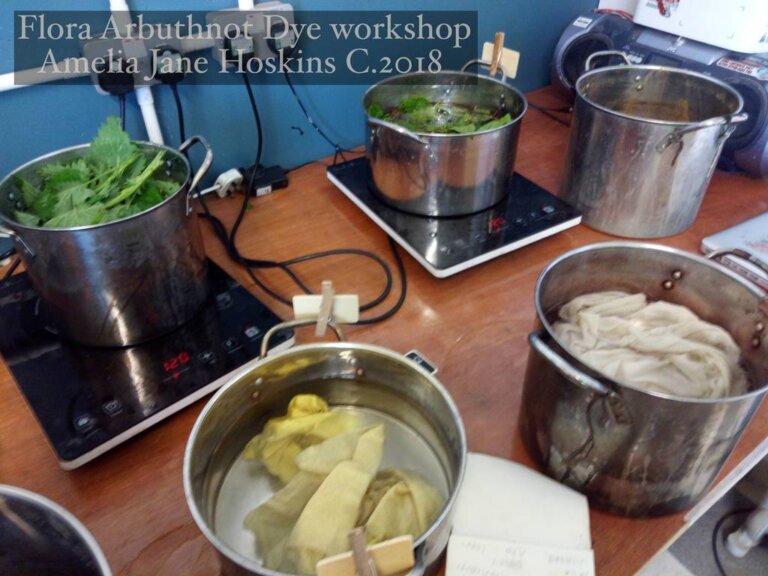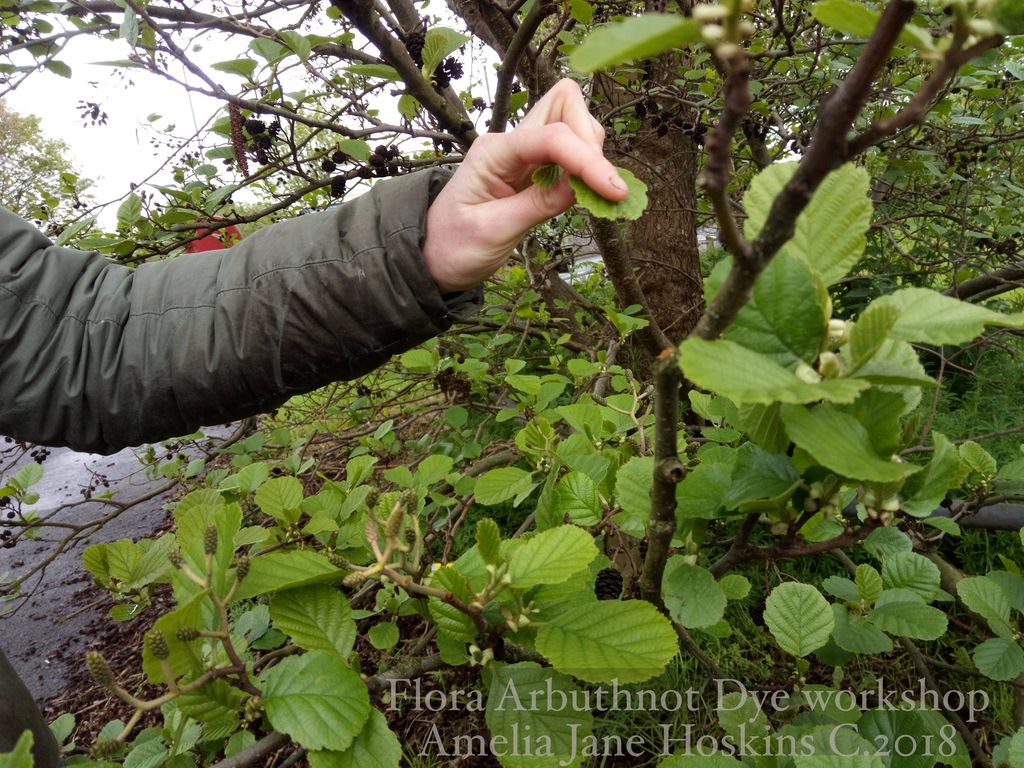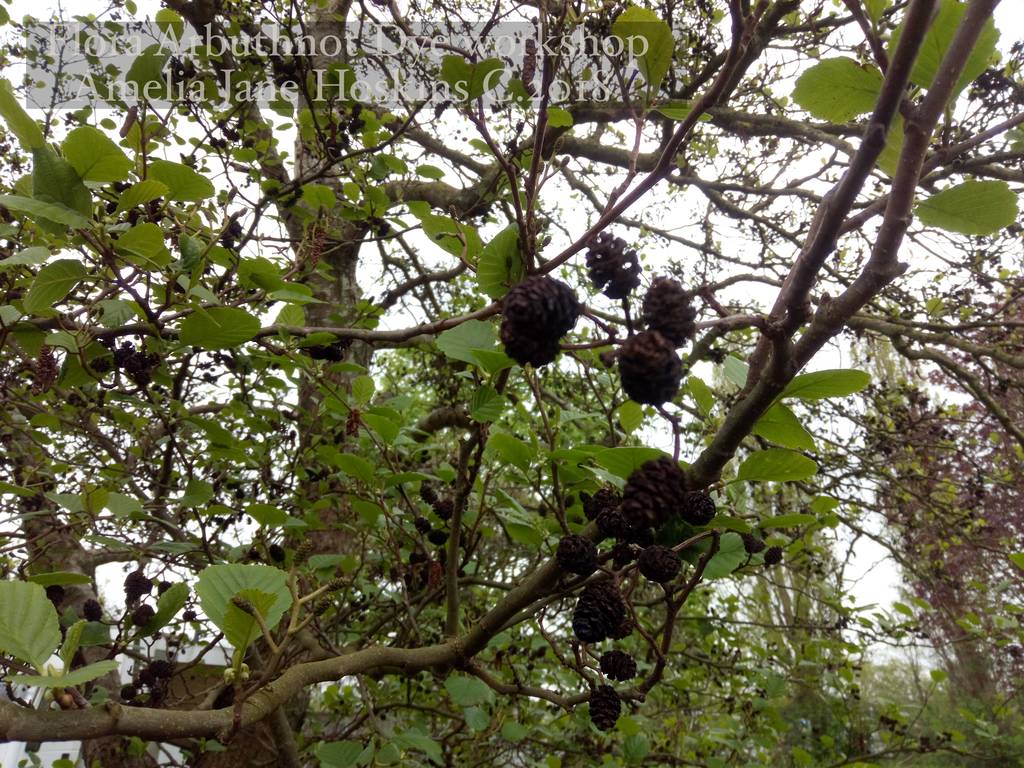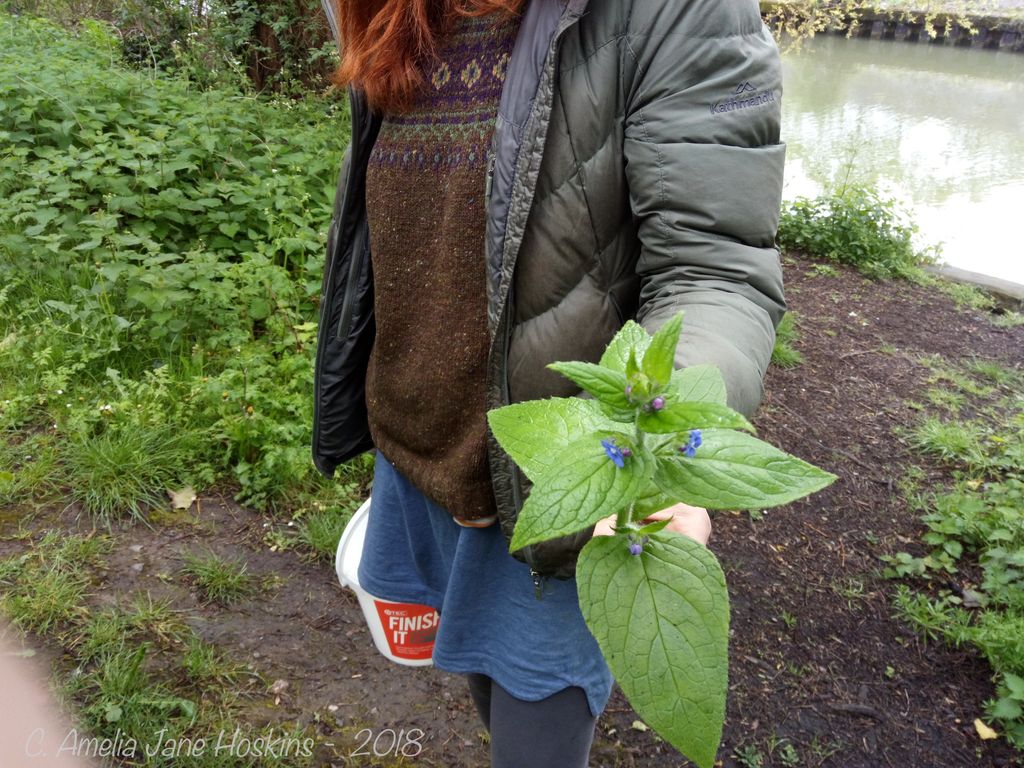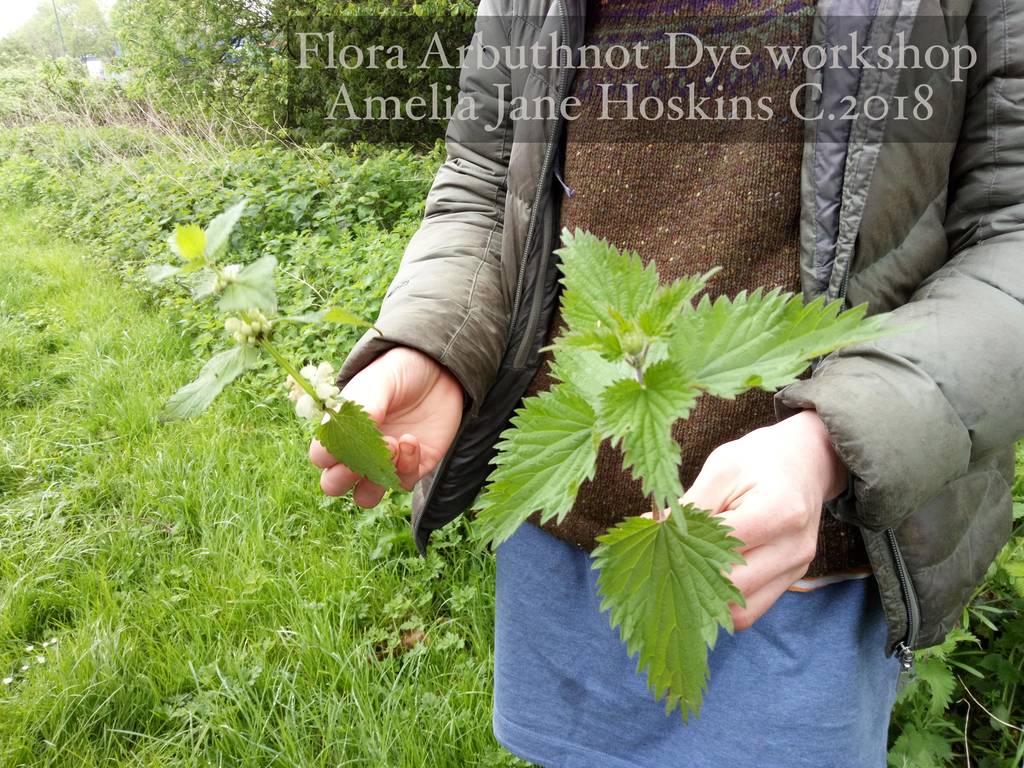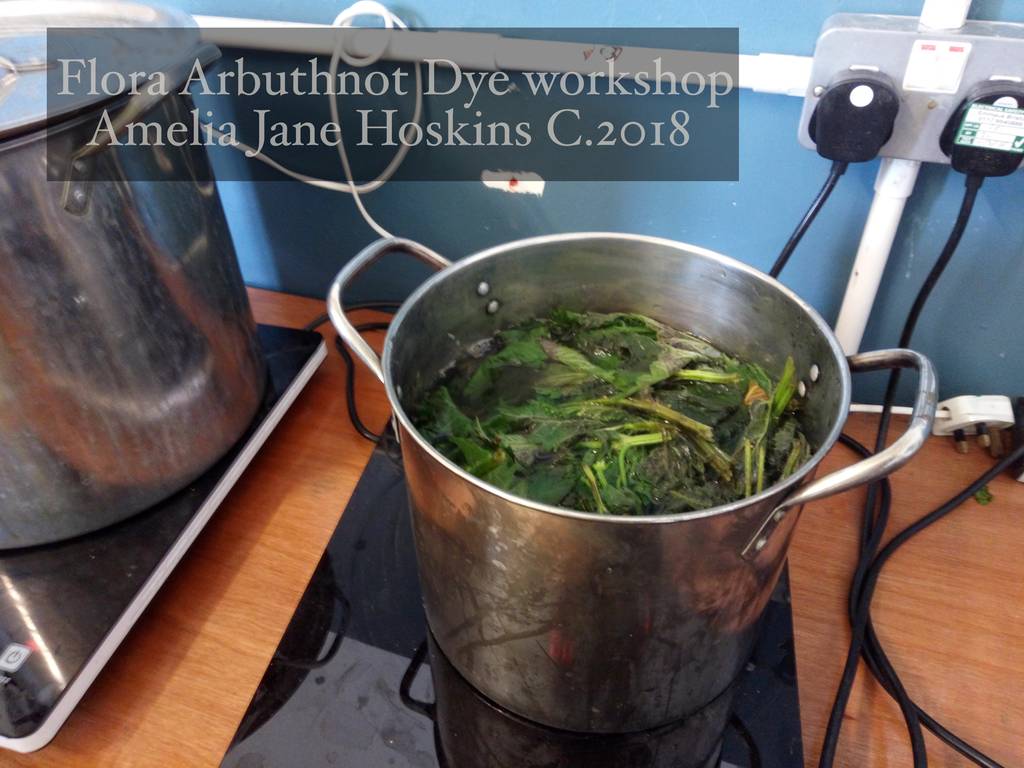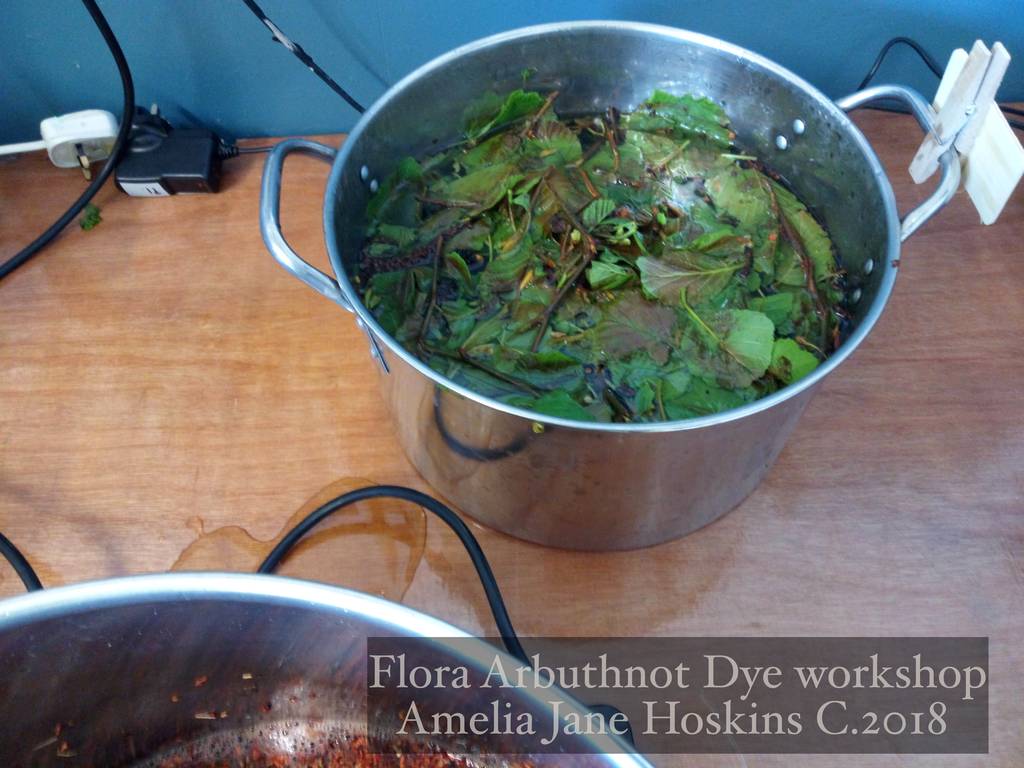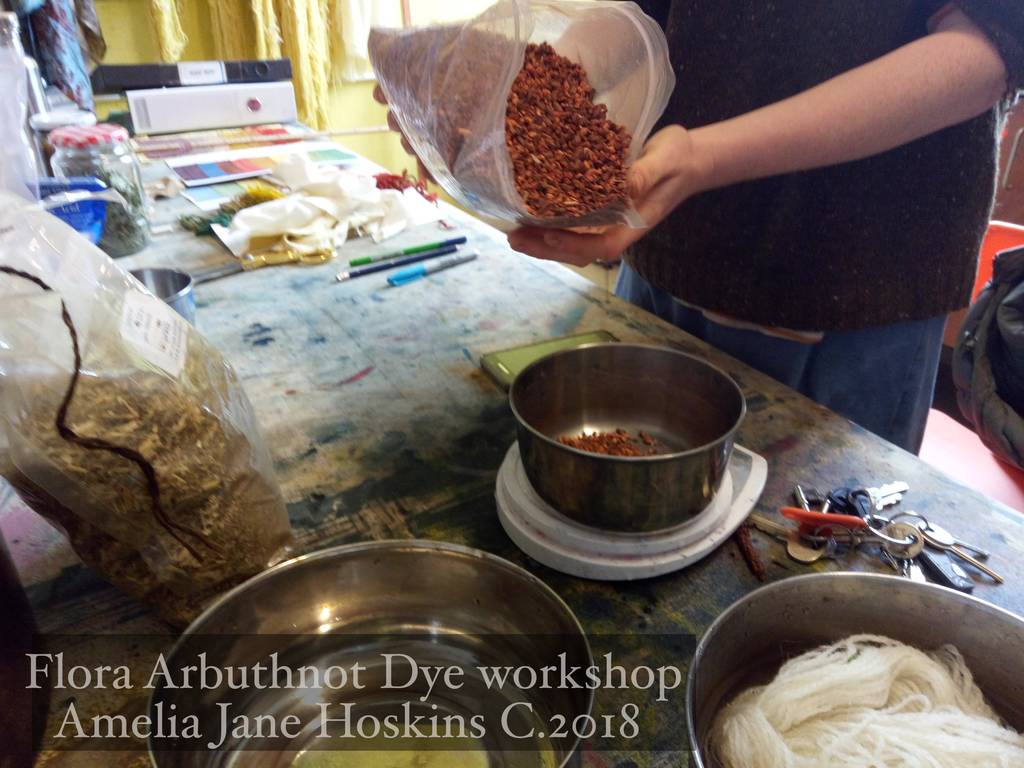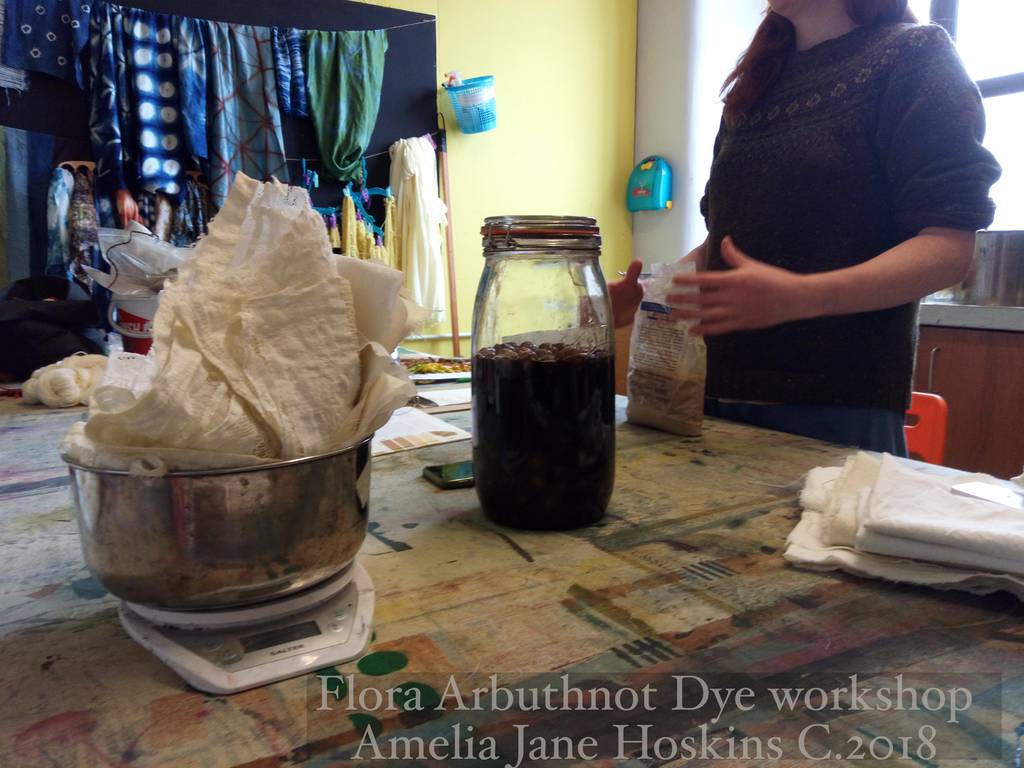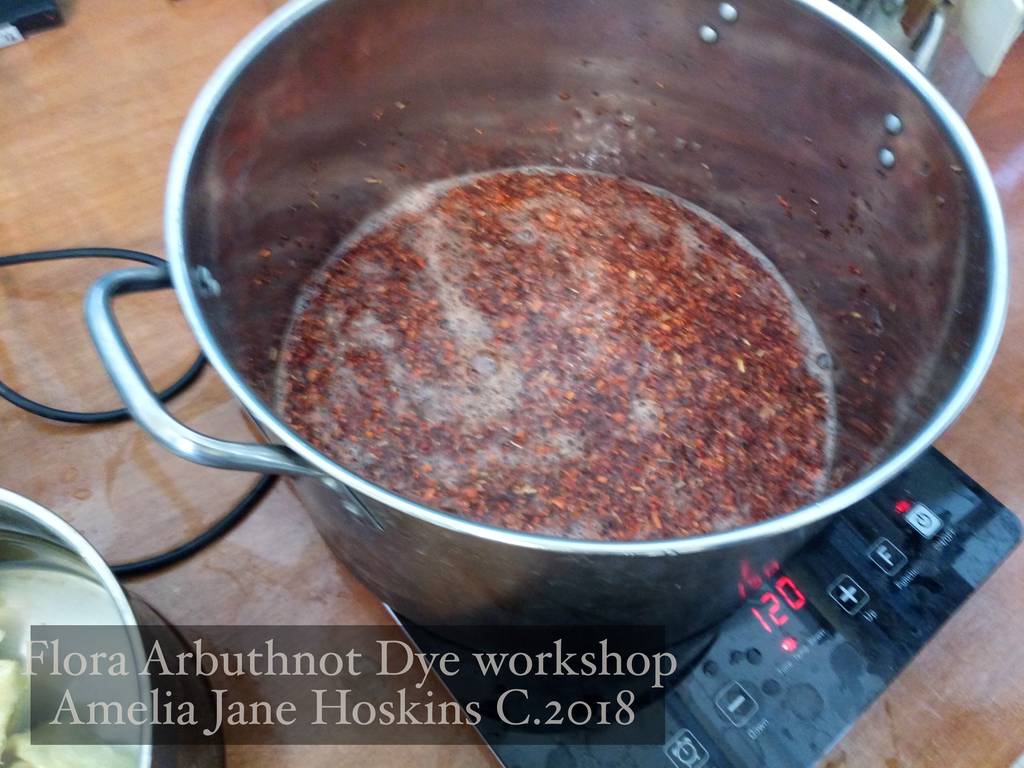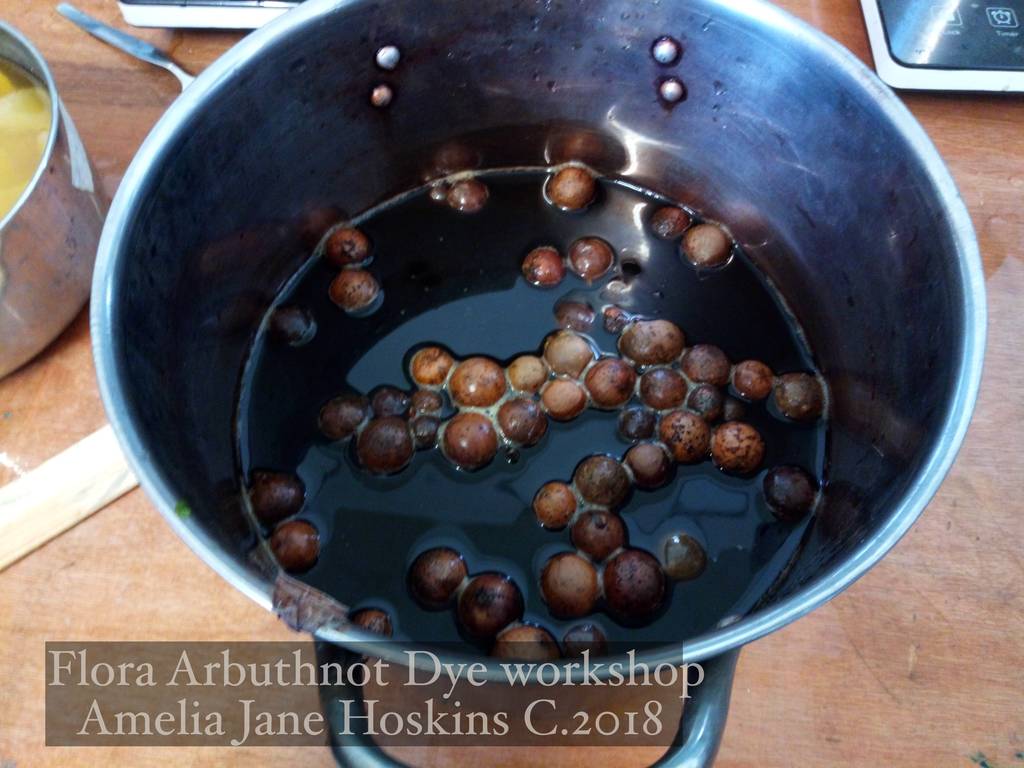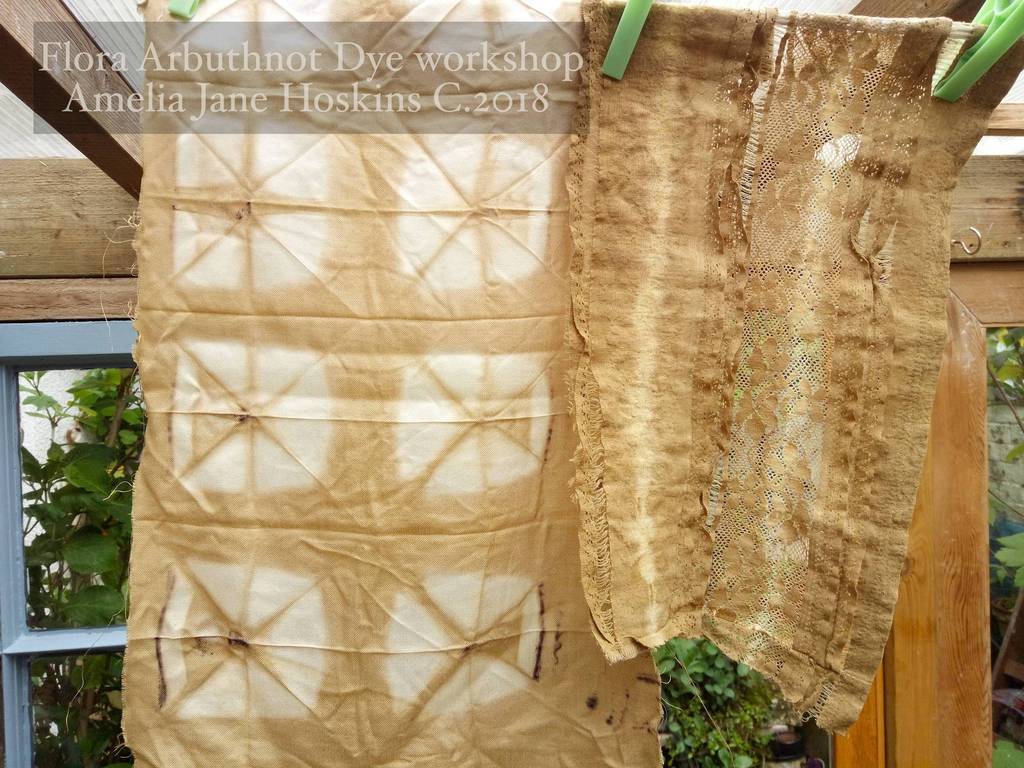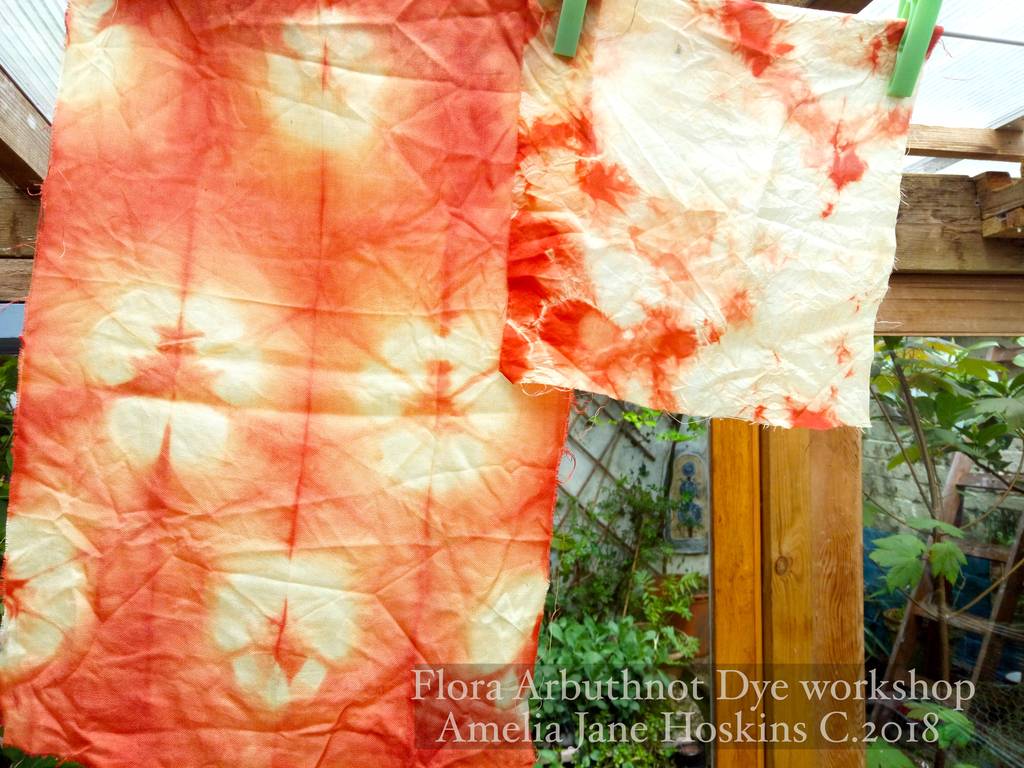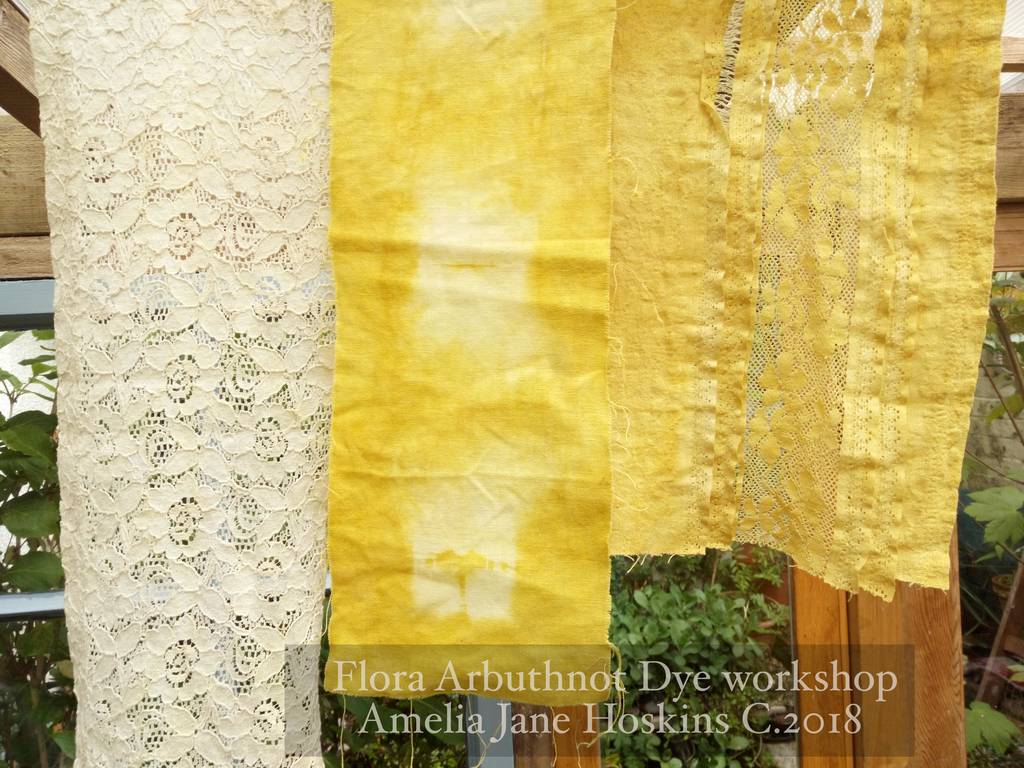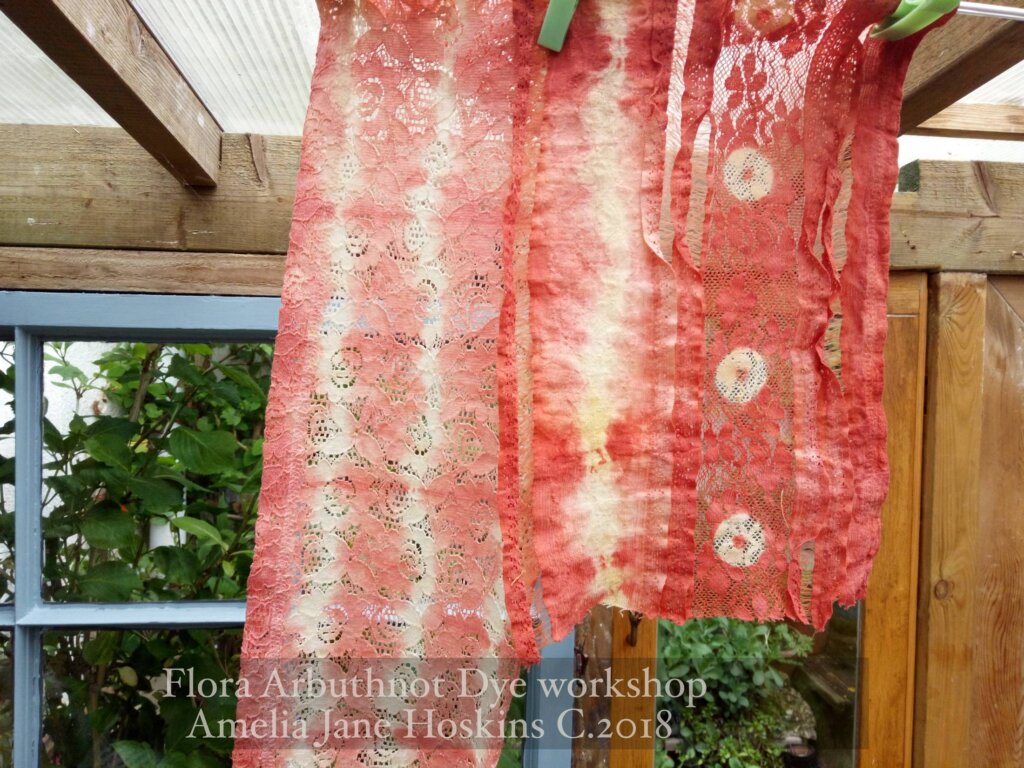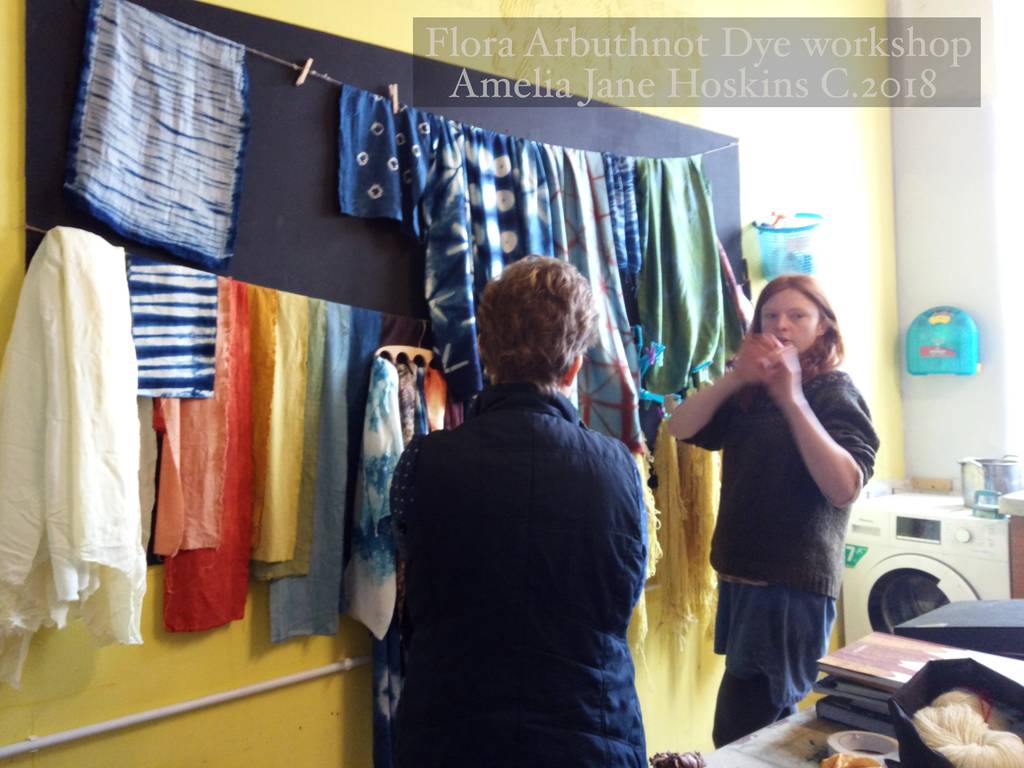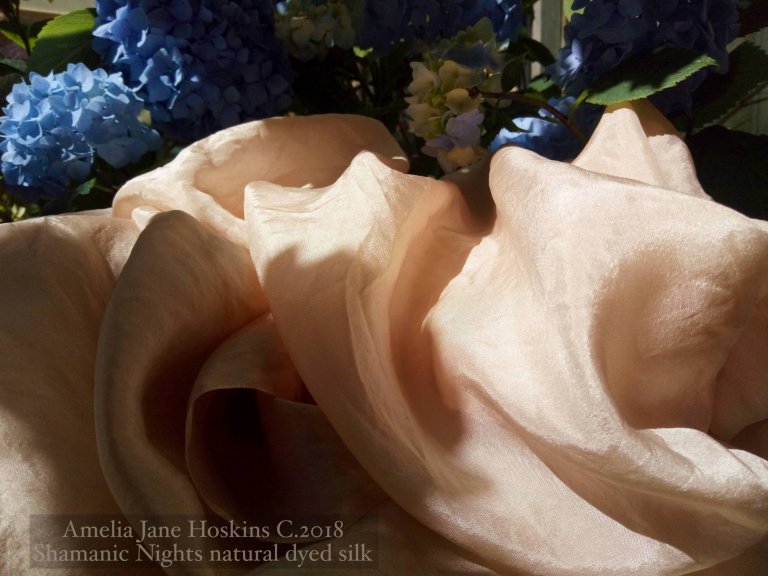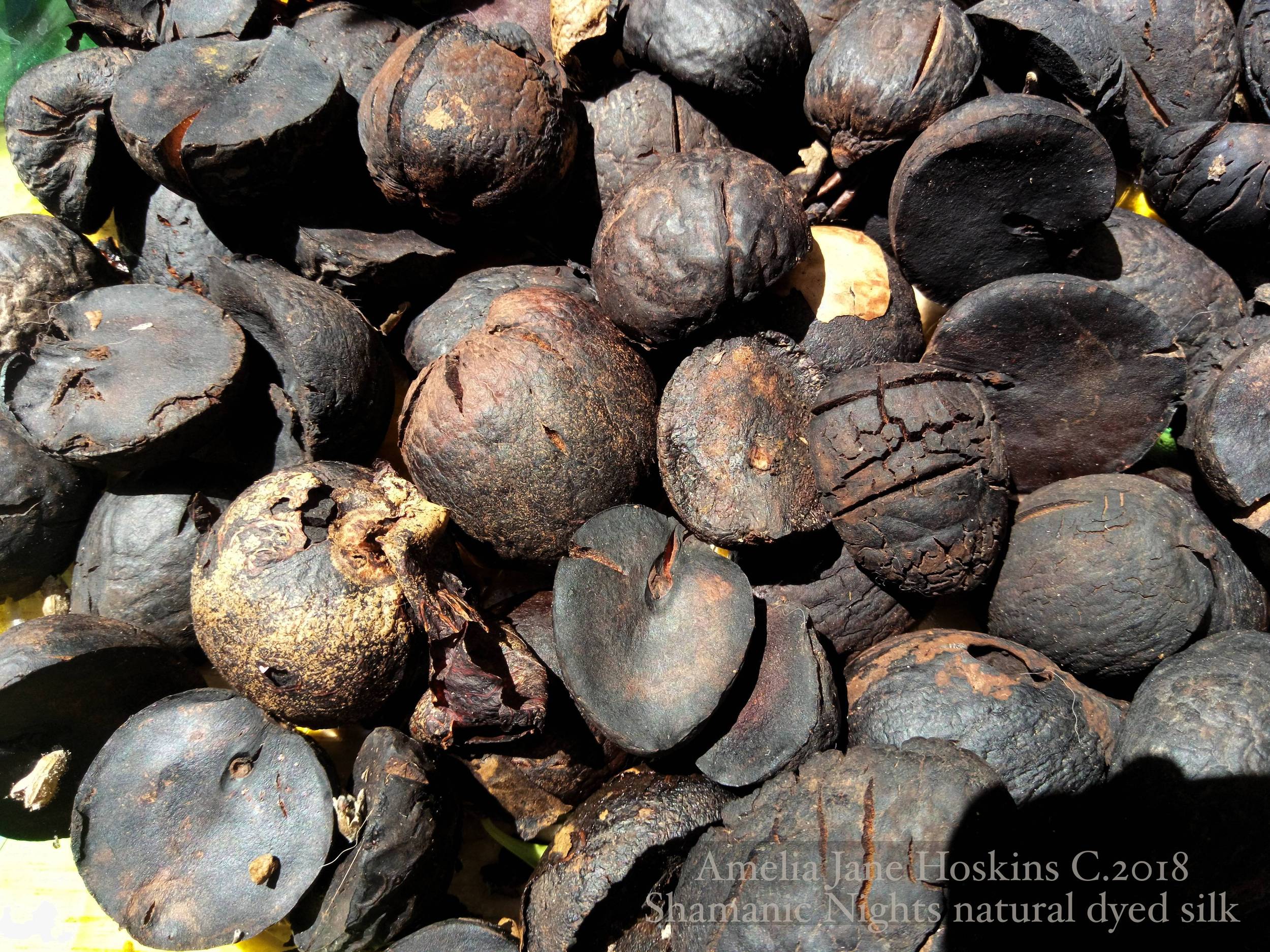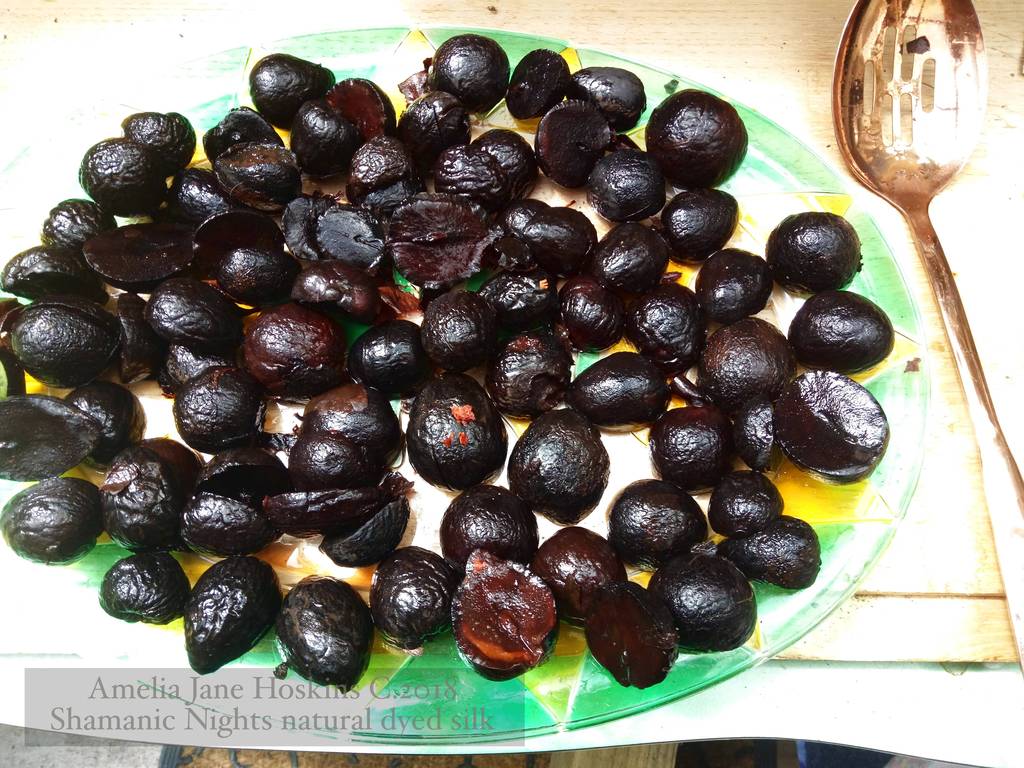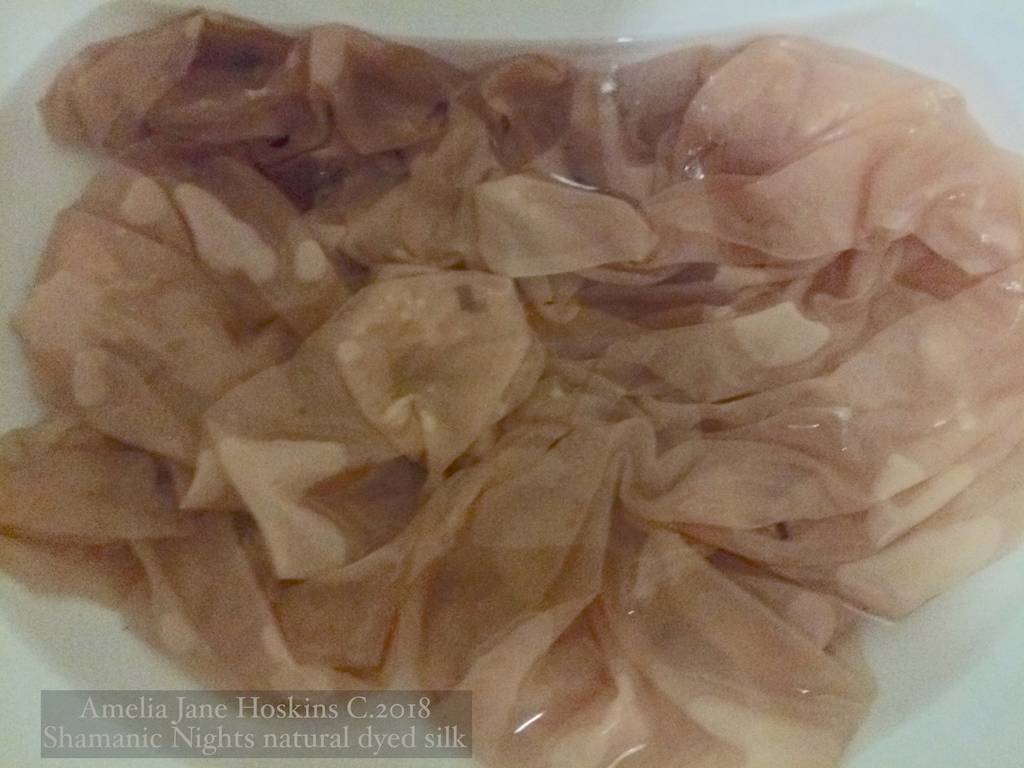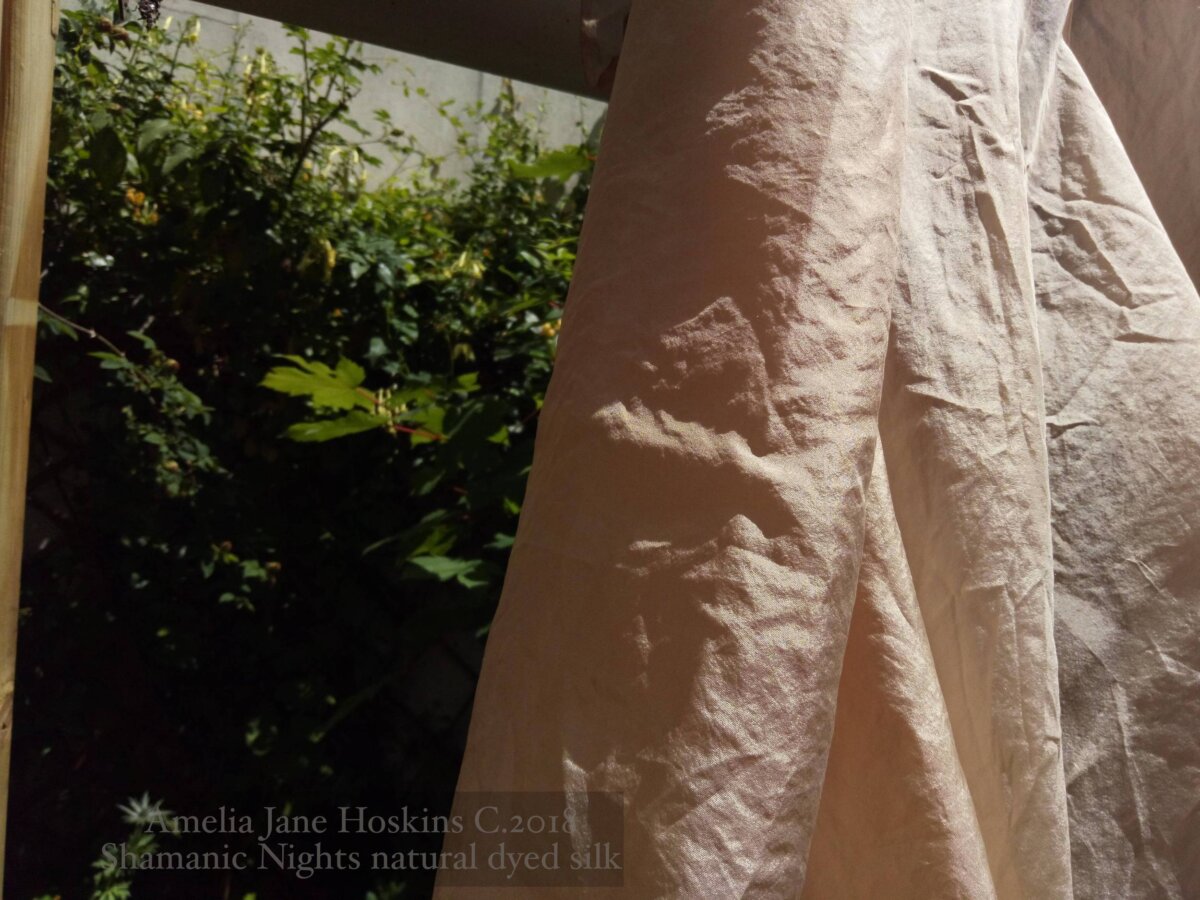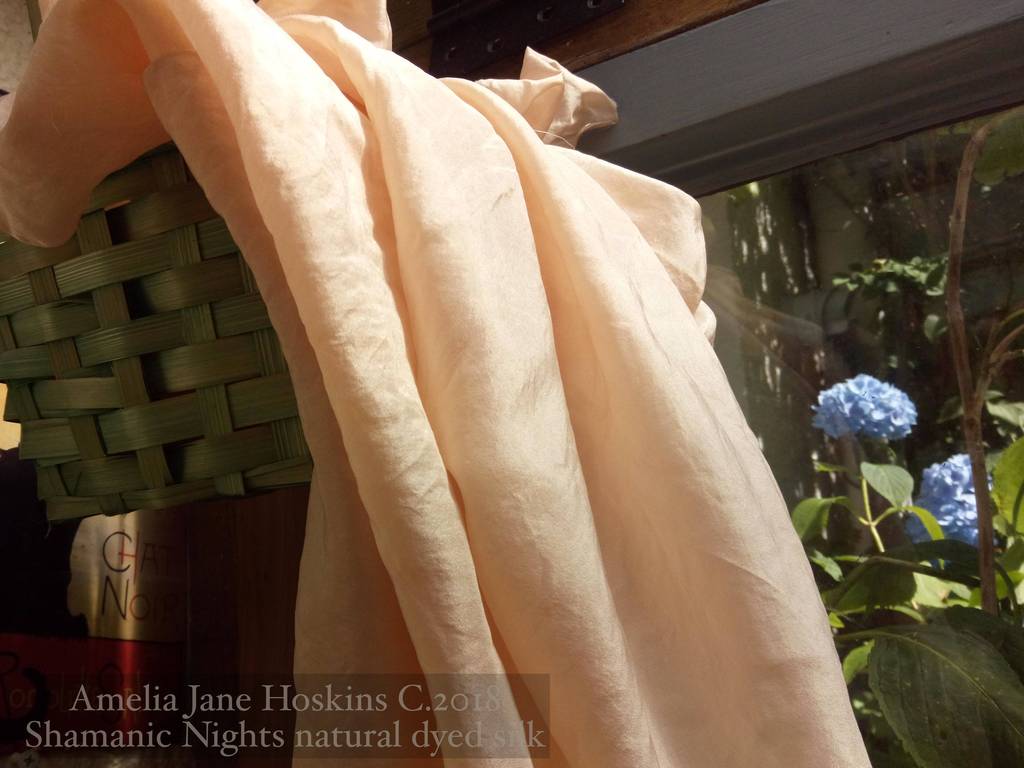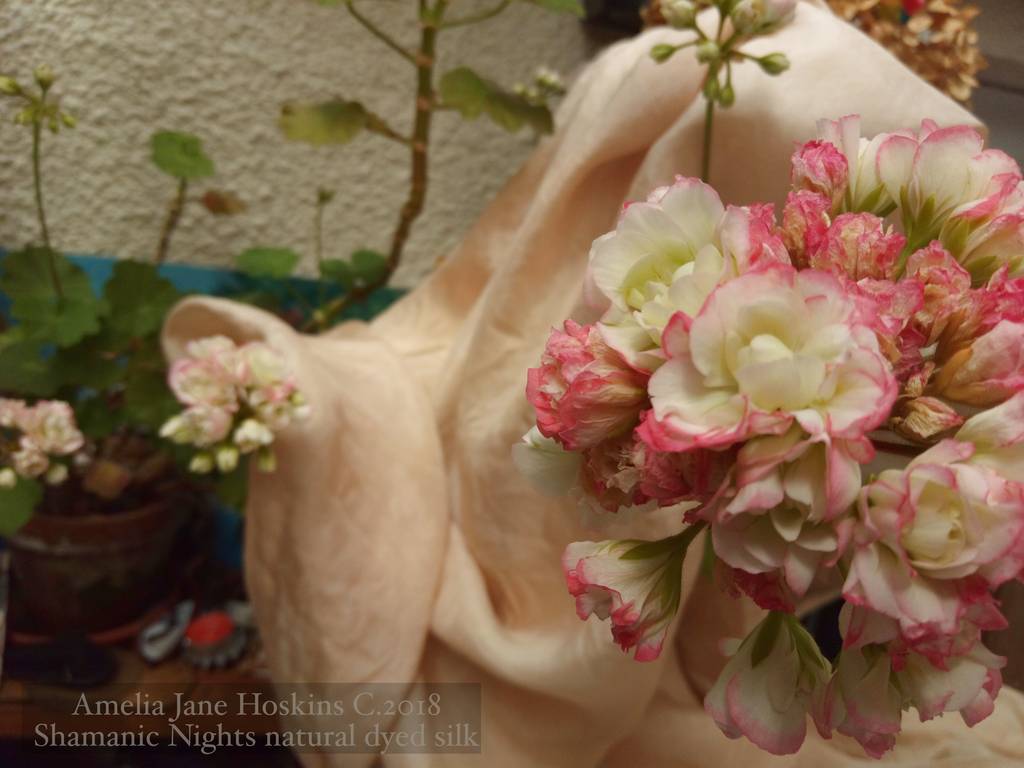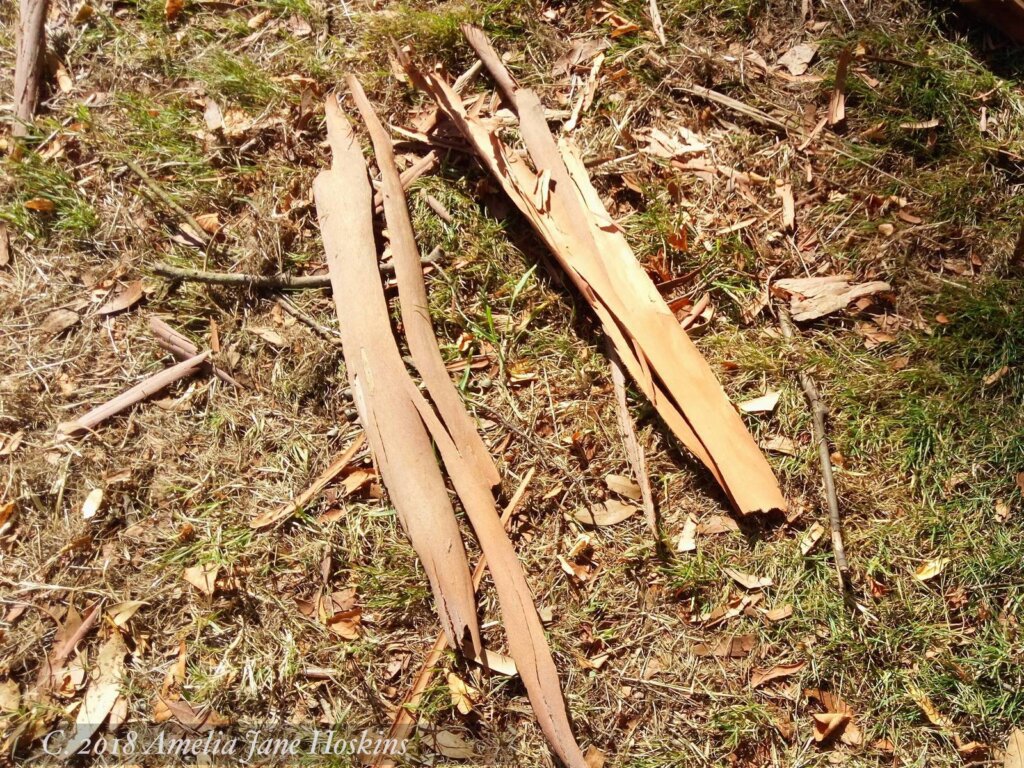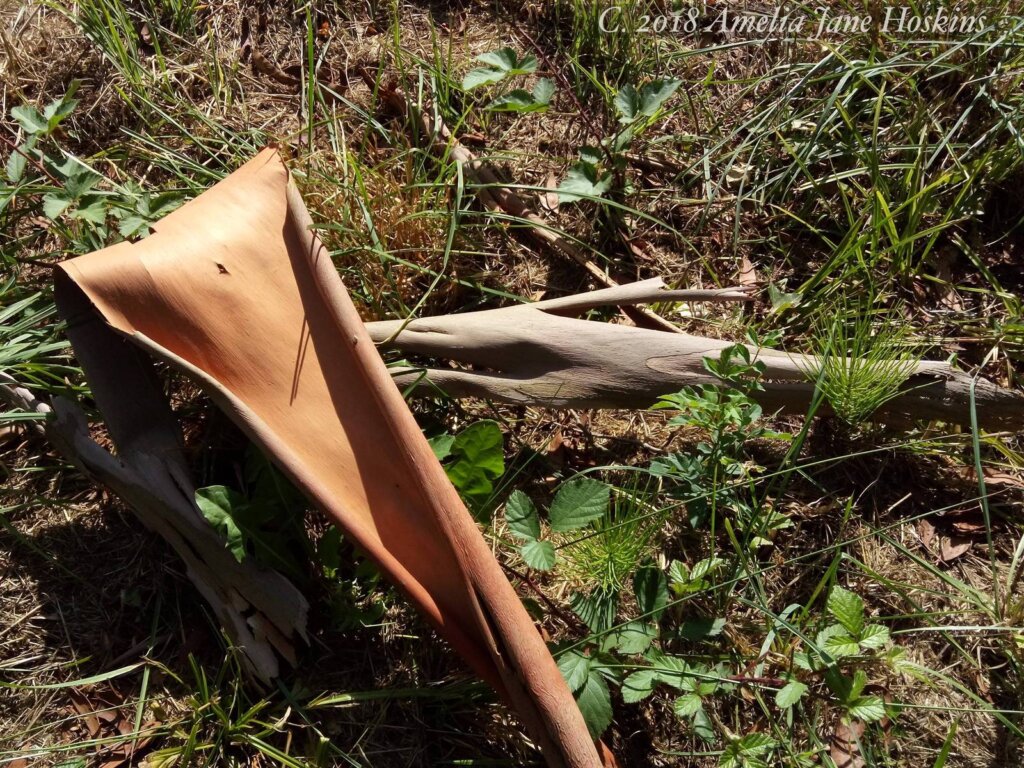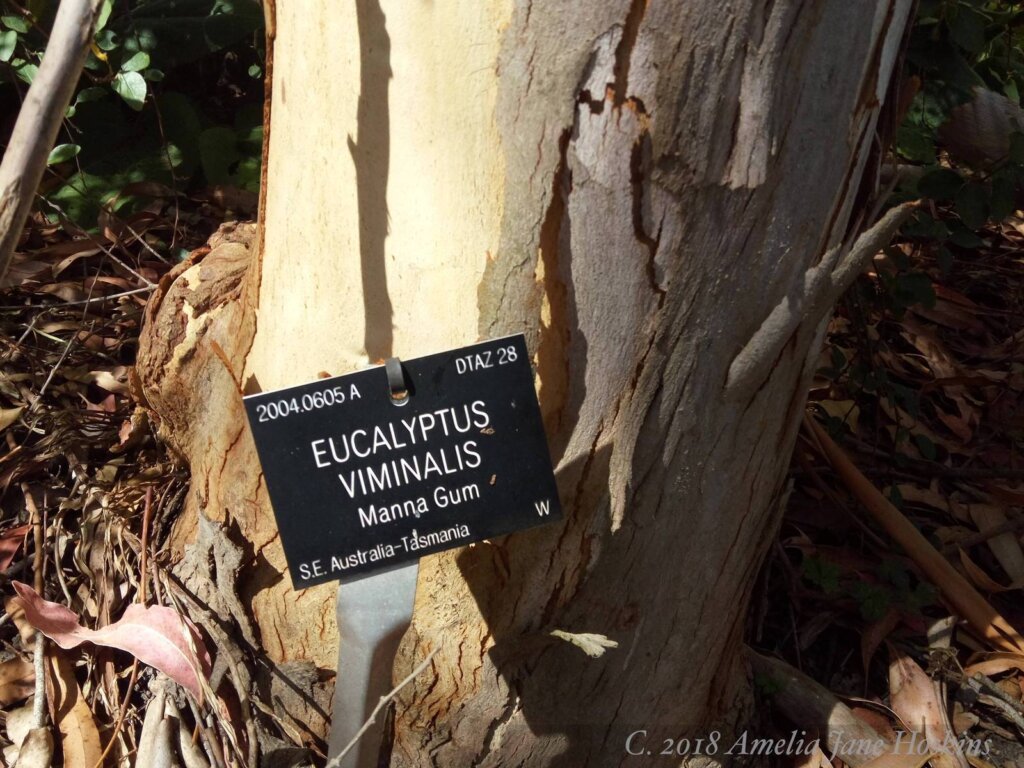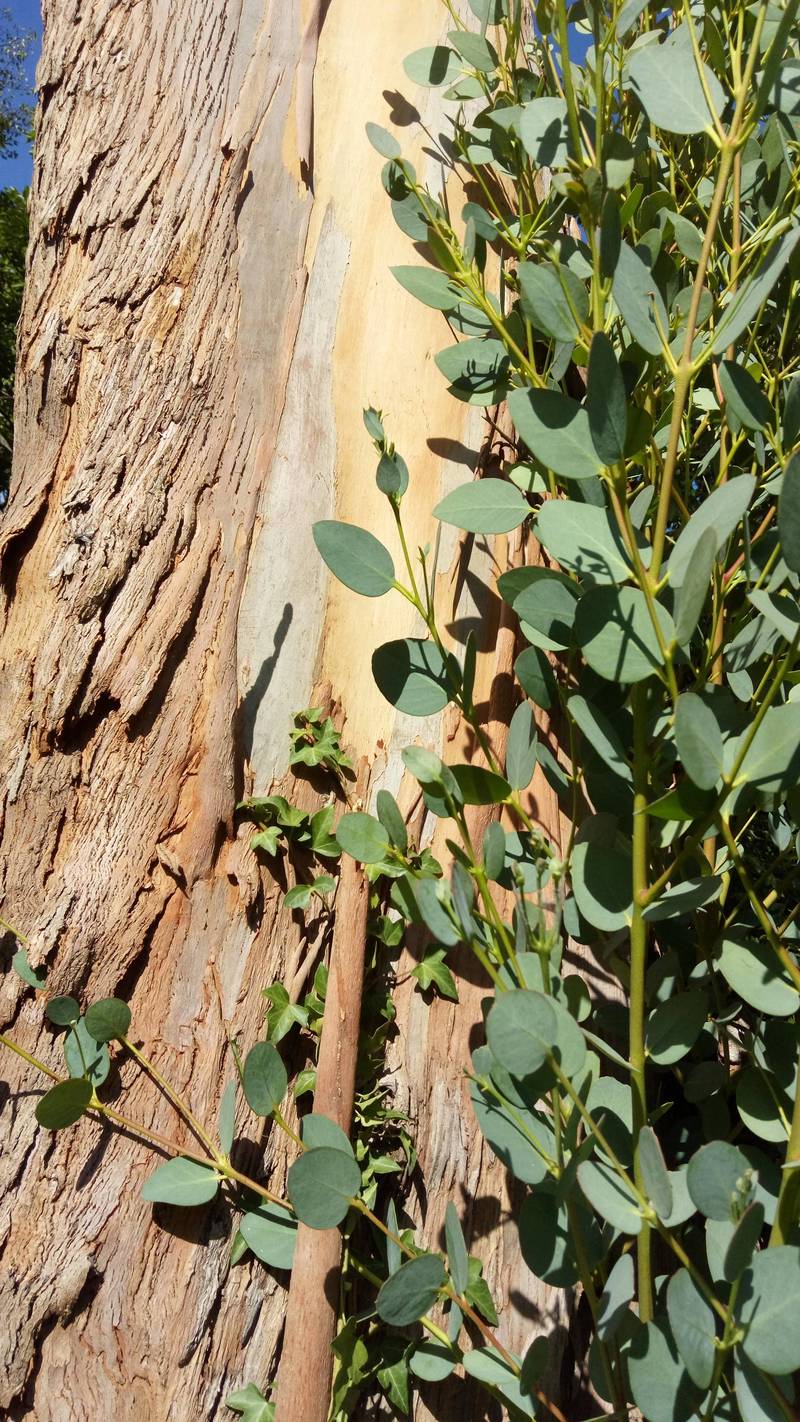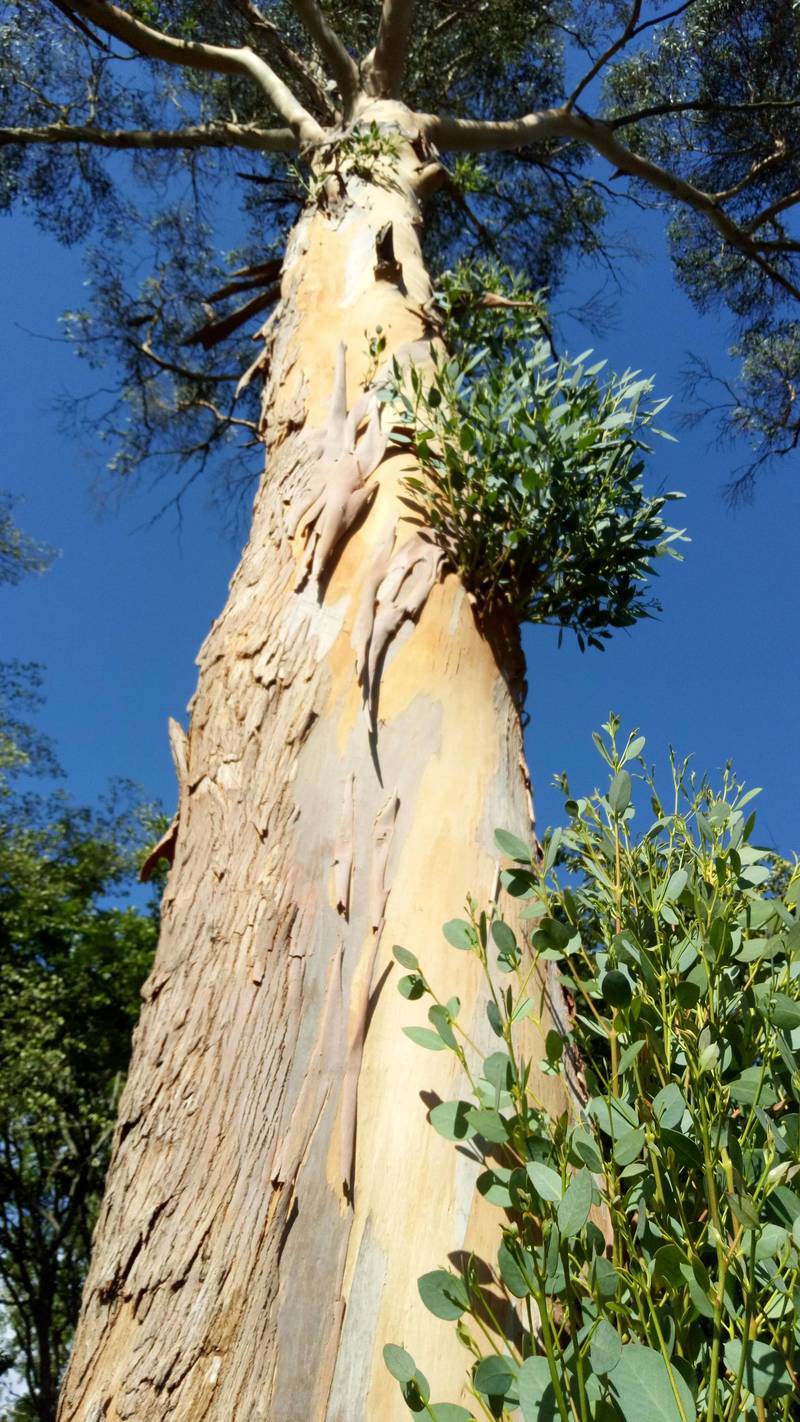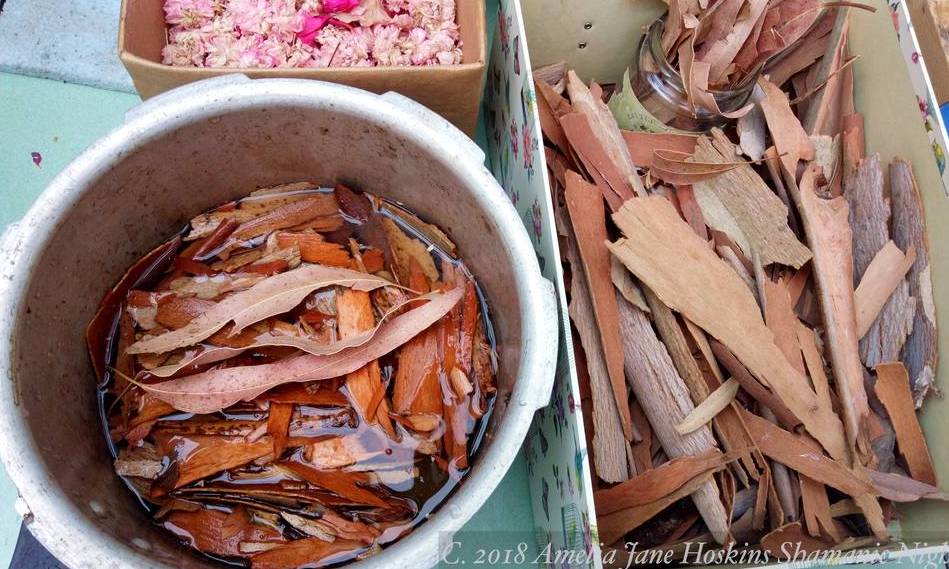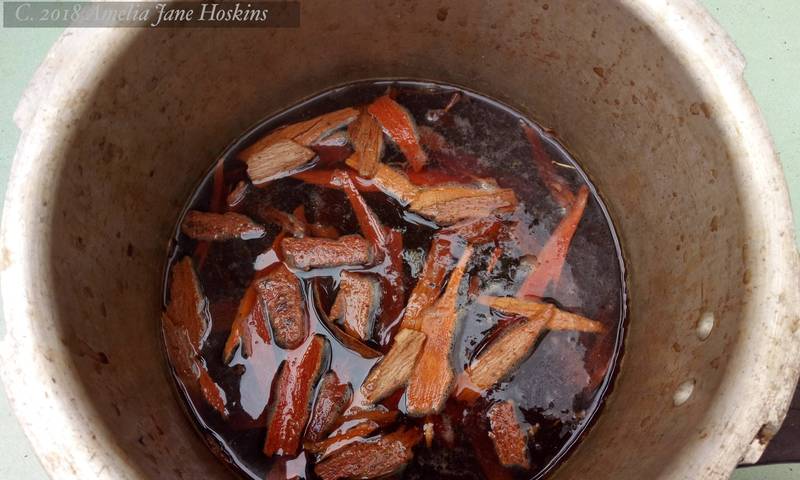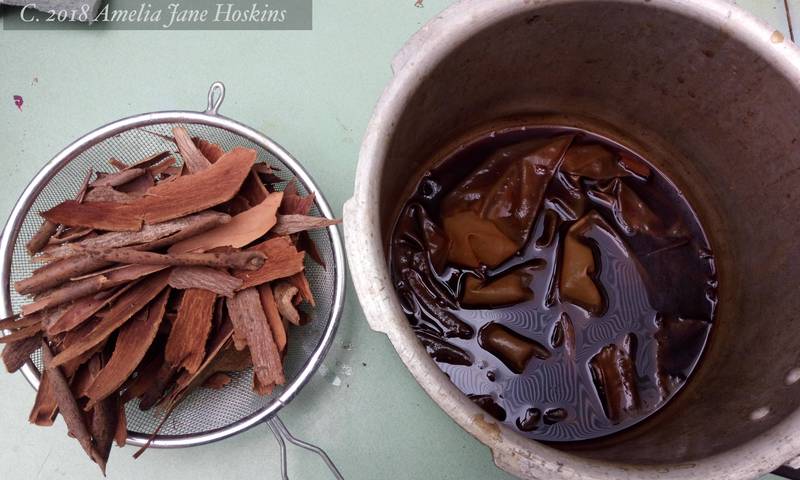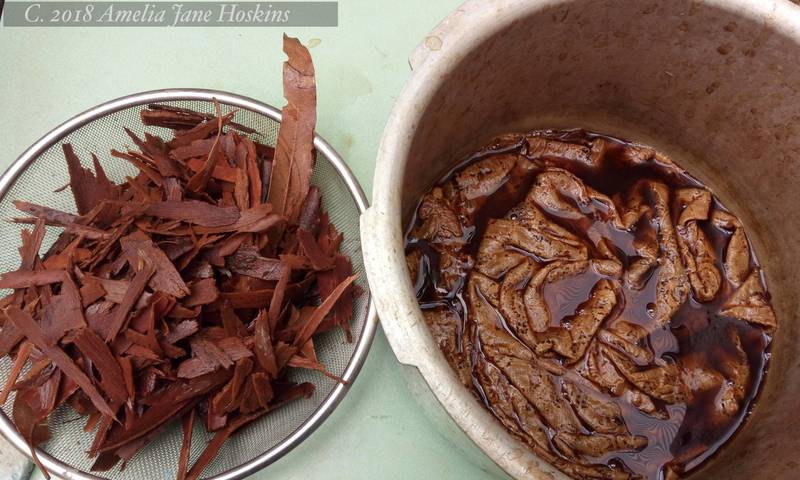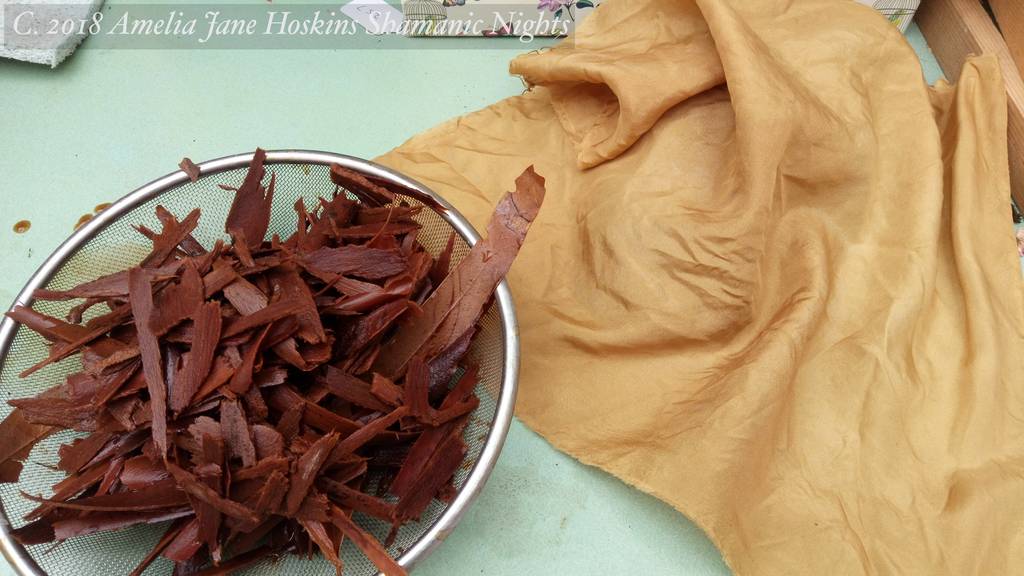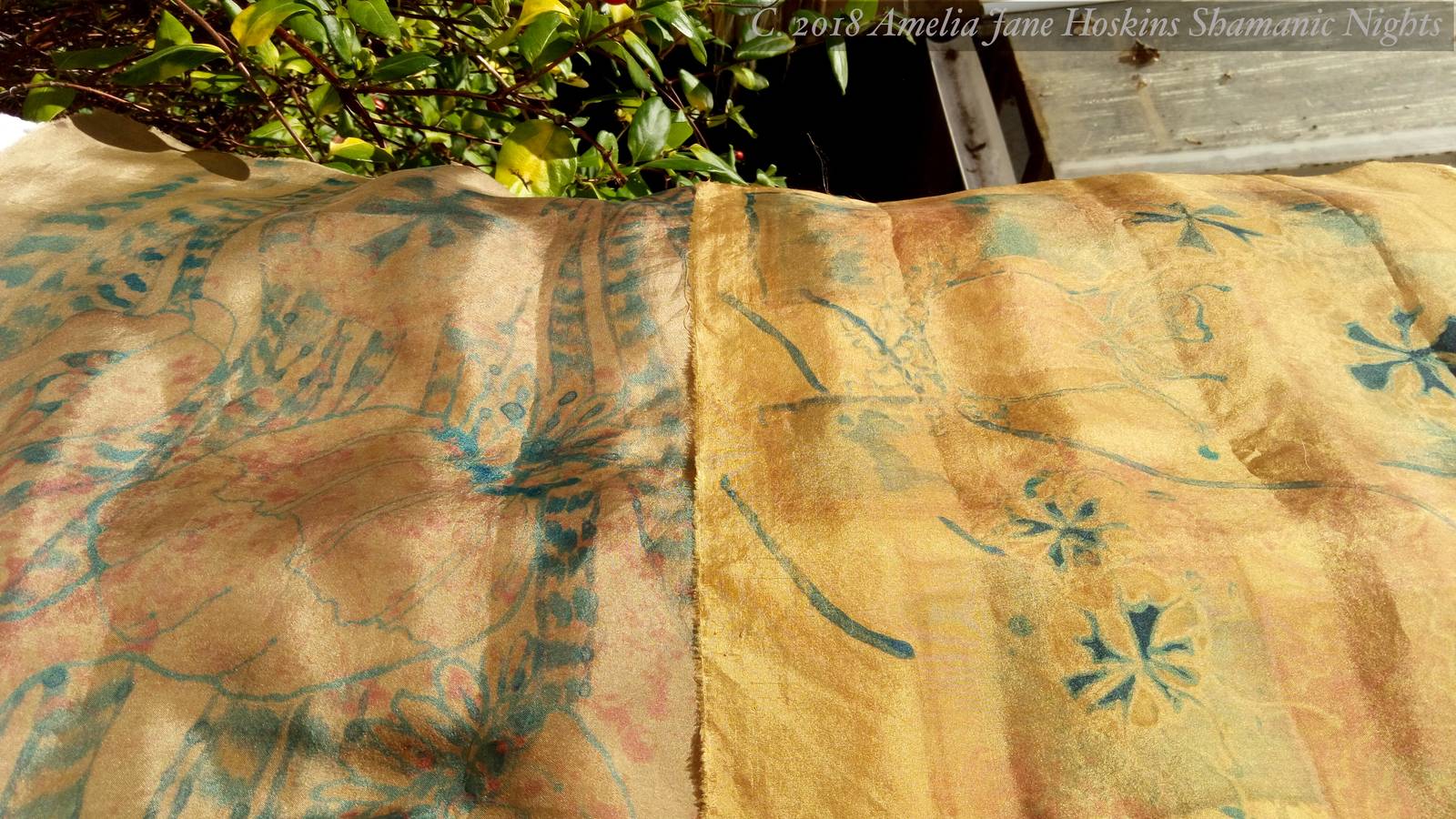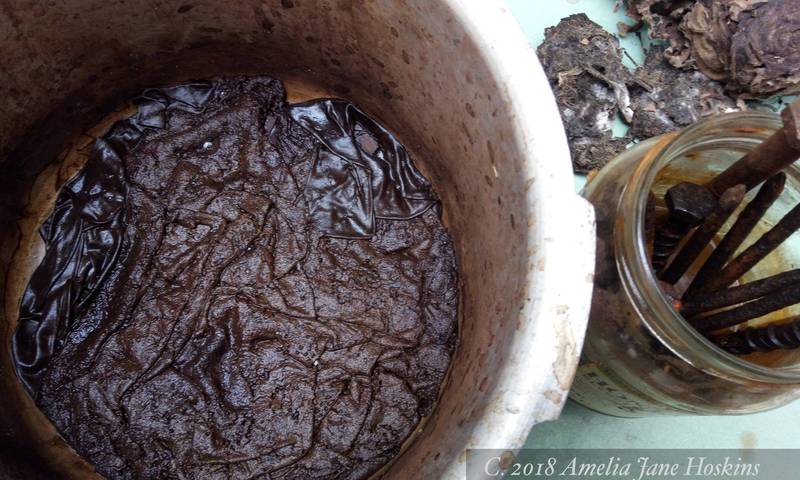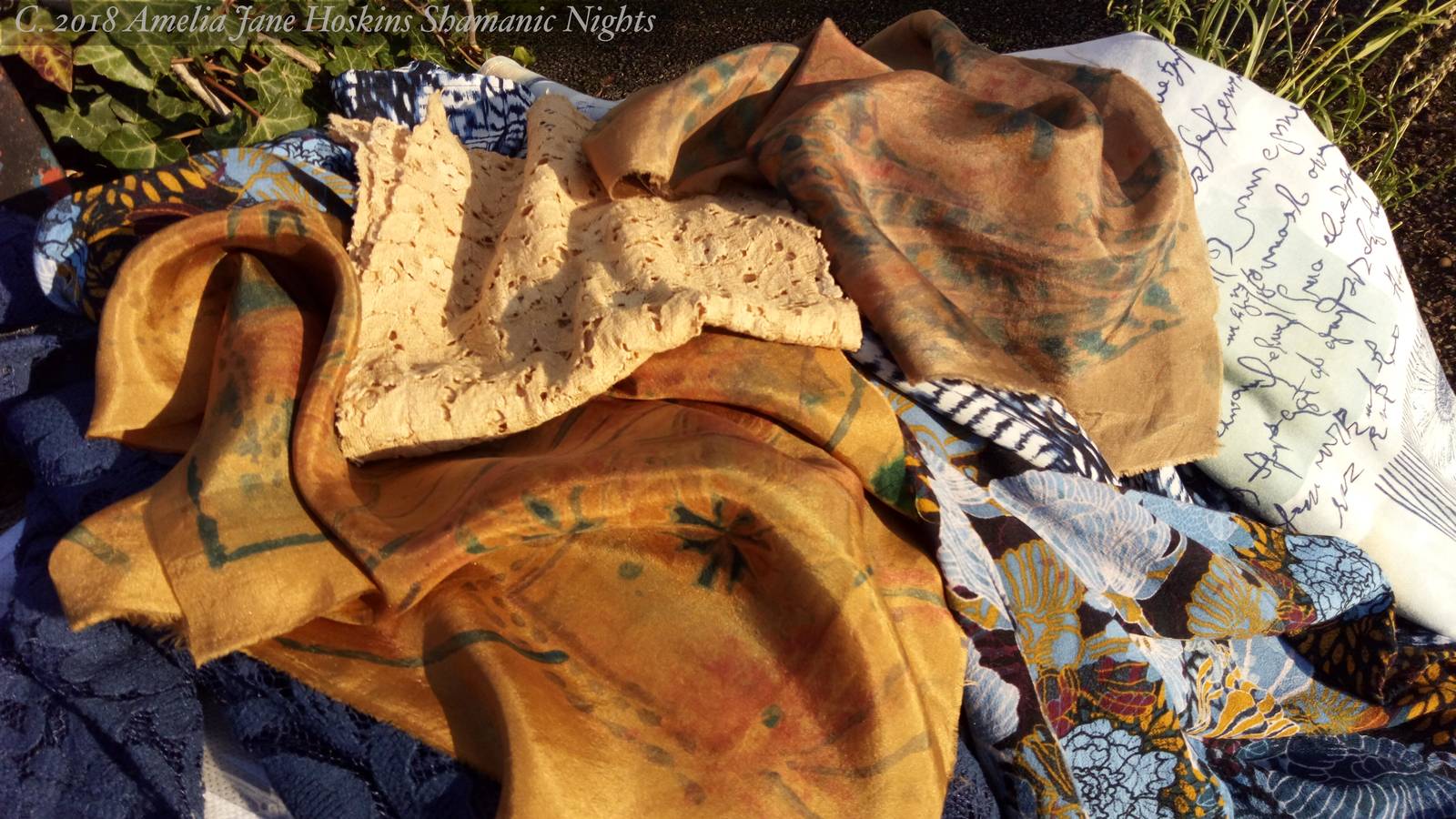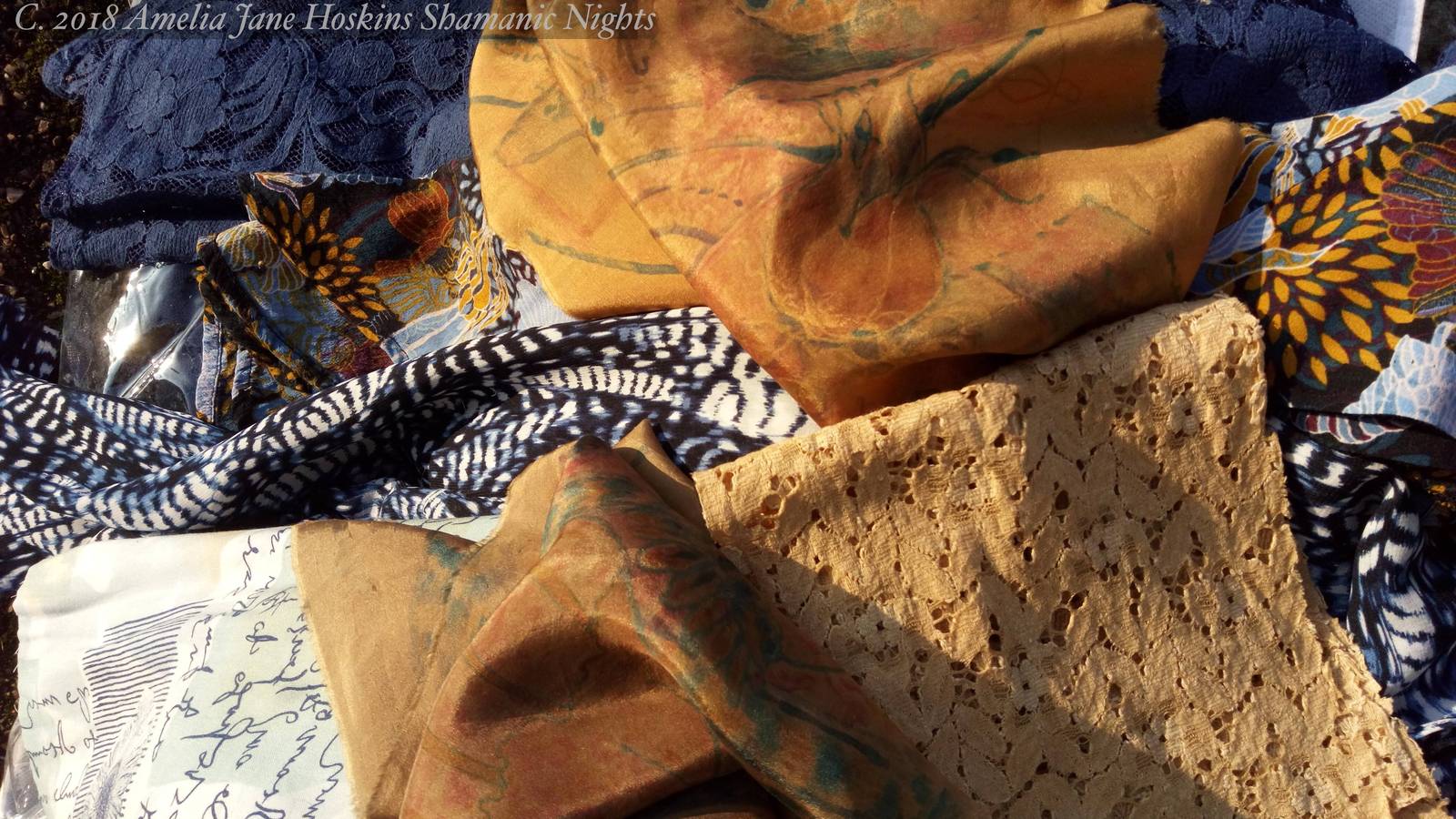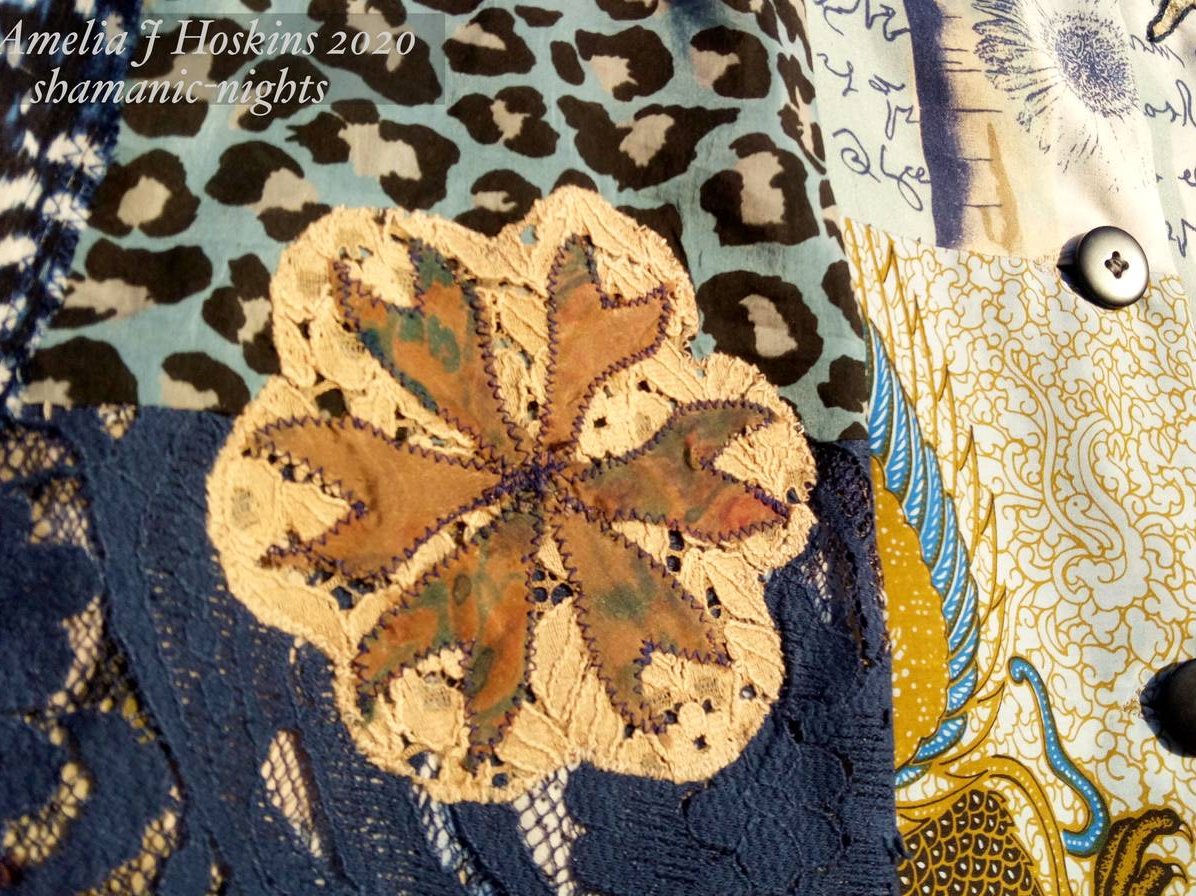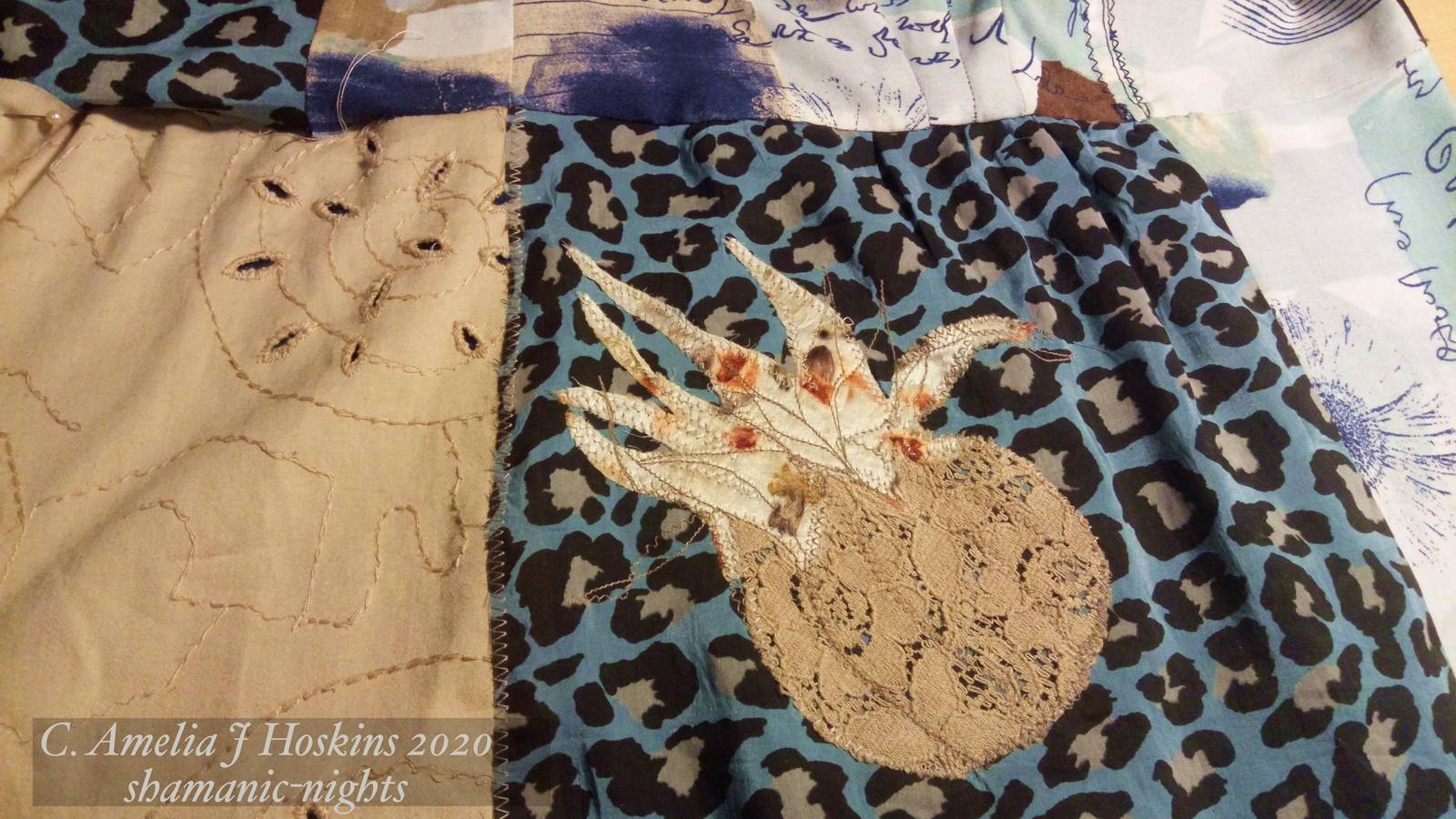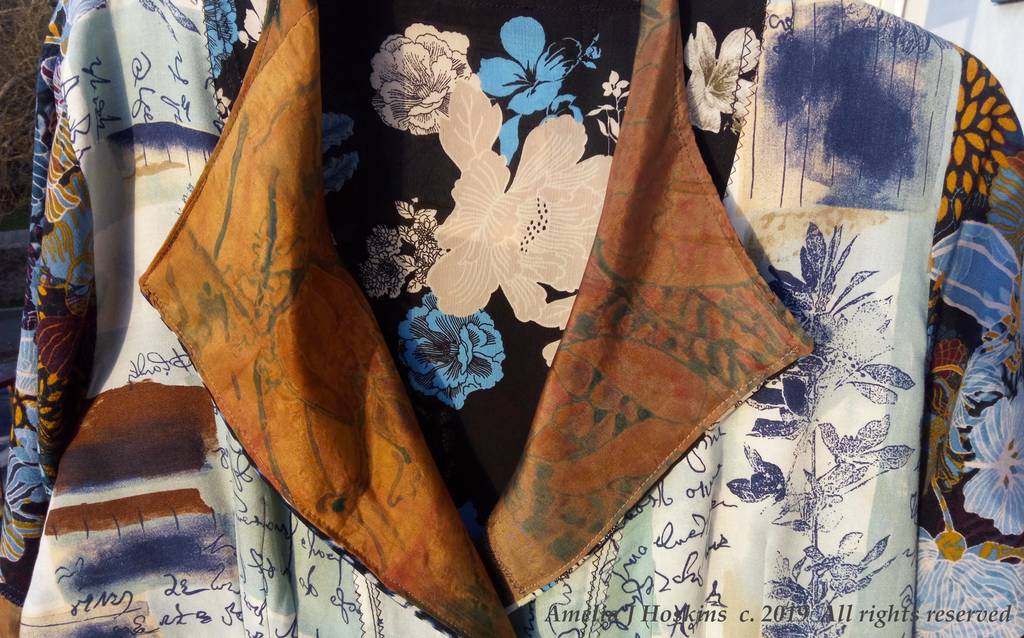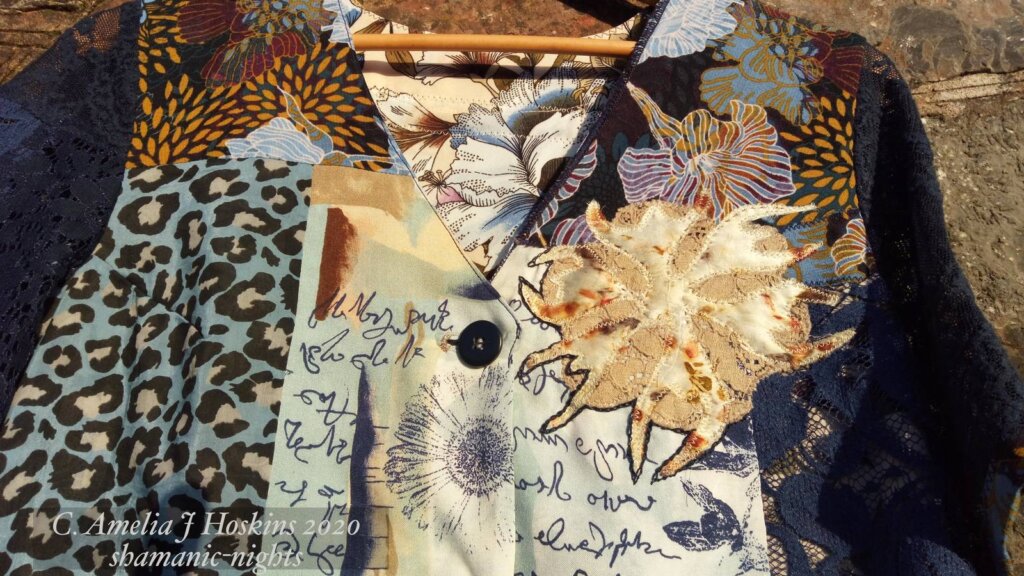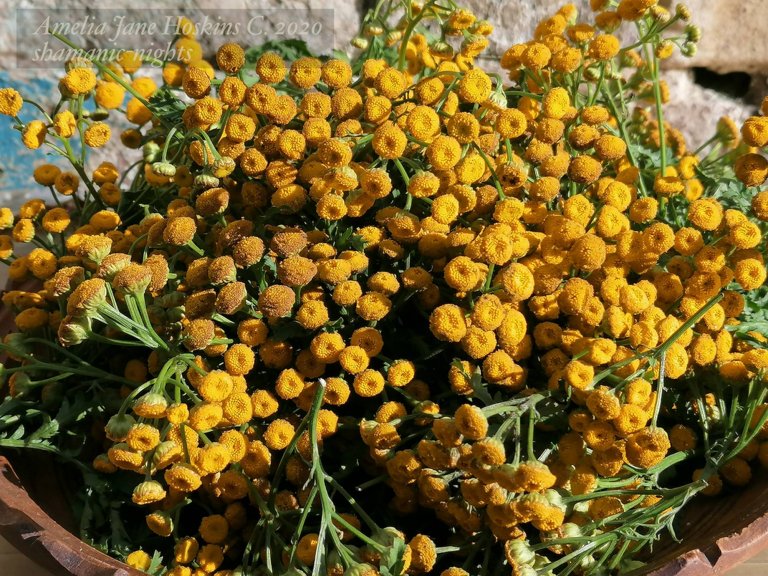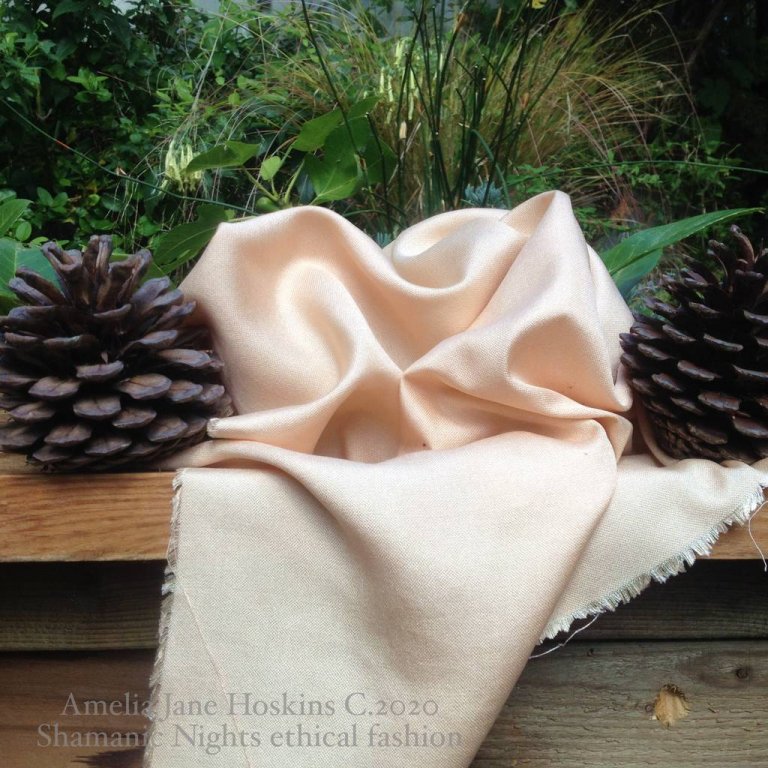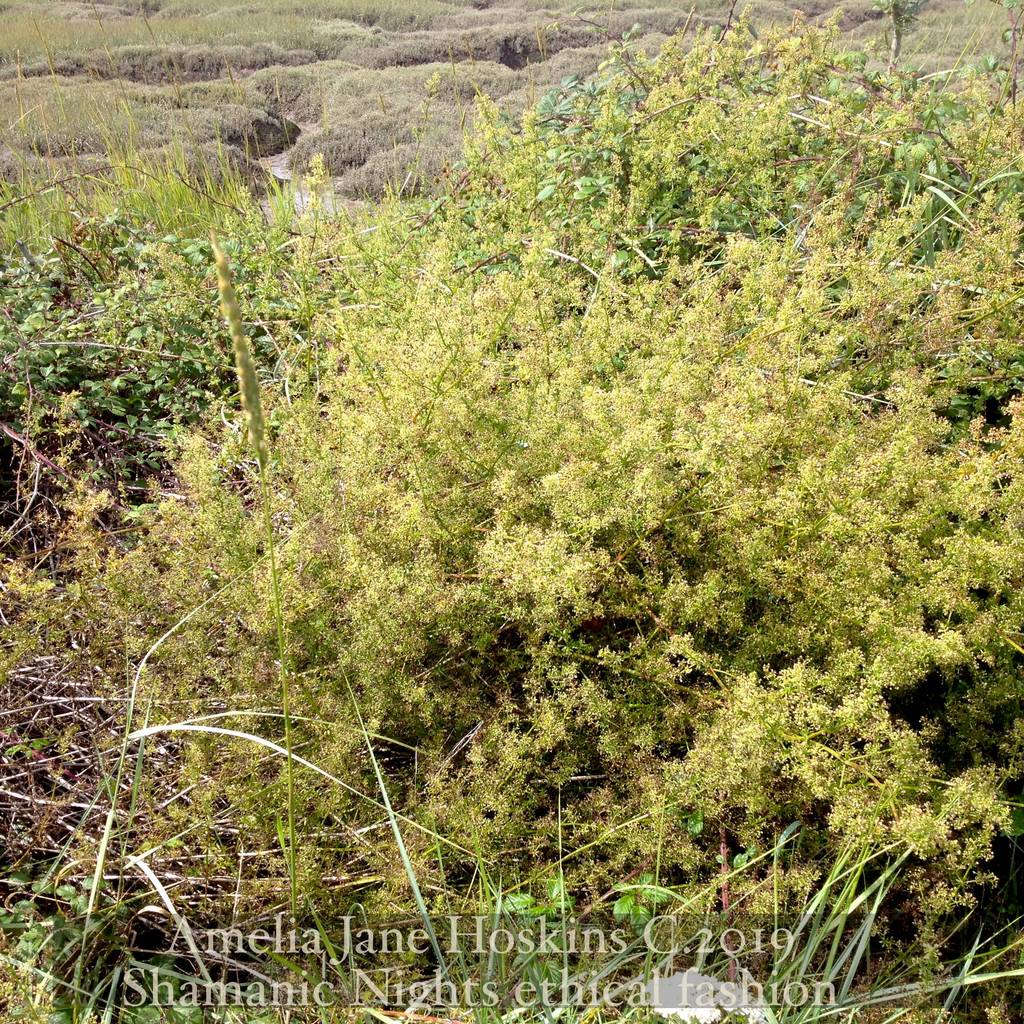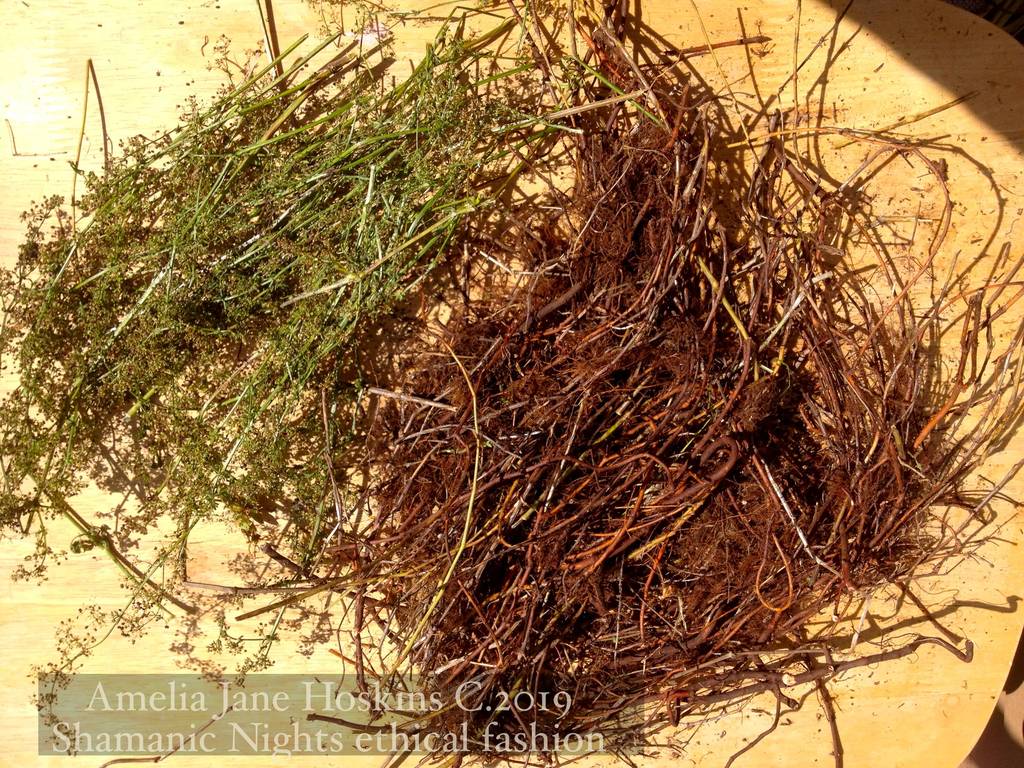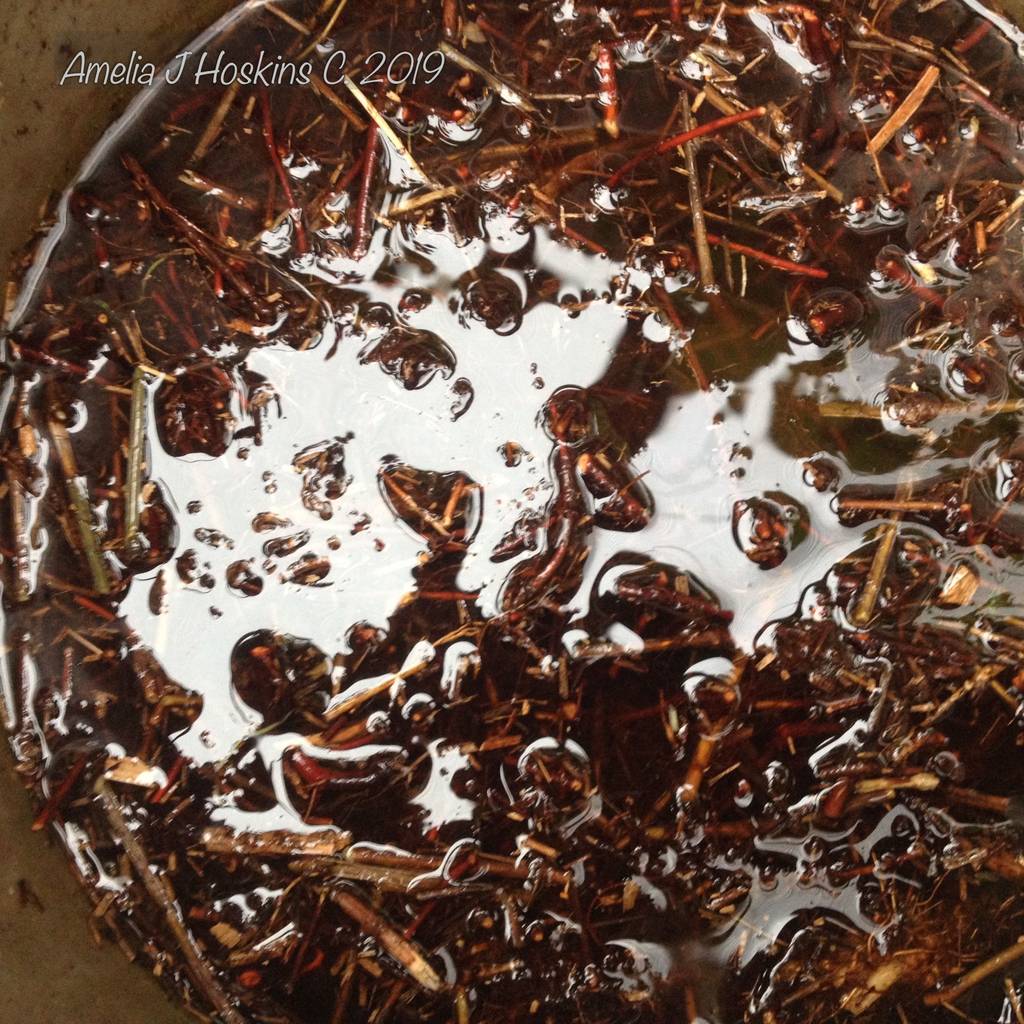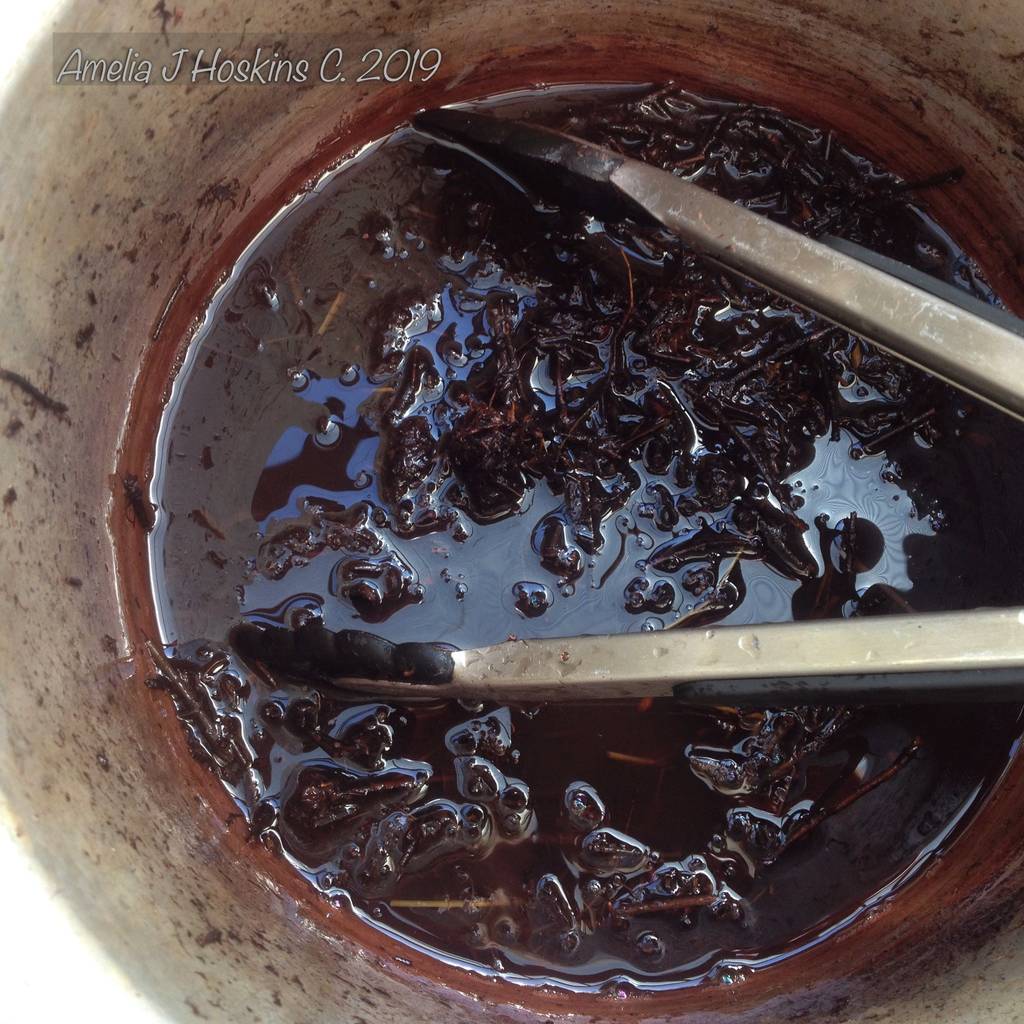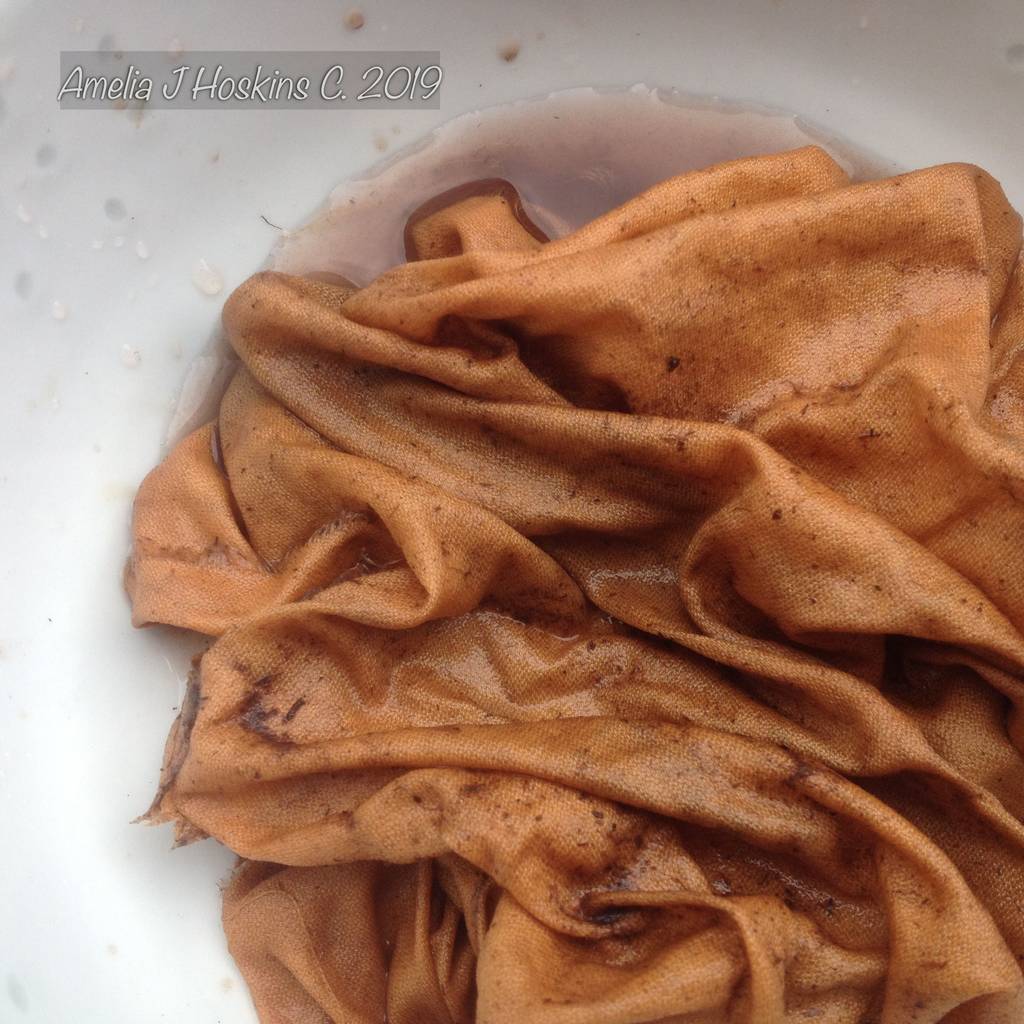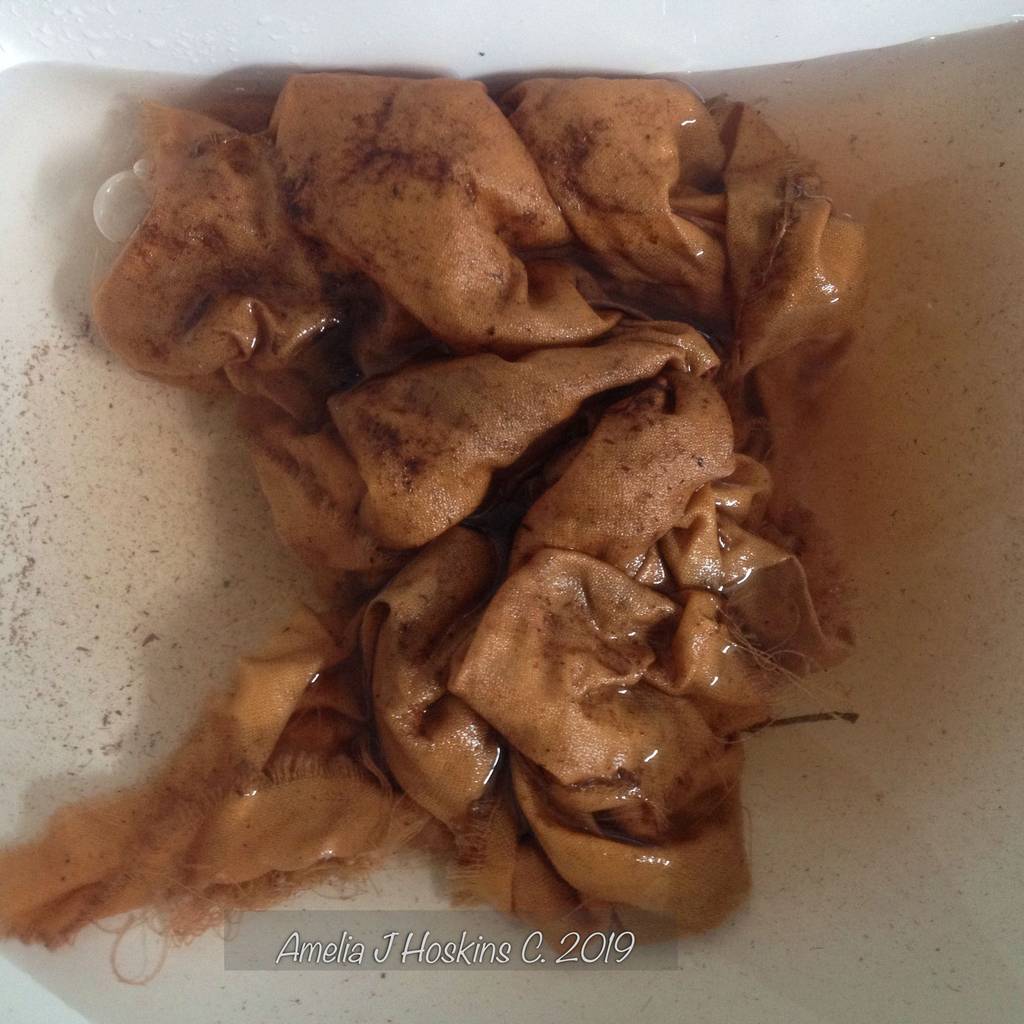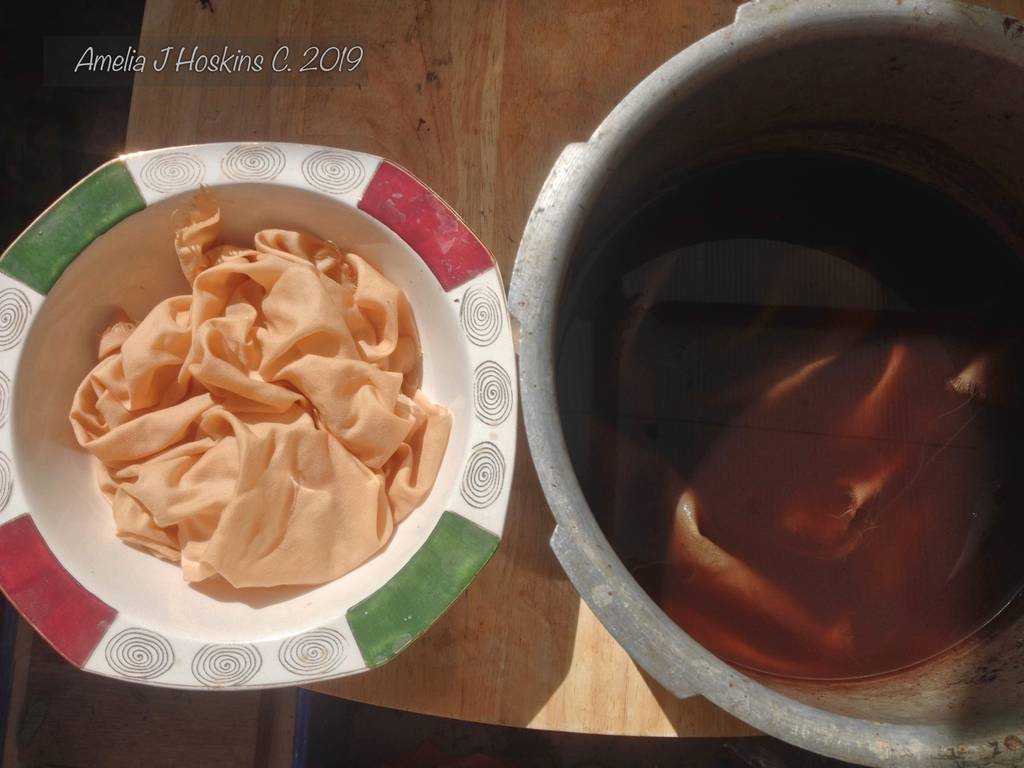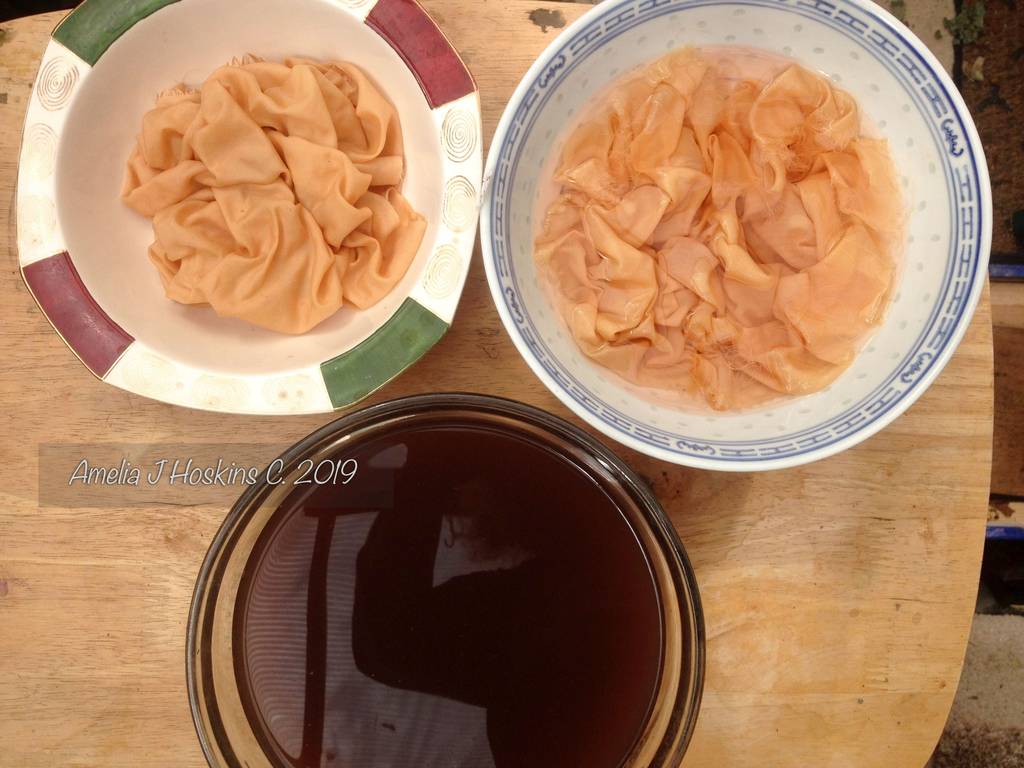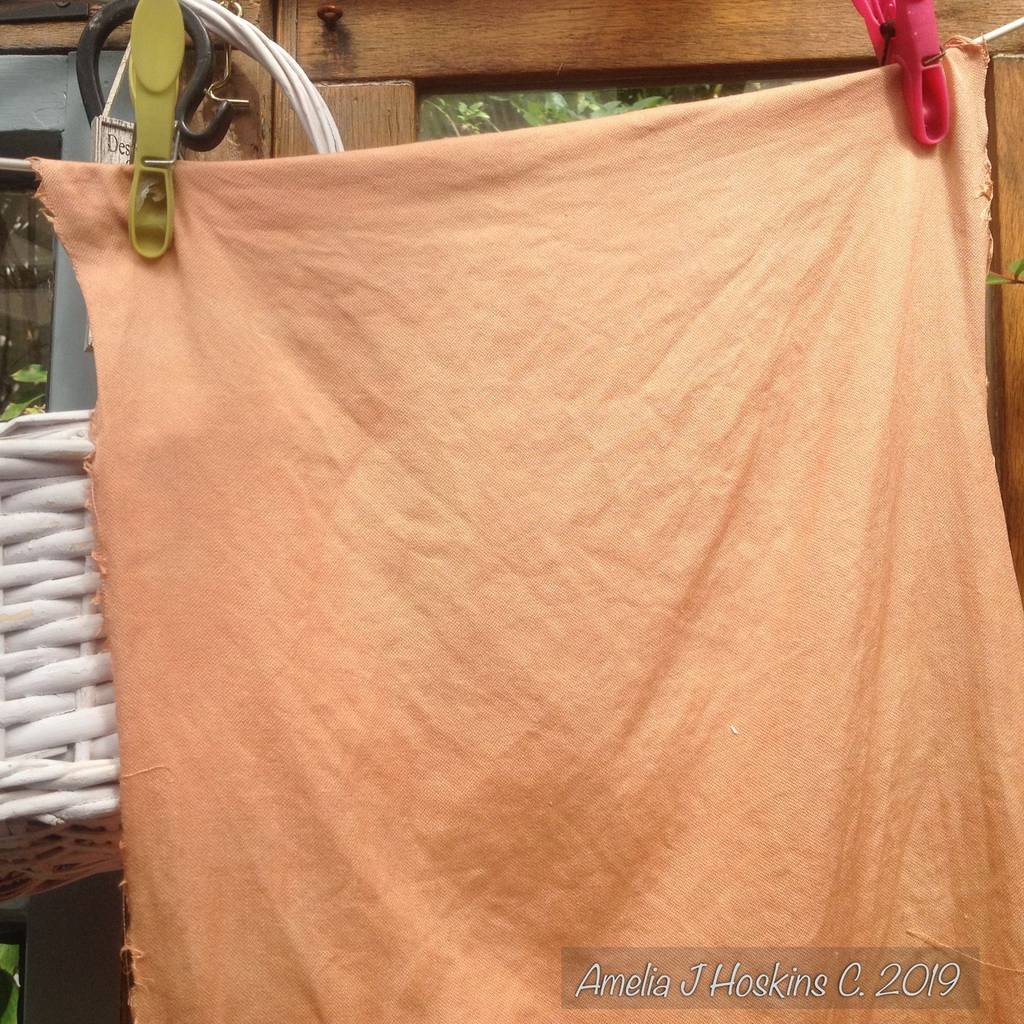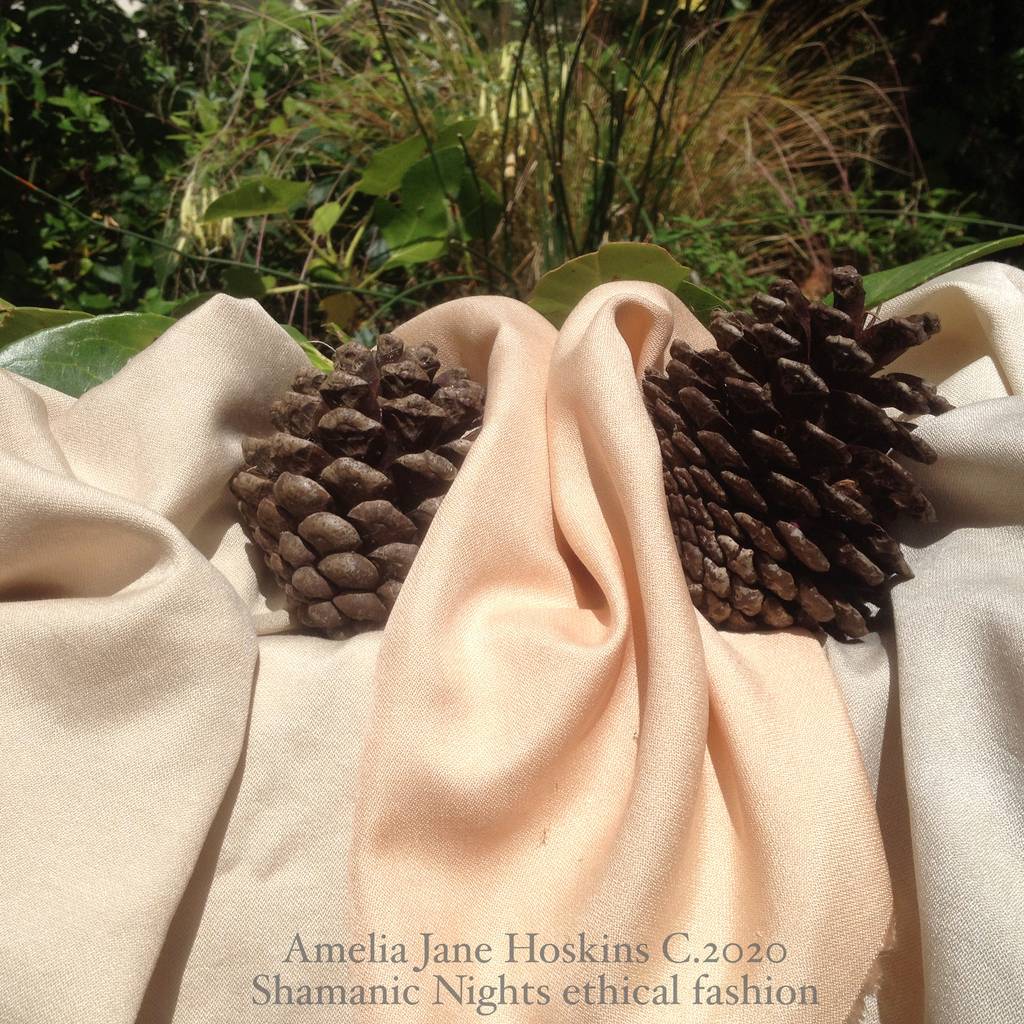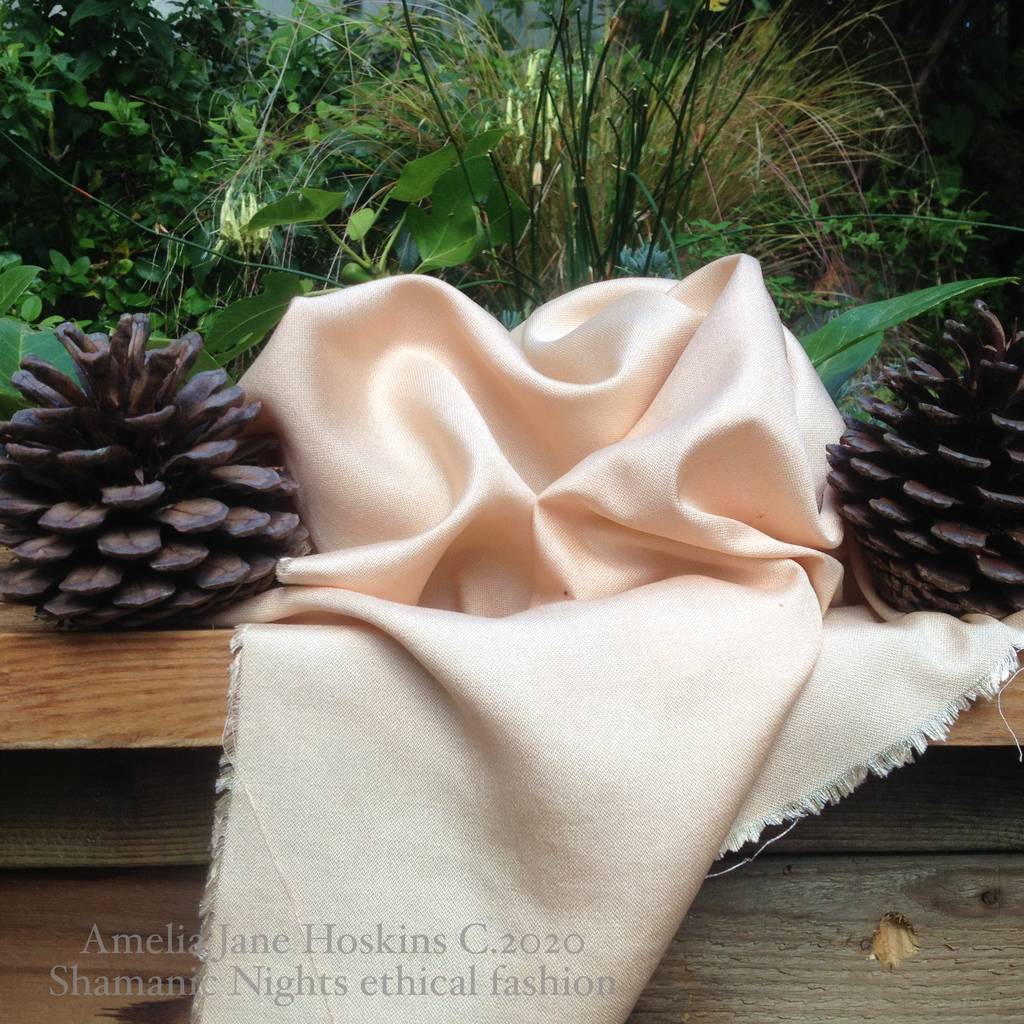Experiments silk bundle dyes 2024
4 BUNDLE DYE SESSIONS overlaying different plant material
2024: My first experiments with bundle dye and eco printing. The mystery of natural plant dyes is intriguing and fun to try many plants to see what happens. Even white rose petals can produce some shape outline. Images of multiple steaming into Ahimsa silk which is thicker than Habotai, a bit like cotton. [Ahimsa - peace silk where the silkworm is not boiled].
Flowers arranged on Ahimsa silk: Mallow - Linaria lilac - Gladioli purple - Bronze Fennel
Parcel covered with clingfilm for steaming. Foil covered, wrapped around large rose tree root which rests over steam pan. I vary processes: open steaming 2-3 hrs or closed lid in a trivet for an 1.5hr
Linaria was disappointingly brown, as had previously dyed blue on golden Habotai. Possibly a light vinegar spray caused browning.
[One piece mordanted in alum powder; one piece in soya milk. Soya produced nothing so subsequently washed and soaked in alum for Sessions 2-4]
SESSION 2: More plant material
Dahlia leaves - Mallow dried and fresh - sprinkled Linaria - Woad seeds - Geranium petals - Gladioli purpurea - 3 Antirrhinums, -1 Nasturtium - white rose petals - 2 Queen Anne's lace - Bronze fennel
Two silk layers [previously mordanted with alum] were sprayed with white vinegar before folding into a parcel. Sometimes I roll fabric up, sometimes I fold; all experimental. Parcel wrapped tightly around the steaming stick.
Antirrhinums worked the best, and probably too strong a vinegar spray turned them brown, as they have come out violet before. Gladioli DOES print, if feintly. All the material left some mark: even the woad seeds were quite dark. Dahlia leaves were surprisingly pure green, not browned ! and well defined: worth pursuing again with an iron modifier.
Small piece of Habotai silk added in the sandwich, to test on thinner silk.
The bronze fennel leaf is promising, as a print or all over texture background: Brown on alum mordanted Ahimsa silk. On Habotai mordanted silk - turned bright green AFTER washing with soda ash. Useful as an all over landscape texture.
Note: Fennel may make a good green dye bath with soda ash.
SESSION 3: More plant material overlay experiment
Mallow - Woad Seeds - Bougainvillea - Himalayan Honeysuckle Leycesteria Formosa
Variations of steam processes to see if any way works better. Parcel wrapped in aluminium foil OR clingfilm -
Wrapped, tied on stick in open pan OR tied in a round with steamer lid on. Silk has previously been burnt slightly when using foil, so still experimenting.
Ahimsa silks after steaming, washed, pressed: Both pieces are identical. Pieces will eventually be used in a garment, but not colourful enough at this stage, only interesting as layer on layer experiment. Identifying multiple colour marks from photo of plant placements. New blue-violet effects at top (possible from woad seeds); orangey lower blotches from crimson Himalayan honeysuckle. Bougainvillea show as identifiable triangular grey-brown shapes; so worth pursuing again on pure white, and modify with iron. Dahlia green prints faded a bit this time.
SESSION 4: To get some colour!
Hawthorne leaves - Privet - Honeysuckle crimson sepals - White Rose petals - Blackberries.
Blackberries were placed on the rose petals. Second Ahimsa piece laid over. Then pastry roller used to squash the dye out. Due to strength of colour, it could have done several pieces at once. Rolling out in pattern directions is also an idea, with small rollers, or pre folding fabric to form geometric mirroring. Much purple dye lost to the backing cloth.
Sponge dabbing spasmodically of water, from woad seed soaking, with added sprinkling of iron sulphate.
Rolled parcel to coil, tie and suspend over trivet in steaming pan. Coil sits on two pieces of Fuscia branch, to prevent metal heat stains. Branches were scraped of bark which was added to the plant material above.
Two Ahimsa silk pieces, upside down to each other. To break up the iron dulled areas, and add interest, circle designs brush drawn-over with lemon juice show discharged LIGHT effect through 'greyed' (iron) background. Lemon brightens blackberry-pink and discharges greyed background to cream. Silks were previously dyed a light golden colour, so the iron may have interacted with that too.
Embroidery Resolution
To give some form to the blackberry dyed blotches; triskele design shapes were painted in lemon juice to embroider over. Abstracted rose petal shapes embroidered over colours. Overall effect is 'antique'. This will work with a kimono lining already in stock; with pink colours similar. Enough for batwing sleeves. Purple silk can be added, along with other stock prints with pinks. With the two pieces of ahimsa, enough for each side. Useful to dye two pieces together if garment making.
- Hawthorn Comfrey St Johns Wort wool and silk 2023-24
- All Natural Plant Dye Processes
- Hawthorn Berries Three Rivers Dyed Silk
- Eucalyptus bark dyed silk
- St-Johns Wort Plant Collecting and Dye Bath
- Alder Tree Cone Dye
- Walnut Husks Dyed Silk
- Silk dyed with Comfrey leaves
- Logwood Dyed Silk
- Mullein Dyed Silk
- Avocado Pits Dyed Silk
- Tansy dyed silk
- Ladies bedstraw Dyed Silk
- Comfrey Soy Waxed Roses
- Flora’s Plant dye foraging workshop
- Dye Plant Collection

